




















































































The annual Northern Ireland Housing Conference has become well established as a major annual event for all those with an interest or role in housing in Northern Ireland. As with previous years, it will have a genuine, in depth understanding of the key issues via a high-level panel of local and visiting speakers and will bring together key stakeholders to discuss the latest in housing policy and look at how we can fulfil the need for safe, affordable housing both now and in the future.
Speakers include...







Gordon Lyons MLA Minister for
Grainia Long, Chief Executive Northern Ireland Housing Executive
Loma Wilson, Director of Communities, Radius Housing
Nick Horne, Group Chief Executive, Wythenshawe Community Housing Group
Kate McCauley Chief Executive Officer Housing Rights
Alan Wyley, CEO EnergyCloud
Jan Sloan, Executive Director of Development and New Business, Clanmil Housing







Kirsten Hewitt, Director of Homelessness Services Simon Community
Chris Alexander, Chief Executive Triangle Housing Association
Alannah Carey Bates Service Manager, Trilateral Research
Tzvetelina Bogoina, Director of Infrastructure Delivery Northern Ireland Water
Seamus Leheny, Chief Executive Northern Ireland Federation of Housing Associations
Roger Henderson Network Investment Director NIE Networks
Mark Spence, Chief Executive Construction Employers Federation




The publication of the long-awaited Housing Supply Strategy at the end of 2024 – with an ambitious 100,000 new homes target – while largely welcomed, struck a similar chord to the various strategies coming from the Executive departments.
Mirroring the Health Minister’s three-year plan for health and social care launched in December, or the Justice Minister’s Enabling Access to Justice reform programme in the same timeframe, the Housing Supply Strategy correctly identified the long-standing challenges, but fell short on identifying the implementable actions.
Measurable outcomes and associated funding have become regular absentees of government strategy, perhaps mimicking the tone set by the draft Programme for Government, which reads as a siloed list of priorities for each of the government departments, rather than the crossgovernment ownership initially promised.
Without concrete actions – such funding the underpinning infrastructure to enable newly built housing connections, for example, or stabilising a system of legal aid, such strategies will fail to achieve any meaningful change to the status quo.
The challenges of delivering on the Housing Supply Strategy feature in this issue’s cover story with Radius Housing’s Loma Wilson, who also highlights the association’s efforts to drive change. Alongside a thought-provoking round table discussion on children in the family court system, other highlights include an interview with Justice Minister Naomi Long MLA, expert insight on the evolution of digital public services, and a packed public affairs report.
David Whelan Editor
Editorial
David Whelan, Editor david.whelan@agendani.com
Fiona McCarthy fiona.mccarthy@agendani.com
Ciarán Galway ciaran.galway@agendani.com
Joshua Murray joshua.murray@agendani.com
Circulation and Marketing
Lynda Millar lynda.millar@agendani.com
Events
Jillian Wallace jillian.wallace@agendani.com
Advertising
Gail Kinkead gail.kinkead@agendani.com
Design
Gareth Duffy, Head of Design gareth.duffy@agendani.com
Jamie Hogan jamie.hogan@agendani.com
Subscriptions
Sharon Morrison Email: subscriptions@agendani.com Online: www.agendani.com/subscribe agendaNi
Owen McQuade, Publisher owen.mcquade@agendani.com bmf Business Services 19a Maghaberry Road Maghaberry, Co Antrim, BT67 0JE Tel: +44 (0) 28 9261 9933 X: @agendani Web: www.agendani.com
Printed by: GPS Colour Graphics






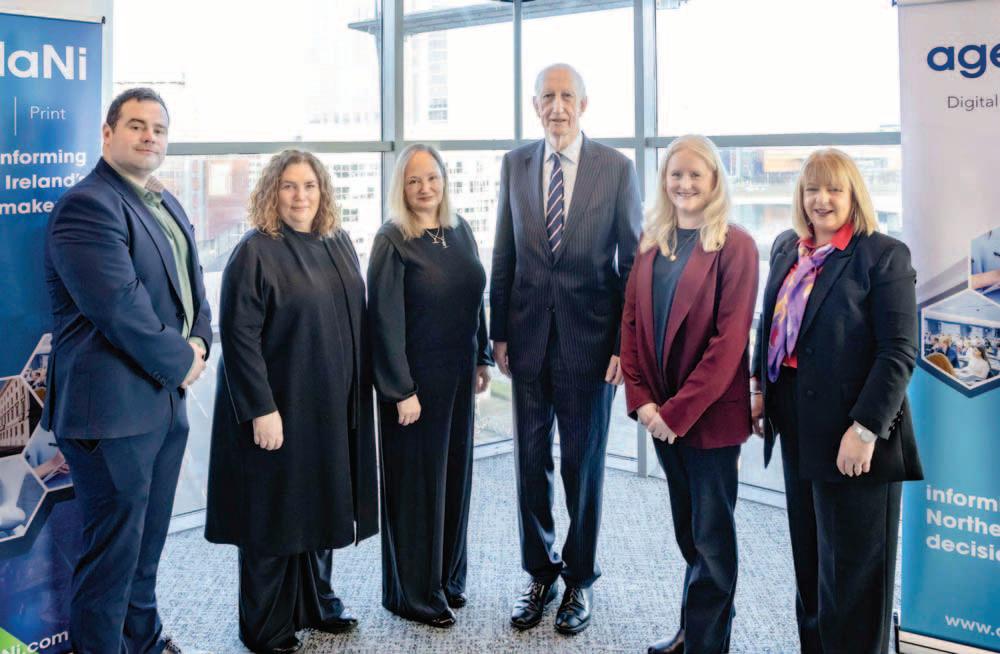







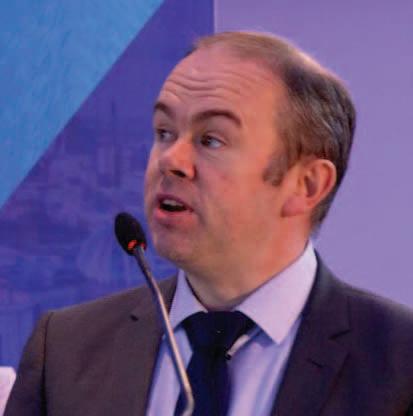


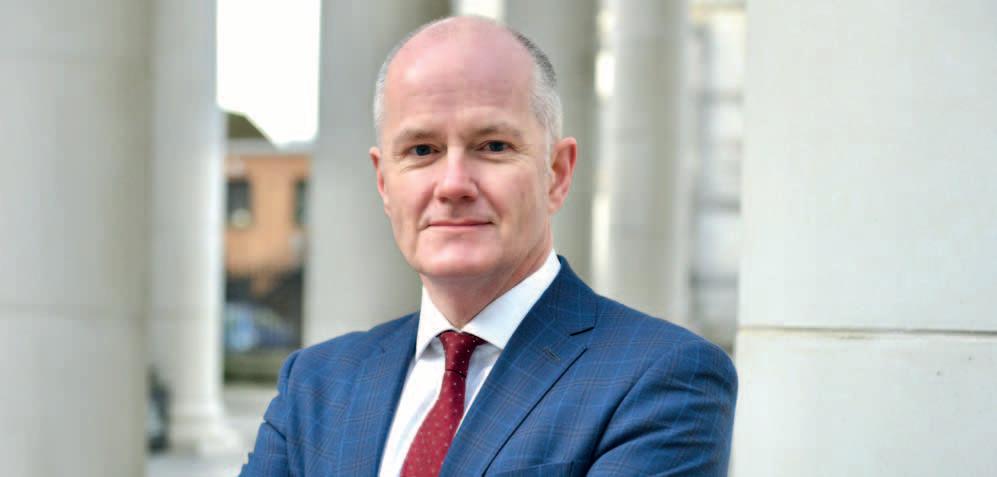







The Department for Communities has launched a consultation on a fuel poverty strategy, 14 years after the last Fuel Poverty Strategy was published in 2011.
As outlined in the Energy Strategy’s 2024 Action Plan Report, published in March 2024 by the Department for the Economy (DfE), Communities Minister Gordon Lyons MLA launched the consultation on a new Fuel Poverty Strategy in December 2024.
In September 2024, National Energy Action Northern Ireland (NEA NI) published findings of a survey that suggests over 40 per cent of adults in Northern Ireland were spending more than 10 per cent of their household expenditure on energy costs, classifying them as fuel poor. This rise is attributed to escalating energy prices and the broader cost-of-living crisis.
PUBLIC AFFAIRS
Secretary of State for Northern Ireland, Hilary Benn MP, has rejected an attempt by unionist MLAs to trigger the Stormont Brake.
The Stormont Brake is a mechanism introduced by the Windsor Framework, negotiated by the Rishi Sunak’s Tory government and former DUP leader Jeffrey Donaldson, which allows 30 MLAs from at least two parties to call on the UK Government to reject a piece of EU legislation from applying in Northern Ireland.
Unionist MLAs attempted to trigger the brake for the first time in December 2024, arguing against EU changes to rules on packaging and labelling of chemicals.
In his response, Benn stated that the UK Government does “not consider that the requirements of paragraph 14(1)(b) of
The strategy proposes a vision of a “warm, healthy home for everyone”, with three proposed actions: making homes more energy efficient, collaborate and build capacity, and protect consumers.
The draft Strategy also proposes a new approach to measuring and reporting on fuel poverty and proposals for the Department’s new Fuel Poverty Energy Efficiency scheme.
Communities Minister Gordon Lyons MLA says: “This consultation on a new Fuel Poverty Strategy sets out a pathway to a Northern Ireland where everyone lives in a warm, healthy home.”
Speaking after Benn’s response, DUP leader Gavin Robinson MP said that the UK Government’s decision was “wrong”.


SDLP Stormont leader Matthew O’Toole MLA says: “The SDLP has been clear that the Stormont brake is an illthought-out consequence of the clandestine negotiations between the DUP and the previous UK Government.
“Rather than allowing us to realise the opportunities of our unique position with dual market access, it furthers the notion that this place is inherently unstable and actively discourages businesses from investing here, depriving us of the chance to improve our economy and create jobs.”



Irish senators have recommend the establishment of an Oireachtas committee to fully explore the preparation for any potential constitutional changes on the island of Ireland.
The Seanad Public Consultation Committee, chaired by Fianna Fáil Senator Mark Daly, in its Final Report on the Constitutional Future of the Island of Ireland, published in December 2024, also recommends the establishment of advisory councils relating to the constitutional future of the island.
The Committee’s objectives were to gather opinions among the general public, in particular from the voices of young people from throughout the island, especially unionists. The Committee also examined the criteria for a referendum
The Department for Infrastructure has launched a public consultation on a strategic drainage infrastructure plan for Derry.
The draft Living With Water in Derry Plan sets out proposals for a strategic long-term approach to drainage and wastewater management in the city and surrounding area.
The plan follows the Belfast Living with Water Programme, which was approved under former Minister Nichola Mallon and marked a step away from the conventional water funding model in Northern Ireland.
However, it is understood that Infrastructure Minister John O’Dowd MLA had expressed concerns about missing cost of
on the constitutional future of the island of Ireland and lessons from other referendums held in the Republic and other jurisdictions, as well as the societal and economic opportunities and challenges that should be considered on this topic.
This was the final piece of work by the Seanad in its previous term, with a new Seanad due to be elected imminently at the time of writing.
The new Government in Dublin has not confirmed whether this committee will be established, although former Fine Gael leader Leo Varadkar has remarked that Irish reunification must be treated as “a political objective” in Dublin, and not just “a political aspiration”.
the programme, although reports of homes not being built in Derry as a result of a lack of connection to water drainage infrastructure has apparently prompted the Department to take this step.


O’Dowd says: “Infrastructure unlocks our opportunities for growth and this draft Plan sets out how we can seek to achieve a resilient Derry which is better protected and prepared for the future.
“Development of the draft Living With Water in Derry Plan demonstrates our commitment to pursuing more sustainable drainage and wastewater solutions to help protect against flooding, provide a cleaner and greener environment and enable economic development in the Derry area.”

Education Minister Paul Givan MLA has announced proposed changes which will seek to reform to the provision of support for children with special educational needs (SEN).
The Department said in January 2025 that the Special Educational Needs Reform Agenda and delivery plan will be published “in the coming weeks”.
Currently, an estimated 20 per cent of pupils in Northern Ireland have special educational needs, with 8 per cent formally SEN-statemented. This marks an increase of 113 per cent since the 2004/05 academic year.
Furthermore, more than 11,000 children are in special education provision, an increase of 70 per cent in the last 10 years.
Although expenditure on SEN has increased by 145 per cent in the last eight years, recent academic years have been characterised by an increasing number of pupils only being given their school place at the very end of the pre-school term period. For example, 120 schoolchildren with a SEN statement were awaiting a school place in July 2024 ahead of the 2024/25 term.
Speaking in the Assembly, Givan said: “Within the existing model, parents and indeed many schools see a statement of special educational needs as being the best way of securing support for a child. Aligned to this, we also know that many view one-to-one classroom assistant support as the ‘gold standard’ intervention.




The Department for the Economy has launched a 10year Tourism Vision and Action Plan aiming to generate up to 60 per cent growth in the sector by 2035.
This vision focuses on four central pillars: productivity, regional balance, good jobs, and decarbonisation. Highlights include expanding the visitor experience portfolio, fostering sustainable practices, and developing new tourism offerings through the City and Growth Deals programme.
There are 17 objectives, one of which is to press for a solution to the introduction of the UK Government’s Electronic Travel Authorisation Scheme.
The Tourism Partnership Board, comprising cross-
sectoral representatives, will oversee the implementation, ensuring alignment with broader economic and environmental goals. Investment in skills development, infrastructure, and marketing will be crucial to achieving these targets. By prioritising collaboration and innovation, the action plan aims to position Northern Ireland as a year-round, globally competitive destination.
Minister Conor Murphy says: “My Tourism Vision and Action Plan sets out how we plan to create a thriving, sustainable tourism industry for the future, enriching local quality of life and creating a year-round destination, across the North, that will stand out in international markets.”

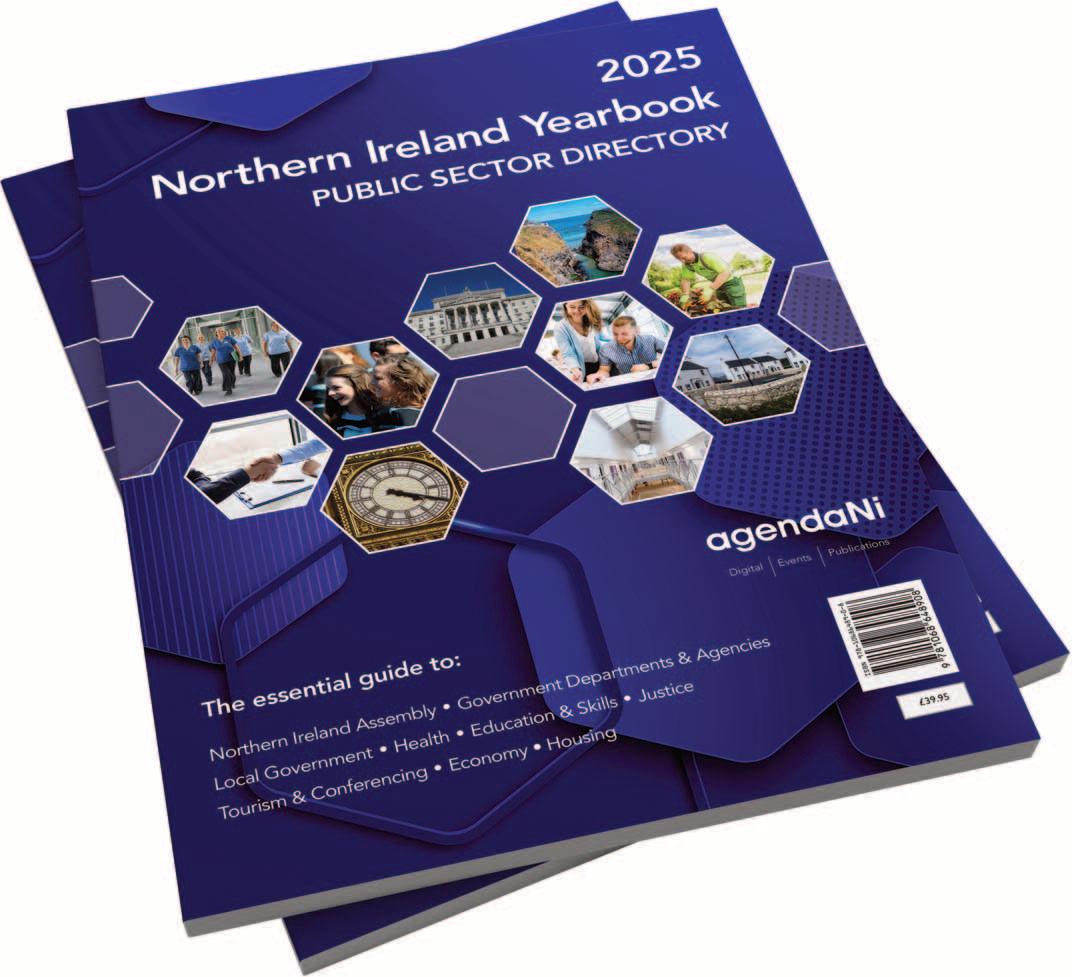







Ireland’s funding challenges are set to continue over the next year.
The continued reliance on earmarked funding, totalling £847.5 million, has increased slightly from 2024/25 levels but remains a structural constraint on departmental autonomy.
High-priority sectors such as agriculture (£332.5 million) and justice (funds for paramilitary crime initiatives) dominate these allocations, leaving departments with little flexibility to address new or emerging needs.
In comparison, the 2024/25 Budget exhibited a similar earmarked structure but included fewer commitments tied to cross-departmental initiatives.
The 2025/26 addition of a £50 million allocation for the Childcare Strategy and smaller commitments, such as £7 million for skills interventions, are noteworthy new commitments, but are significantly short of addressing broad societal demand in Northern Ireland.
While total departmental allocations in resource or the departmental expenditure limit (DEL) have grown from £14.4 billion in 2024/25 to £15.7 billion in 2025/26 (an 8.5 per cent increase), a closer look reveals mixed outcomes:
• Health: The health budget increased by 8.7 per cent (£7.7 billion to £8.4 billion), consistent with its priority status. However, much of this increase appears earmarked for legacy commitments, such as addressing waiting lists and maintaining service levels, rather than transformative reforms.
• Education: A 9.4 per cent increase (from £2.87 billion to £3.22 billion) underscores the growing pressures on this
sector. Yet, the allocation fails to directly address critical areas like teacher shortages and infrastructure renewal, raising questions about the efficacy of this additional funding.
• Infrastructure: The Department’s 13.2 per cent increase in resource DEL (RDEL) (from £559.5 million to £633.3 million) reflects growing demand for transport and water services. However, the allocation still falls short of addressing long-term infrastructure deficits, especially given the department’s reliance on external borrowing.
Capital allocations have risen from £2.1 billion in 2024/25 to £2.45 billion in 2025/26, driven in part by external funding and borrowing. This includes:
• £225.7 million from the Reinvestment and Reform Initiative (RRI), compared to £200 million in 2024/25.
• £87 million from the Irish Government for the A5 project, highlighting its continued commitment to cross-border collaboration.
Despite this nominal increase, the heavy reliance on borrowing remains a critical weakness. Key capital investments in education (£102.8 million for the Strule Campus), health (£69.8 million for the Mother and Children’s Hospital), and infrastructure (£235.6 million for the A5 and Belfast Transport Hub) dominate the budget, limiting flexibility for other critical needs.


The draft Budget proposes a 5 per cent increase in Domestic Regional Rates and a 3 per cent increase in Non-Domestic Regional Rates. This mirrors the Executive’s consistent approach in 2024/25, where modest rate adjustments aimed to balance public service funding against economic pressures. However, the reliance on rate hikes continues to underscore the absence of innovative revenue strategies.

The split between domestic and nondomestic rate rises reflects a response to ongoing pressures on businesses, particularly following National Insurance increases announced in the UK Chancellor’s Autumn Budget in late October 2024.
However, the repeated use of rate increases raises questions about the Executive’s capacity to identify alternative revenue streams, with Executive ministers having ruled out measures such as the introduction of water charges.
Announcing the January Monitoring Round on 16 January 2025, Finance Minister Caoimhe Archibald MLA acknowledged that Executive departments “still face significant budgetary challenges”. “Demand once again outstrips funding available many times over with almost six times as many bids for day-to-day funding and three times as many bids for capital,” she said.
£16.9 million in resource DEL and £53.6 million capital DEL funding was allocated as part of the monitoring round as follows:
• Department for Communities: £4.5 million capital
• Department for the Economy: £2.3 million resource and £5.4 million capital
• Department of Education: £1.5 million resource and £12.5 million capital
• Department of Finance: £0.2 million resource
• Department of Health: £7.3 million resource and £13.5 million capital
Departmental budget outcome from draft Budget 2025/26
• Department for Infrastructure: £5.2 million resource and £17.6 million capital
• Department of Justice: £0.1 million resource
• Public Prosecution Service: £0.1 million resource
The consultation for the draft Budget is open for submissions until 13 March 2025, with final agreement expected to take place by May.
Minister Archibald says: “Continued work
budget
and a Budget Improvement Plan will focus on developing long term plans for departments and putting in place the building blocks for fiscal sustainability. We must keep a firm and sustained focus on transforming our public services if the Executive is to put its finances on a sustainable footing.
“We must work together to do what matters most and that is why I am encouraging people to get involved in the draft Budget consultation and have their say on how to prioritise the finite funding available to us.”





Following the launch of its new Foundation, Director of Communities at Radius Housing, Loma Wilson, talks to David Whelan about the Housing Association’s drive to deliver safe and sustainable communities.
As one of Northern Ireland’s largest and busiest housing associations, Radius’ ongoing delivery of 700 new build properties across 12 different schemes in 2024/25 – in the midst of extreme budgetary, infrastructure and construction challenges – is testament to the association’s desire to help ease the current housing crisis.
While increasing the supply of new housing stock has been identified as a critical lever in mitigating the challenges of a growing social housing waiting list and record levels of homelessness, the challenges of the housing crisis extend beyond supply alone.
Providing housing, care, and support to over 33,000 homes, whilst managing 13,500 properties , with a presence in all of Northern Ireland’s 11 council areas (80 towns), Radius is well placed to
understand the needs of not only its tenants, but also act as an enabler of sustainable communities throughout the region.
The diversity of the help and support required is recognised by Wilson, Radius’ Director of Communities, who highlights how the association is going beyond its remit to deliver innovative solutions, such is the scale of the housing crisis.
Reflecting on 2024, a year which concluded with the publication of the Department for Communities’ longawaited and largely welcomed Housing Supply Strategy in December, Wilson says that the ongoing delivery of 700 properties across 12 sites represents a “healthy” new build programme, in challenging conditions for the association.
Highlighting that Radius stands ready to deliver greater levels of new build social housing if solutions can be found to existing barriers that range from budget restraints, to land availability, and infrastructure connectivity restraints, the Director of Communities is well aware that many of the challenges faced in 2024 will be compounded in 2025, if solutions are not found.
Asked whether the Housing Supply Strategy offers these solutions, she says: “Publication of the Strategy is a positive step and very welcome, particularly the establishment of a new build target, but the content itself is devoid of concrete actions.
“While the Strategy rightly identifies the many challenges facing increased supply delivery, even more critical will be the associated action plans, as a basis for delivering the right outcomes.”


Although welcoming the collaborative cross-departmental nature of the strategy, Wilson is sceptical as to whether the aspirational target of 2,200 new build properties per year can be achieved in the current context. While Radius have in the past averaged the delivery of 350 to 400 new build social houses per year, it is likely that only 250 will be completed this financial year – a figure which does not include a site of 30 properties that have been built for over one year, but cannot be allocated because of delays in connection works by NI Water.
“Cuts to the Social Housing Development Programme have restricted the levels of new build social homes ourselves and other housing associations would aspire to, however, funding is not the only stumbling block. Infrastructure connectivity issues, land availability, and rising construction costs related to inflation are also serving as barriers to increased supply.
“As we sit here in January 2025, we still do not know when our funding for next year will be approved, such is the nature of the cycle of single-year budgets coming from the Northern Ireland Executive. All of these barriers need to be addressed if we are to reach the aspirations for the Housing Supply Strategy and ease the growing demand for housing.”
Wilson is well aware that the pressures evident the housing system, such as rising costs due to inflation and strained public services are also having a major impact on Radius’s tenants. Outlining a remit to “create sustainable communities, create sustainable tenancies, and try to prevent growing homelessness”, Wilson points to the introduction of a Financial Wellbeing Strategy and subsequent programmes such as a Hardship Fund and Essential Starters Fund as examples of how Radius has sought to support their tenants in the difficult financial climate. Welfare advice officers also play a key role in supporting tenants to access benefits and maximise their income to its full potential. Each year they are, on

“While the Strategy rightly identifies the many challenges facing increased supply delivery, even more critical will be the associated action plans, as a basis for delivering the right outcomes.”
Loma Wilson, Director of Communities at Radius Housing
average, leveraging £750,000 of additional income for tenants.
In 2024, Radius took an innovative approach to the support it offers its tenants and wider communities by becoming the first housing association in Northern Ireland to launch a charitable subsidy in the form of a foundation.
“The concept of the Foundation is to build on and expand much of the good work already underway across Radius’ communities,” explains Wilson. As a social enterprise, Radius already invests any of its profits back into the organisation. Through the Foundation, Radius hopes to lever grant funding to create and expand programmes that address need throughout its communities.
Pointing to strong and constant tenant engagement, underpinning an evidence base that acknowledges the aspirations of tenants, Wilson says that the foundation will seek to deliver greater supports around things like childcare,
education, training and employment, initially in areas of greatest need.
Already underway, is a partnership with Ashton Community Trust in north Belfast, one of the region’s most socially deprived wards, whereby the Radius can refer its tenants to a variety of support services currently delivered by the trust While primarily aimed at Radius tenants, Wilson is in no doubt that the as the foundation grows it can make a lasting impact on the many communities surrounding Radius’ properties.
“Having initiated our first business case with Ashton Community Trust, we have some big ambitions for the Foundation, particularly in relation to education, training, and support. Radius manages 14,000 homes across Northern Ireland and we recognise that within those families there are potentially children who are entering a cycle of disadvantage or of economic inactivity.
“An area we are keen to focus on in the future is apprenticeships. Through 4



Radius we are providing secure and sustainable homes and it makes sense that through the Foundation we can then offer further supports to help these families and young people be economically active.”
Interestingly, Wilson also acknowledges the cyclical potential of how support for education and training can also help aid some of the challenges faced in the housing sector.
“When you factor in that one of the big challenges facing the construction industry is the skills gap that exists to deliver on not only the new build programme, but also maintain and retrofit housing to meet overarching government targets, there is a real opportunity here the marry these challenges with the solutions the Foundation can offer,” she explains.
Stressing the importance and acknowledgement that the Foundation will seek to support rather than compete with the variety of much-needed community and voluntary organisations currently operating in communities across Northern Ireland, Wilson explains that the foundation will sit as an integrated arm of Radius’ busy Community Investment and Development team, enabling good practice and
successful programmes to be replicated across geographical areas.
Understanding the diversity of needs across their properties, Radius Housing’s commitment to age-friendly initiatives reflects a broader vision to improve health, quality of life, and community integration for older people. Having pioneered the sheltered housing concept in Northern Ireland, Radius is the largest provider of independent living housing managing more than 4,100 properties and in December 2024 officially launched its Age-Friendly Strategy 2024–2027, setting out an ambitious plan to improve the lives and communities of older residents.
Discussing the ambitions of the strategy, Wilson says: “As Northern Ireland’s population ages, Radius Housing is committed to ensuring our older residents can live with dignity and contribute to their communities. Over many years Radius has embraced new housing types and technology to allow our tenants to enjoy their homes.
“The new strategy embodies our dedication to innovation, collaboration, and creating housing solutions that meet the evolving needs of our society. We
believe that everyone is entitled to a safe, secure, and affordable home, and this strategy reaffirms our mission to deliver just that.”
“We are grateful that the Supporting People programme contributes to the service provided in some of our older person schemes, however, following years of budgetary freezes we need an assurance that there will be at least inflationary increases each year.”
Wilson attests that creating the right property type for Northern Ireland’s demographic is also key to ensuring that existing housing stock is suitable for those in need of a home, meaning that Radius’ provision of award-winning sheltered accommodation and placement of suitable tenants is also going some way to freeing up larger homes for the growing number of families currently relying in temporary accommodation or homeless.
That Radius continuously strives to better the lives of its tenants, its communities, and those in need of housing in Ireland is evidenced by the organisation’s push to overcome systemic hurdles. In the absence of a tenant engagement strategy form the Department of Communities since the last strategy concluded in 2020, Radius is collaborating on best practice from across the UK and Ireland to update its current three-year strategy which runs until the end of 2025.
In August 2024, Radius Housing became the first recipient of the Gold Award for Tenant Participation on the island of Ireland, recognising Radius’ continued commitment to engaging with their tenants and the recent audit and assessment process.
A further frustration is the pace at which the fundamental review of social housing allocations, first announced in 2012 and consulted on in 2017, is progressing, with Wilson vocalising a common opinion, that planned reform will fall short of what is hoped for.
“There are many welcome aspects to the proposed changes including increasing choice for people around where they want to live and the reduction of waiting times, however, these aspirations are wholly dependent on a significant


increase in supply. The best way to sum it up is that we are hopeful but cautious in our confidence”
While Wilson is unwilling to second guess the shape of proposed changes to how intimidation points are allocated on the social housing waiting list, her experience of the increasing complexities within the list means that she has concerns that the current process is not best suited to achieving “safe, sustainable communities”.
“My preference for the allocation to new build properties would be a quota system which is aimed at creating a diverse balance of tenants, which is a key aspect of creating safe and sustainable communities,” Wilson adds.
Wilson states that in the face of mounting challenges, Radius continues to pioneer innovative solutions to improve tenant’s lives and mitigate housing pressures. Radius is part of the European Federation of Living (EFL), for which its Chief Executive John McLean is currently vice chair, and are a part of the Older Person’s subgroup, which Wilson explains enables them to “horizon scan the technological innovations coming forward”, which can then be adapted for Radius tenants.
Similarly, having successfully piloted a number of energy efficiency upgrades across various sites, Wilson calls on the Department to deliver policy and funding mechanisms to enable housing associations to play a greater role in the decarbonisation’s existing social housing stock, whilst ensuring costs do not fall solely on tenants.
Reflecting once again on how Radius are willing to break the traditional mould of the role of housing associations in the housing sector, Wilson points to a move by Radius to use some of their existing stock to provide leasehold solutions for those in housing stress.
The Director of Communities explains: “While this is not an area traditionally occupied by housing associations in the past, unprecedented levels of people in housing stress and families in temporary accommodation is a challenge that requires untraditional solutions.”
In block leasing a small number of its existing stock to the Housing Executive, Radius continues to manage the properties and partner with support services to allow previously void properties to be used as more suitable temporary accommodation, freeing up spaces in hotels and B&Bs for others in need.
“In an ideal world, these people would be placed straight into secure tenancies, however, giving the supply challenges that exist, and the growing levels of homelessness, I believe there is a responsibility on the housing association movement to provide solutions where possible.”
“I believe there is a responsibility on the housing association movement to provide solutions where possible.”
Asked to define what success in 2025 looks like, Wilson concludes: “I think all of us in the housing association sector would like to see the budgetary allocation for the Social Housing Development Programme published as early as possible, to allow us to achieve our full potentials in delivering maximum levels of new build supply. We would hope that 2025 is the year where there is action taken to address the issues that are impacting on our ability to deliver the best outcomes.
“Equally, we have made good progress on the early stages of our Foundation and in 2025 we would hope to have a fundraising office in place and making applications to enable is to build on the work we have started. Ideally, we will have a Radius Academy visiting schools and delivering educational programmes geared towards raising awareness and understanding of housing, homelessness and shared housing.
“However, of primary importance to us is that we continue to have tenants who feel safe and happy in their homes and that we continue to be a supportive landlord that provides homes that build a better place for all.”

Loma Wilson is Radius Housing’s Director of Communities having joined the organisation in December 2020 from the Housing Executive and has over 20 years’ experience in delivering housing management services. She has a MSc in tourism management and a postgraduate diploma in housing.
Wilson’s passion is to travel and she ensures a good work-life balance by enjoying yoga, Pilates, and spending time in nature.



In December 2024, Health Minister Mike Nesbitt MLA launched a three-year strategic plan for health and social care. However, in the absence of budget certainty, its implementation timeline is anything but assured.
At 32 pages, A Three-Year Plan To: Stabilise, Reform, And Deliver is the Department of Health’s new strategic framework for health and social care. Amid the stark absence of detailed costings, the Minister for Health places significant emphasis on the role of “future budget settlements” and “successful partnership working in the
Executive”. As such the pace of delivery of the plan is uncertain.
The three “high level priorities” contained in the report are:
1. stabilisation;
2. reform; and 3. delivery.
In a ministerial statement to the Assembly on the same day the plan was published, the Minister emphasised “the incredibly challenging budget position” and indicated that stabilisation would be “a strong immediate focus” given the challenge of minimising the impact of over £200 million of savings delivered by the six health and social care trusts.
The Minister paid tribute to “the fantastic effort and commitment of our staff” and asserted that he is “absolutely committed to resolving the pay award for this year”. Nesbitt also recognised that the trade unions representing health professionals in Northern Ireland had found his language in previous discussions relating to the national pay parity awards unacceptable and would endeavour to use more “pleasing, or agreeable” language.
While acknowledging that the reform agenda is not a panacea, he suggests it is “what is needed to give our staff and the public hope that there is a bright future for our health and social care service”.
Reform, as a concept, is thematically covered under five headings:
1. population health, health inequalities; 2. adult and children’s social care; 3. primary and community care; 4. mental health; and
5. acute hospital care (including waiting lists).
Emphasising the need to be “realistic about what we can be achieved”, the intended outcomes of the reform are:
• improving public health;
• shifting left (reorientating care away from acute settings to the home/community);


• building a hospital network;
• quality and safety; and
• involvement and engagement (of the community and voluntary sector).
Each outcome is accompanied by a timeline commitment to deliver specific targets. For example, it states: “By April 2026, we will have advanced new policies and legislation to improve public health including a new Obesity Strategic Framework; the implementation of the Northern Ireland provisions in the Tobacco and Vapes Bill and brought forward proposals for minimum unit pricing for alcohol.”
Given growing healthcare need or demand, alongside a constrained budgetary context, the plan recognises that delivery must focus on optimal efficiency. This, it says, will be achieved through “a relentless focus on performance so that within the constraints that exist, we can be sure we are getting the best we can for our citizens”, including via innovation.
While long-term success will be tracked against “a strategic outcomes framework”, the Department is now piloting a new system oversight measures approach to measure shortterm success across six metrics:
1. performance;
2. safety and quality;
3. finance and governance;
4. efficiency and productivity;
5. access improvement and tackling health inequalities; and
6. workforce.
The delivery outcomes, it notes, are as follows:
• increasing core capacity through new ways of working;
• delivering an additional 46,000 outpatient assessments and 11,000 treatments by 2027
• “year-on-year improved outcomes and increased service delivery” as per the Getting it Right First Time (GIRFT) Standards and British Association of Day Surgery day case rates by April 2027;
• implementing the recommendations of GIRFT reviews in adult and
“I have remained fully and absolutely committed to resolving the pay award for this year.”
Mike Nesbitt MLA, Health Minister
paediatric orthopaedics, urology, and gynaecology by April 2027; and
• commissioning further reviews in ENT services.
Tracking progress, a detailed implementation plan, the three-year plan states, will be published annually “following budget confirmation”.
Commending the three-year plan to the Assembly, he contends it is both “realistic and ambitious”, adding that the pace of delivery hinges on “budget settlements and, indeed, on successful partnership working in the Executive”.
In the plan, the word “seek” is used nine times and “could be” twice, alongside phrases such as “we will aim”, “we will strive”, “we will explore”. This is a theme seized upon by SDLP MLA Colin McGrath, who asserted, in the Assembly, that “we need a concrete, tangible, fully funded, time-bound programme that is supported by the whole Executive to make the changes that we need and to save our health service”.
In response, Nesbitt suggests, that his Assembly colleague is “clearly living in the ideal world” as opposed to “the practical world” in which, the Minister claims, he resides. Emphasising the realpolitik associated with a mandatory four-party collation, he then unpacks the plan’s target of an additional 46,000 outpatient assessments and 11,000 treatments by 2027as evidence of “concrete, time-bound detail”.
On the other hand, Committee for Health chairperson, Sinn Féin’s Liz Kimmins
MLA, remarked that the plan is “certainly ambitious... and very welcome”, thanking the Minister for “listening” to the work of the committee. However her party colleague, Linda Dillon MLA highlights the absence of any specific mention of women’s healthcare.
The Minister in turn points to a forthcoming “women’s action plan” which, he hopes, will inform a future women’s health strategy in the future, should the funding to deliver it become available.
Highlighting a perceived inconsistency or “contradictions” in his statement relating to competition between prevention and cure, the Alliance Party’s Nuala McAllister MLA asks the Minister to outline his current priorities.
“It has to be both, because no matter how good you are at prevention and early intervention, people will still get sick,” he says, adding: “My ambition is clear: it is that shift left and getting care away from acute hospitals and delivering healthcare in the home, ideally, or, if not in the home, as close to it as possible.”
Unsurprisingly the UUP’s Alan Chambers MLA welcomed the plan published by his party’s sole Minister as “timely”, while DUP MLA Diane Dodds commented: “I believe that you are genuinely interested in improving services for our constituents. I also believe that you are interested in holding the trusts to account, which is really welcome; it is high time.”




Anyone with young kids in their life knows: when it comes to mind-boggling questions, a child’s curiosity knows no bounds. Why are sugary foods more appealing than healthier ones? Which household pet carries the most bacteria? And why do fish not get squashed at the bottom of the ocean?
These are just some of the headscratchers explored by the young participants of ESB Science Blast, delivered by the RDS. This free, noncompetitive educational programme for pupils in primary school Key Stage 2 gets the whole class involved in investigating the science behind a simple question. Each group is paired with an expert in STEM (science, technology, engineering and maths), who meets them at one of three showcase events in Belfast, Dublin, or Limerick to hear about their project and share positive feedback with them.
At its core, ESB Science Blast is about empowering the next generation to thrive – helping children at this formative age build crucial 21st century skills, including the five Cs of communication, critical thinking, creativity, collaboration, and curiosity. ESB has been title sponsor since 2019, with the ambition
of equipping young people with the capabilities needed to succeed in the future.
One STEM expert who has attended in previous years is ESB’s Northern Ireland
Regional Manager, Brian Hegarty: “ESB Science Blast is a unique and very special initiative,” he comments. “It makes STEM fun and exciting, yet it also fulfils a serious and important role. Our ability to interpret the world around us and find new solutions is crucial for society as we tackle major challenges like climate change. Participating in ESB Science Blast gives children first-hand experience in asking those big questions, and finding the answers for themselves using scientific methods.”
The enquiry- and problem-based learning promoted and facilitated by ESB Science Blast is fundamental in education from an early stage. Focusing on STEM in primary school fosters an interest and skillset that build a strong foundation for success in these subjects at second- and third-level education. 98 per cent of primary school teachers who participated in the 2023 edition of ESB Science Blast reported that it “increased students’ confidence in STEM”, while 96 per cent said that taking part “enhanced the science and maths curriculum in the classroom”.*
As Hegarty explains: “The programme’s resources and supports complement

STEM teaching and learning in schools, while giving children a sense of what is possible and how they can make a difference.”
By sponsoring Science Blast, ESB supports the creation of a diverse talent pool, opening young eyes to career opportunities in STEM. Participation in the programme also encourages children to become engaged in the world around them, capable of making decisions to tackle global challenges like climate change. ESB’s ambition is to achieve net zero carbon emissions by 2040, and the organisation is growing its infrastructure and services to make this happen across its three core markets of the Republic of Ireland, Northern Ireland, and Great Britain.
“This sponsorship is intrinsically linked with that ambition,” comments Hegarty. “Delivering on our strategy depends on people – so it is vital to invest in the next generation of STEM professionals.”
ESB Science Blast is fast becoming a firm fixture in school calendars across Northern Ireland. In 2024, more than 1,000 pupils and their teachers travelled to the Belfast event from over 30 primary schools – from Belfast and Portstewart to Ballygowan, Crumlin, and Derry-Londonderry. Forty projects were on display examining questions ranging from ‘how clean is our local river?’ to ‘why do dogs see things differently to humans?’
ESB has engaged with schools directly to encourage classes to get involved.

“Delivering on our strategy depends on people – so it is vital to invest in the next generation of STEM professionals.”
For example, it organised a science workshop with broadcaster and scientist Phil Smyth at Cumber Claudy PS in Derry-Londonderry to kickstart their project. ESB STEM expert Joseph Kelly of Coolkeeragh Power Station was on hand for advice, as the children were led through science experiments to spark their curiosity. The result: some thought-provoking queries worthy of further exploration – after all, who hasn’t

asked themselves which chemical reaction causes the loudest pop?
Beyond simply answering their questions, the ultimate value of participating in ESB Science Blast is what children learn along the way. Getting excited about science, developing fundamental research and problem-solving abilities, and working together with their classmates to find solutions to shared challenges – these are the skills that can prepare them for life in the 21st century, while opening a future full of possibilities in STEM and beyond.
ESB Science Blast Belfast will take place on 3 June at ICC Belfast. The deadline for project submissions is 14 March 2025. To learn more visit esbscienceblast.com.
*Results based on responses from 240 teachers who participated in ESB Science Blast 2023 events.
W: www.esb.ie



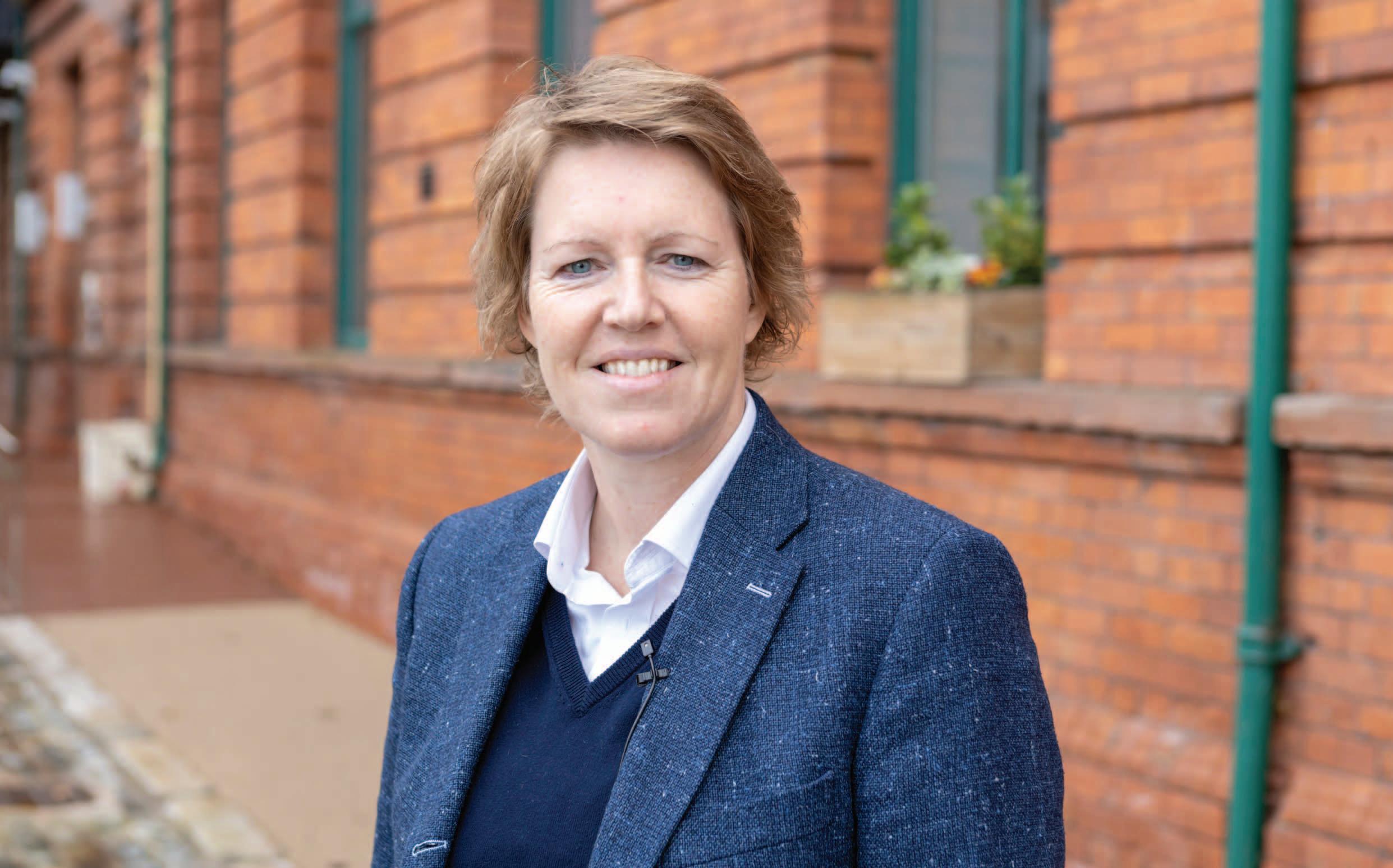
Investment in research and development is critical to improving Northern Ireland’s productivity and economic outcomes, says the region’s first Chief Scientific and Technology Advisor (CSTA), Helen McCarthy.
Science and technology underpin every one of the priorities outlined in the Northern Ireland Executive’s draft Programme for Government, argues McCarthy, who is chair of Nanomedicine in the School of Pharmacy at Queen’s University Belfast. As CSTA, McCarthy is responsible for coordinating a regional strategy on science and technology across Northern Ireland and representing the region at SAGE or COBRA for civil contingencies.
McCarthy’s role as the region’s CSTA also includes championing technology and innovation, embedding science in policymaking, increasing research and development, and representing Northern Ireland, nationally and globally.
“Science and technology have shown time and time again that research and development, and innovation, does drive sustainable growth,” McCarthy asserts.
“It is my job to challenge the Executive on absolutely everything, but I want to put particular emphasis on developing and improving research and development, because research and development is the ticket that is really going to make the difference in improving Northern Ireland’s productivity and economy.”
McCarthy states that one of her first actions as CSTA was to put a “champion of science” in each of the Executive’s departments, believing that there is “a need for science and technology to deliver on the Northern Ireland-centric objectives
which have been deduced in the Programme for Government” adding “but we also need research to support the Programme for Government”.
McCarthy identifies the Northern Irelandcentric objectives as:
• implementing a science and technology strategy;
• research to support Programme for Government;
• creating Northern Ireland Science, a body designed to bring together all the relevant actors in research and development and innovation in the region;
• increasing research and design;


• promoting women in science, technology, engineering, arts and technology (STEAM);
• enhancing deep tech commercialisation and scale; and
• enhancing the Northern Ireland Science and Technology Advisory Network (NISTAN).
Northern Ireland’s research and development deficit
McCarthy cites the 2015 Nurse Review of the UK Research Councils, in which the UK Government accepted the review’s recommendation to provide;
• a more strategic approach to departmental research and development programmes;
• a more sophisticated dialogue with academia; and
• documents that set out the most important research questions facing each department.
The CSTA explains that the review published guidelines which found that the UK Government departments were not aligned with higher education departments.
“It was recognised that there needed to be a greater level of coalition and cohesion and so since 2017, England, Scotland, and Wales have been involved in publishing the areas of research interest for our government departments, but Northern Ireland does not do this,” McCarthy emphasises.
“What that means is all of the departments in Whitehall are publishing what their areas of research are, and are promoting it to all of the education institutions and businesses across the UK, and seeking investment to address their gaps in research and development or innovation. Northern Ireland has not been at the table to do this.”
McCarthy states that another priority when she became CSTA was to ensure Northern Ireland started to set areas of research interest, highlighting: “The idea behind this is to align the research evidence, get access to a wider range of suppliers, engage with researchers so that we have the latest technologies to help solve our problems.
“We want to build a coalition for change in innovation derived enterprises, and some of the projects that the Executive has underway include identifying areas of research interest (ARIs), establishing a real time data framework for research and development, building a coalition for change in IDEs, and establishing Northern Ireland Science.”
There is no updated data to verify the funding for the region’s research and development. The last time the total research and development spend was recorded was in 2022, where an estimated £1.12 billion was spent on research and development, representing a decrease of 0.7 per cent from 2021.
“This frustrates me to no end,” McCarthy states. “We are nearly in 2025 and there has been no updated figure in three years. Science and technology and any type of innovations that we wish to do cannot be sustained nor work on a three-year lag cycle.
“We simply cannot work this way and it is not possible to evaluate where Northern Ireland is. There is also reason to believe when you look at the amount of flatlines in research and development, that the Executive departments have not ringfenced money for internal research and development spend for many years.”
McCarthy explains that both Ulster University and Queen’s University Belfast told her that the data which appeared to have flatlined in 2022, will have gone up in 2024, but McCarthy says: “I cannot show that data because it has not and cannot be verified. Up to date data is imperative in affirming these claims.”
One of McCarthy’s key outstanding priorities in her role as the CSTA for the region, is to create and develop a home for Northern Ireland Science (NIS), a body which will bring together and house all of the various research and development, and innovation sectors under one roof. It will not change any of the independent bodies that operate in Northern Ireland, but it will bring them together “so that we can share collaborations and expertise, and also simple things like equipment”.
“Bodies like Go Science UK and Scottish Science already exist, but we do not have something like this in Northern Ireland,” McCarthy says. “If we have someone external who wants to know what sectors Northern Ireland excels in, how it can contribute to innovation and research and development, there is no body that can showcase the identifiable areas of excellence this place has to offer.
“NIS would allow us to enhance collaboration, reduce duplication and make it easier for stakeholders to invest and access the opportunities Northern Ireland has to offer. There is a lot we can do, but the reality is, the Executive needs help with all the things we want to achieve in research and development.”


Dr Frances O’Hagan, chair of the BMA’s Northern Ireland general practitioners committee, outlines her hopes and concerns around the provision of general practice services across Northern Ireland.
Q. How would you describe the current state of general practice in Northern Ireland?
A. Unfortunately I think we are in one of the most challenging periods general practice has ever experienced. PostCovid, pressures have increased significantly. Some of the reasons for this are well documented, we have an increasing population that is getting older but living for longer with serious, chronic ill health. We have fewer GPs and are losing many due to retirement and burnout. We are struggling to fill training places, being a GP is not perceived to be an appealing career pathway any more due to the immense stress related to the job.
While our practice patient numbers are rising, the funding we receive is not increasing in line with this. We have seen practices forced into a position where they were no longer able to continue providing a service and have therefore handed their contracts back. In turn, this causes instability across geographical areas, and some of the solutions, for example, trusts taking over the running of a GP practice, are not optimal in terms of creating a sustainable long-term solution.
We are also facing a perception issue that compounds the problem. Many patients believe that GPs are no longer offering face to face appointments, but this is simply not true. Even during the height of the Covid pandemic, GPs continued to see patients face to face.
Every GP will see patients face-to-face, every day. There are about 200,000 patient contacts every week, with 20,000 face-to-face every day, but there is still a perception that ‘you cannot get an appointment’, which undermines public confidence in general practice.
A key shift has been the adoption of triage-based models of care. Without this change general practice would have been overwhelmed. Where it is appropriate, we will consult with patients over the phone, which many find more convenient. However, we recognise this approach does not work for everyone and that is why GPs continue to offer a mix of options, including agreed face-toface appointments.
Another frequent source of frustration for patients is the difficulty in getting through to their surgery by phone. Media reports often highlight patients calling multiple times before getting an answer. This frustration is entirely understandable, but it reflects the overwhelming demand. Even with dozens of phone lines and staff available, there is only so much capacity in a day.
GPs and their teams are working tirelessly to meet as many patients’ needs as possible, but the system will only deteriorate further unless more is done to retain existing GPs and recruit new ones.
The damaging narrative that GPs are ‘closed’ is taking its toll on morale across the profession, affecting both GPs and their practice staff. This year we are committed to challenging this misconception and making it clear that GPs are open, working harder than ever and are dedicated to supporting their patients.
Q. What are the short-term fixes needed to stabilise general practice?
A. To stabilise general practice in the short term, urgent action is required on two critical issues: Indemnity costs and National Insurance contributions.
Firstly, it is clear we need an indemnity solution. While there have been some temporary fixes, we need a proper solution agreed and funded now. When a GP is looking at where they want to make their career, Northern Ireland is unappealing because of this additional cost.
There are many medical students and young doctors from Northern Ireland who do their training elsewhere in the UK. Unfortunately, they are not going to want
to return here if it is more expensive to work in Northern Ireland. To address this we have been working with the Department of Health to try and find a solution and we hope to see more progress on that this year.
Critically, we also need a solution to the National Insurance employer contribution problem. By increasing NIC the Chancellor has significantly increased the costs of running every GP practice. This has caused widespread concern and worry across the profession, with some practices now facing the prospect of cost-cutting measures to remain viable.
We are collaborating with colleagues across the UK to lobby for urgent changes to this policy, as it risks pushing practices into an untenable position. A solution must be found before further damage is done to general practice.
Q. What are the longer term aims for you in this role?
A. Longer term there are two key priorities that need to be addressed; increasing funding and expanding access to multi-disciplinary teams (MDTs).
General practice currently receives just 5.4 per cent of the overall health budget, despite handling a significant share of patient care. The current state of the hospital system, with enormous waiting lists and delays, means GPs are left managing patients repeatedly as they await assessment and treatment.
This places an unsustainable burden on practices and highlights the need for a funding increase to address the imbalance. Adequate investment in general practice would not only improve patient care but also alleviate pressures across the wider health system.
The planned rollout of multi-disciplinary teams across Northern Ireland is a welcome development, but its success depends on proper engagement with GPs on the ground. At present, only 8 per cent of the population has access to MDTs, which must change to create a meaningful impact. Expanding MDT coverage would provide critical support to practices and patients alike, while also contributing to better long-term health outcomes.
We need a collaborative approach to ensure MDTs are implemented in a way that genuinely supports GPs and benefits patients. Achieving this will require careful planning, sufficient resources, and ongoing communication with those delivering care on the front line.
T: 028 9026 9666
E: BMANorthernIreland@bma.org.uk
W: www.bma.org.uk

Dr Frances O’Hagan was the deputy chair of the Northern Ireland General Practitioners Committee (NIGPC) from 2018 and she has also been the chair of the Southern Local Medical Committee (LMC), the first female GP to hold a LMC chair/secretary role.
O’Hagan was the first female chair of the 17 GP federations in Northern Ireland. She qualified as a doctor from Queen’s University Belfast in 1989 and has been a GP partner in The Friary Surgery in County Armagh since 1997. She is now the senior partner in the practice. She is a wife, mother and a grandmother.





The Executive has approved a plan to deliver a housing system that can provide 100,000 new homes in 15 years, but has yet to publish a financial plan for delivery.
The Housing Supply Strategy, the bulk of which has been in draft form since March 2022, was published in December 2024 by Minister for Communities Gordon Lyons MLA as a cross-departmental plan, indicating the cross-cutting nature of the challenges facing the housing sector.
The Housing Supply Strategy targets at least 33,000 social homes, and a significant number of intermediate homes, within its 100,000 home target.
Although broadly welcomed against the backdrop of a 60-year low of housing completions in 2023, the publication of the



strategy has been met with concerns that an estimated annual target of 6,667 new homes out to 2039 falls short of demand, while the absence of a targeted funding plan raises questions around the delivery of ambitions.
However, the Executive has said that the strategy will be delivered through a series of “detailed action plans”, which will align with budget periods. Alongside this, it has pledged to publish annual progress reports and strategically review the plan every five years.
The “whole system approach” of the strategy acknowledges the reach of the


housing challenge right across government, pointing to water infrastructure constraints, land-use planning, construction skills, and land availability.
Describing the investment challenge as “substantial” in the face of constrained public finances and international economic uncertainty, the strategy’s direction on investment lies in it stating: “Difficult decisions will need to be made. However, through active collaboration between public, private, and charitable partners, maximising current policy levers and developing new ones, we can find solutions and create opportunities.”
The strategy itself sets out the scale and significance of the challenge of delivering on the 100,000 home target.
Northern Ireland’s housing demand is growing even above projected figures. Census figures for 2021 showed 768,810 households existed in Northern Ireland, 3.2 per cent above what had been projected in 2016. The increase in households is largely attributed to an ageing population, and this challenge is only expected to increase as over 60 per cent of households are expected to be one or two adult households without children by 2041.
Increasing housing need is already evident in the substantial increase in the number of households in housing stress. According to the strategy’s own figures: “In March 2003 there were approximately 13,000 in housing stress. This rose to almost 21,000 by March 2011 and reached a new peak of 36,137 by June 2024.” Within these figures, 11,537 households were accepted as homeless in 2023/24.
Trade body Propertymark has pointed out that the ambitions for housing supply over the next 15 years are still over 15 per cent lower than the housing completions achieved in the 15 years to 2020.
Five key objectives have been identified within the strategy, namely:
1) Creating affordable options: Increase housing supply and affordable options across all tenures to meet housing need and demand.
2) Prevention and intervention: Prevent homelessness, reduce housing stress and improve and prioritise housing solutions for those most in need.
3) Quality and safety: Improve housing quality.
4) Better places: Ensure the provision of housing options that contribute to the building and maintenance of thriving, inclusive communities and places.
5) A fair path to low carbon housing: Ensure that the construction of new housing and retrofitting of existing homes enables people to afford to heat their homes as well as allowing us to meet our greenhouse gas emission targets.



Included in plans to create more affordable housing across all tenures, the strategy indicates a number of enabling actions, including an agreed rent policy with the Housing Executive, and the extension of the scope of the Government Land and Property Register (GLPR) Programme, to digitally map all land and property holdings for both central government and local government in Northern Ireland.
Additionally, the Executive has pledged to support the development of options for establishment of an Infrastructure Commission, undertake an assessment of registered housing associations’ powers, and support the work of the Planning Improvement Programme.
In relation to prevention and intervention, there is a commitment to deliver an interdepartmental Homelessness Action Plan, and implement recommendations of the Fundamental Review of Social Housing Allocations.
The strategy commits to a “comprehensive review of fitness standards applicable for all tenures”, and the progression of Housing Executive revitalisation under enablers of improved quality and safety. This is in addition to plans to deliver new legislation “that will improve the safety, security and quality of the private rented sector”. Specifically, the strategy says enforcement powers will be strengthened for the sector through the introduction of longer notice to quit periods and the transfer of landlord registration to local authorities.
Towards building better places, the Department says it will work with stakeholders to mainstream mixed tenure in both social and private housing developments, develop a housing-led regeneration policy, and assess the value of community asset transfers for affordable housing delivery.
Finally, in relation to the delivery of low carbon housing, the strategy acknowledges a requirement beyond new houses. Highlighting that the majority of housing stock in Northern Ireland is more than 40 years old, the Department states: “We will also need to do more to ensure our stock of existing homes across all tenures is fit for purpose, to keep them in the housing system.”
Alongside a commitment to deliver on the policies, proposals and enabling actions for residential buildings in the draft Climate Action Plan, and align with the Green Growth Strategy, the Department proposes a minimum standard creation for the private rented sector, a review of the Decent Homes Standard and Fitness Standard, as well as supports for housing associations to develop homes to a higher energy standard.
While the publication of the strategy and the cross-governmental approach has been endorsed by several key stakeholder organisations within the housing sector, the absence of a funding plan means concerns remain.
SDLP MLA for Foyle Mark Durkan voiced some of the existing concerns in his criticism of the strategy: “This strategy is more of the same and utterly meaningless without funding to address the reasons for the housing emergency we are experiencing across the North,” he says.
“When the draft strategy was announced in 2021, we were told the Executive would deliver 100,000 homes over 15 years, with little detail on how they would deliver them. In the past five years, the department claim they have started just over 8,000 new social homes, and they expect us to believe they will build 10 times that over the next 15.
“Given everything we have seen from this Executive so far that seems insurmountable. Targets are meaningless without a clear plan to tackle the root causes preventing house building in the North.”

Following the strategy’s publication, the Minister of Finance Caoimhe Archibald MLA has since published a draft Budget for 2025/26, under which the Department for Communities has been allocated £929.7 million resource DEL and £318.1 million in capital.
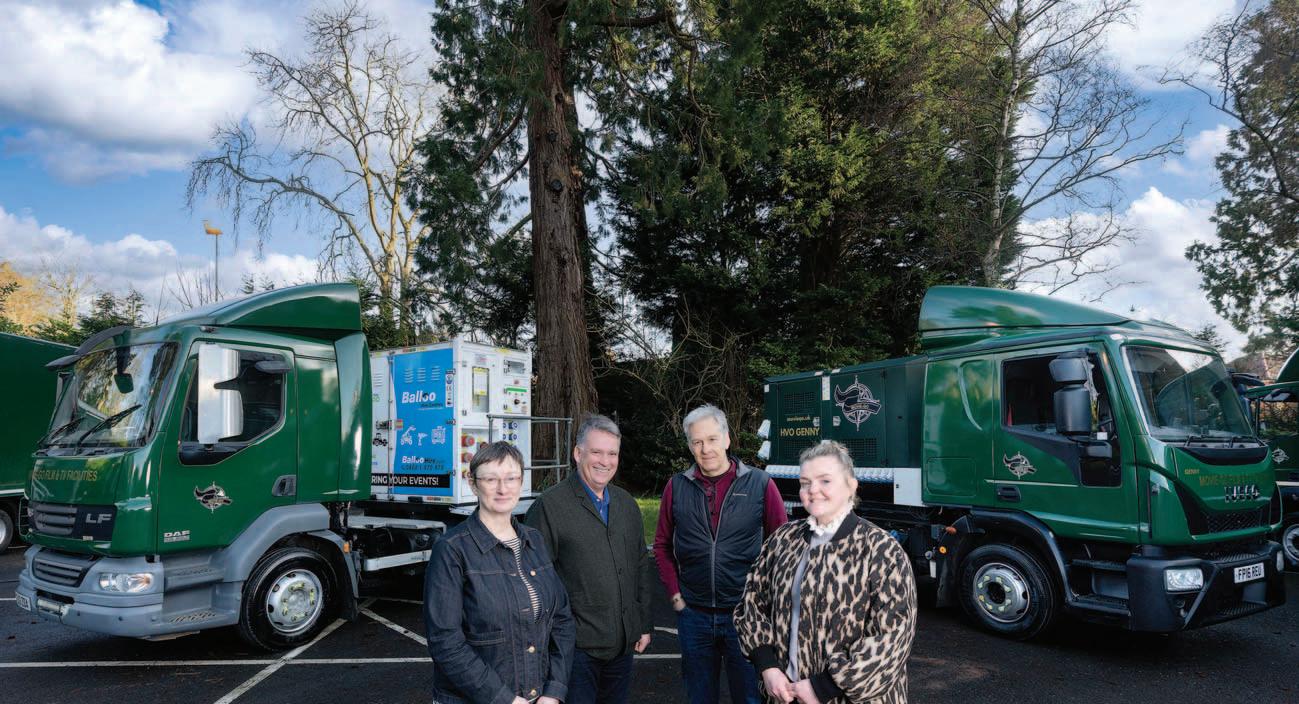
Northern Ireland Screen has announced a newly established sustainability support scheme, the first of its kind in the UK.
It follows a range of new sustainability policies, as part of a four-year Stories, Skills and Sustainability Strategy, that aim to encourage the screen industry’s shift toward environmentally sustainable operations.
The scheme represents a new approach for the local screen industry by supporting more sustainable practices across local operations, including equipment, energy sources, and food waste.
All scripted productions will be required to use hydrotreated vegetable oil (HVO) as their primary fuel source, replacing traditional diesel.
That means Northern Ireland Screen will be the first in the UK to make HVO use compulsory across its facilities fleet, onsite generators, forklifts, telehandlers and on-site machinery.
Meanwhile, Belfast-based police drama Blue Lights will be the first production to make use of the innovative policy.
Additionally, all productions, except interactive content, must use BAFTA Albert’s carbon calculator [which allows
productions to work out their carbon footprint] to track and report their carbon emissions to Northern Ireland Screen.
As part of a one-year partnership with Olio, a waste reduction platform, all scripted productions must also join the platform to help minimise food and material waste during production.
Northern Ireland Screen Chief Executive, Richard Williams, said the new initiative signals a significant step toward reducing the environmental impact of film and television production in the region.
“The sustainability drive is expected to bring long-term benefits to both the industry and the environment,” he says.
“We also hope that by having a dedicated grant scheme, we can help make Northern Ireland one of the most sustainable filming regions in the world.”
Northern Ireland Screen’s new sustainability support scheme offers substantial support to promote the use of innovative technology and overcome financial barriers.
The fund provides £53,500 for largescale productions, £28,500 for high-end television dramas, £18,500 for children’s drama, and £13,500 for independent films, including new talent initiatives.
Stephen Wright, CEO of Two Cities Television and Executive Producer of Blue Lights, which benefitted from funding, says: “We want to help lead the way on sustainable productions and are delighted to be the first company to make use of this innovative new policy whilst filming series three of Blue Lights.”
Funding is available to live action productions that shoot at least 50 per cent of their work in Northern Ireland, with the expectation that all eligible projects will seek access to the fund.
Projects must allocate £3,500 toward hiring a sustainability advisor for 10 days, including one to two days of preproduction, to develop sustainability plans.
The advisor must be engaged during the first week of the production office opening.
Approved spending from the fund can be used for a variety of green solutions, including hybrid generators, recycling facilities, portable electric vehicle (EV) charging points, and battery power alternatives.
Additionally, projects can receive financial support for EV car units and solar-powered alternatives.
T: +44 (0)28 90 232444
E: info@northernirelandscreen.co.uk
W: www.northernirelandscreen.co.uk


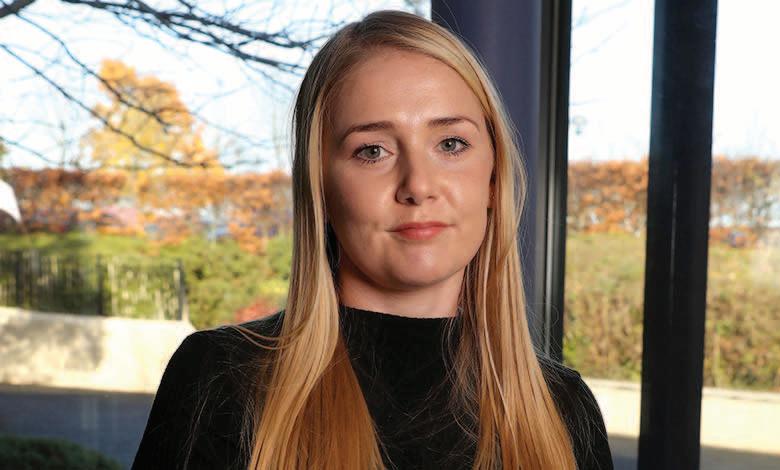



Senior
economist at the Nevin Economic Research Institute (NERI), Lisa Wilson, assesses whether mandating gender pay gap reporting in an SME economy can lead to meaningful change, and offers recommendations to close the gap.
The Employment Act (Northern Ireland) 2016 brought a promise of addressing pay inequality by mandating gender pay gap (GPG) reporting. Section 19 of the Employment Act 2016 was aimed to develop regulations to mandate this reporting, with an accompanying strategy and action plan to follow by October 2017. However, these deadlines were not met, with statutory responsibility for Section 19 not formally transferring to the Department for Communities until June 2021, and a period of hiatus in the Executive.
Now, as the Department for Communities consults on the details of implementing these regulations, the question remains: will this legislation lead to meaningful change, or is it
destined to fall short of its ambitious goals?
At its core, GPG reporting is intended to encourage transparency, requiring employers to disclose disparities in pay between male and female employees. However, international evidence suggests that this approach – while wellintentioned – has rarely delivered significant results in closing the pay gap. At face value, GPG reporting offers a simple, compelling promise: transparency. By requiring employers to disclose differences in pay between men and women, the policy seeks to expose disparities and encourage action.
The consultation is seeking views on regulations which will require employers
with 250 or more relevant employees across public, private, and voluntary sectors to publish their gender pay information. At June 2024, this threshold covers approximately 345 employers in Northern Ireland.
While this threshold is intended to strike a balance between ensuring meaningful data collection and avoiding excessive administrative burdens on smaller businesses, the reality is that it excludes the vast majority of employers in Northern Ireland, which is characterised by a high concentration of small and medium-sized enterprises (SMEs). While there are legitimate concerns about the potential burden on smaller employers, particularly regarding data protection and confidentiality, it is essential that a


mechanism is developed to allow smaller employers to contribute to the effort. Many other countries have reporting requirements from 50 or more employees.
The necessity for comparability with the gender pay gap data reported in Britain is another key consideration. To ensure consistency and provide a clear picture of gender pay disparities across the UK, the regulations must establish clear criteria for the publication of pay data. While this transparency is valuable, it has often fallen short of driving meaningful change in practice.
While the introduction of gender pay gap reporting is undoubtedly a positive step toward transparency, there are substantial limitations which have been identified from other countries who have implemented similar legislation, in driving meaningful change. As Coron (2020) argues, there is a real risk that the act of producing these reports may function as a “performative” exercise, in which simply “saying something” is mistaken for “doing something”.
In other words, while employers may fulfill the letter of the law by publishing their gender pay reports, but this does not necessarily translate into substantive action to close the gender pay gap.
Some countries with mandatory GPG reporting, such as the UK, have not seen significant reductions in gender pay gaps. Instead, reporting has frequently amounted to little more than a compliance exercise. Employers identify their pay gaps but fail to take the steps necessary to address them. This raises a critical question: can Northern Ireland achieve better outcomes by learning from these shortcomings?
While the proposed framework has potential, its success depends on overcoming key challenges:
Firstly, the real power of gender pay gap reporting lies not in the data itself, but in how that data is used to drive action. Employers must be required to go beyond merely publishing gender pay data and must produce action plans and targets to tackle the root causes of gender pay disparities within their organisations. These action plans must identify barriers to gender equality and outline concrete steps to overcome them
and targets for their action. Importantly, these plans should be developed in consultation with workers' representatives – such as trade unions –who can ensure that the plans are realistic and address the real challenges faced by employees.
Secondly, while employers play a vital role in addressing the gender pay gap, it is insufficient to place the entire burden of responsibility on them. The Government must play a proactive role by implementing policies that support gender equality in the workplace. These policies must tackle structural barriers, including unequal access to childcare, insufficient support for flexible working, and the overrepresentation of women in lower-paid sectors. Additionally, the Government must ensure that resources are available to support women’s education and skills development, particularly in male-dominated industries where higher-paying jobs are concentrated.
1. From transparency to accountability
Equally, the Government itself must set clear, measurable targets for reducing the gender pay gap. Without such targets, the initiative risks lacking the ambition needed to effect real change. Gender pay gap reporting is a useful tool for identifying disparities, but it must be part of a broader suite of policies aimed at addressing the systemic issues contributing to inequality.
A key aspect of this effort is the need for clear targets and timelines. Employers will need to be held accountable for their gender pay gap reports and the action plans they produce. However, accountability cannot stop with employers. The Government, too, must be held accountable for its role in providing the necessary infrastructure and support to reduce the gender pay gap. Only through a coordinated approach – one in which both employers and the state are responsible – can we hope to make meaningful progress.
Transparency must be more than a mere compliance exercise. Employers should be held accountable for addressing the identified pay gaps. Action plans should be subject to regular scrutiny to ensure they are genuinely addressing the underlying causes of inequality.
2. The role of trade unions
A crucial omission in the current proposals is the lack of a specified role for trade unions and worker representatives in developing action plans. Trade unions have a proven track record of negotiating fair pay and career progression opportunities. Their involvement is essential to ensure that action plans are both practical and grounded in the realities of the workplace. Worker representation is key to ensuring that employers’ proposed solutions are viable and meaningful.
3. Data utilisation and accessibility
The true value of gender pay gap (GPG) data lies in how it is analysed and applied. The collection of data should not be an end in itself but should serve as a basis for identifying trends, sectoral disparities, and shared challenges across industries. Therefore, it is essential to create a centralised platform, similar to the UK Government’s Gender Pay Gap Service, that not only hosts the reports but provides tools for detailed analysis.
Such a platform should enable easy comparison of gender pay gaps across sectors, regions, and different-sized employers, helping citizens, prospective employees, employees, employers and policymakers identify common issues, or ensure that we don’t see cases of ‘madness’ where employers outline actions repeatedly without seeing different results, but nonetheless, comply with the legislation.
The goal of this tool is to transform raw GPG data into a resource that provides employers with practical guidance on how to reduce their pay gaps, not just a summary of statistics. This would create a dynamic, interactive platform for driving change, rather than a static, compliance-focused approach to reporting.





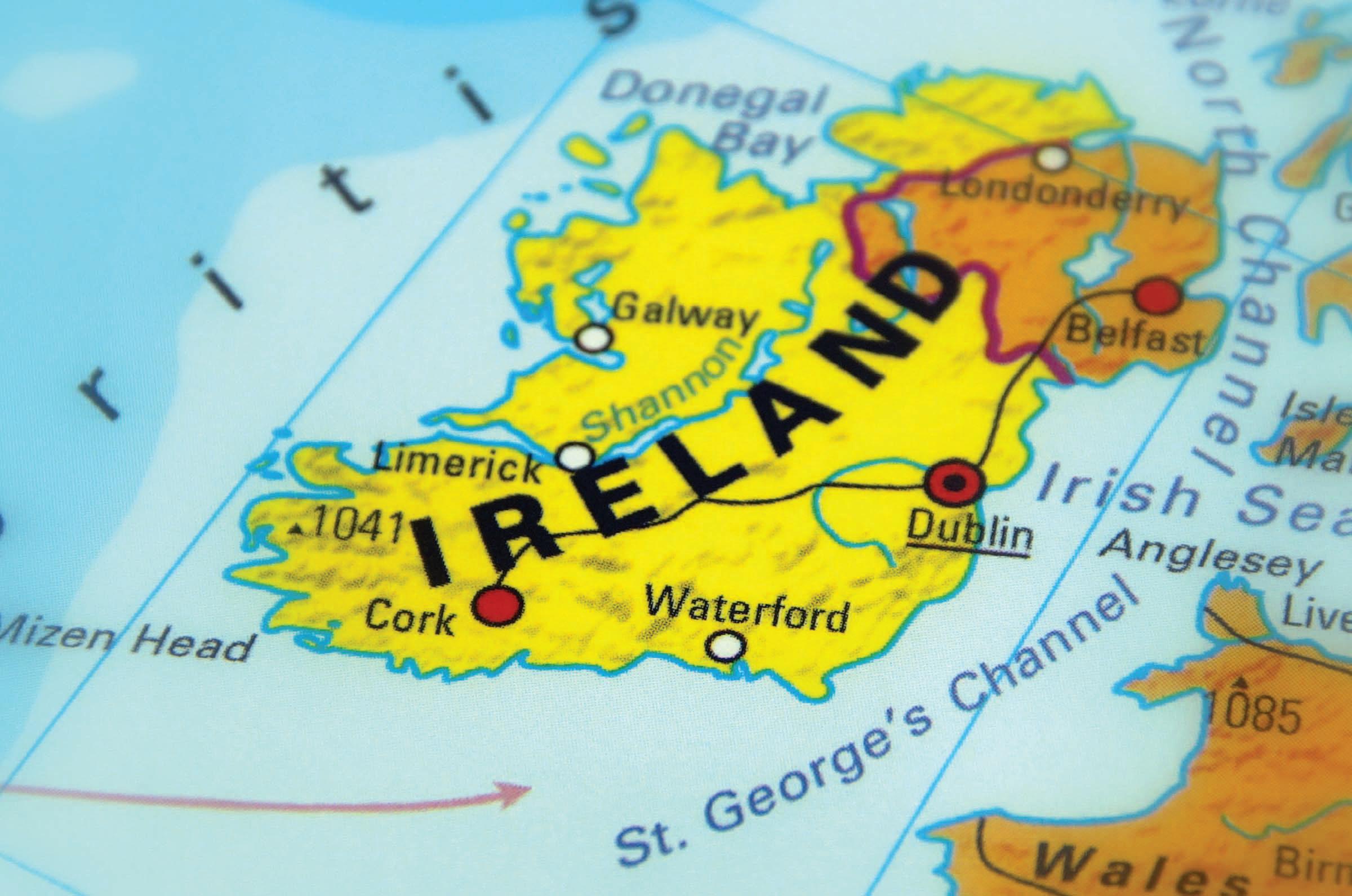
GDP growth in Northern Ireland is expected to average around 1.2 per cent per annum over the medium term, higher than in Britain but lower than the Republic of Ireland, research by the Economic and Social Research Institute (ESRI) has found.
In the absence of an up-to-date model for the Northern Ireland economy, a new macroeconomic model (an analytical tool to measure the impact of policy changes and economic shocks, as well as produce economic projections) developed by the Economic and Social Research Institute (ESRI) offers the ability to produce tailored forecasts and simulate the impact of various policies and shocks, fostering a nuanced understanding of Northern Ireland’s economy within the broader all-island context.
Northern Ireland has historically underperformed relative to both the Republic of Ireland and UK regions, with low productivity cited as a key factor.
By retaining frictionless trade with the
EU while maintaining access to the UK market, the region has opportunities to strengthen its economic performance.
The ESRI’s new model is tailored to account for these dynamics, offering insights into how policymakers can navigate this dual framework to drive sustainable growth.
According to the ESRI report, productivity challenges stem from lower levels of private sector investment, limited export intensity, and a smaller share of highly educated workers compared to the Republic.
1. Integrated framework: The model connects Northern Ireland’s economy to those of Ireland, the UK,
and the global economy through the NiGEM platform. This integration ensures that simulations account for cross-border trade, investment, and policy links.
2. Policy and shock analysis: The model enables the examination of a range of scenarios, such as tax adjustments, interest rate changes, and external shocks like global energy price fluctuations. By simulating these scenarios, policymakers can better understand their potential economic impacts.
3. Baseline forecasting: The model provides medium-term projections, including GDP growth, inflation, unemployment, and disposable income trends. For example, GDP


growth in Northern Ireland is projected to average 1.2 per cent annually over the medium term, which is lower than the Republic but slightly above the broader UK average.
4. Focus on investment: The model highlights the critical role of private sector investment in addressing Northern Ireland’s productivity challenges. Simulations suggest that higher public investment, funded by mechanisms such as increased block grants, can have a positive and sustained impact on economic output.
Northern Ireland’s GDP growth is forecast to stabilise around 1.2 per cent annually, with real personal disposable income also recovering postpandemic. Inflation, after peaking in 2022, is expected to remain low at an average of 2.4 per cent annually.
While these trends signal a period of stabilisation, they also underscore the need for strategic investments to spur long-term growth.
The model underscores the significant economic interdependence between Northern Ireland and Ireland. For instance, the Republic accounts for over 50 per cent of Northern Ireland’s exports, excluding those to Britain.
Positive economic factors in the Republic, such as increased consumption or export growth, yield measurable benefits for Northern Ireland. Enhancing cross-border collaboration, particularly in services trade, presents untapped potential for mutual growth.
A notable feature of the model is its ability to evaluate fiscal policy changes. For instance, simulations show that increasing income tax rates in Northern Ireland, if paired with strategic reinvestment in public infrastructure, can drive longterm economic gains.
Conversely, higher consumption spending yields less pronounced and temporary benefits. These findings provide clarity on how policy choices affect economic outcomes.
The model’s simulations reveal the vulnerabilities of Northern Ireland’s economy to global energy price shocks. In scenarios of rising oil and gas prices, short-term inflation spikes are followed by a gradual recovery in output and investment.
This insight highlights the importance of energy diversification and investment in renewable infrastructure to mitigate future risks.
Utilising the new model, there are three main factors for local policymakers to consider when determining future economic policy:
1. Boosting private investment: Encouraging private sector investment is essential for addressing productivity deficits. The ESRI asserts that policies that reduce the cost of capital and foster innovation – such as targeted tax incentives or enhanced infrastructure spending – can stimulate business activity.
2. Enhancing cross-border collaboration: Strengthening economic ties with Ireland, particularly in services trade and cross-border labour mobility, can unlock significant opportunities. Addressing logistical and regulatory barriers, while leveraging shared infrastructure, will be critical.
3. Maximising policy levers: The model illustrates the long-term benefits of public investment over consumption spending. To maximise prosperity within the ESRI’s framework, policymakers could prioritise investments in sectors with high multiplier effects, such as education, healthcare, and green energy.
The ESRI’s model is a key strategic insight into how Northern Ireland can reform its economic policy to account for the increased role of north-south trade in the region’s economy.
Adele Bergin, an author of the report and an associate research professor at the ESRI, says: “The newly developed model can provide key insights into the impacts of potential shocks and policy changes. It provides a more joined-up framework that enhances the capacity to consider economic shocks and policy choices that impact Northern Ireland, Ireland, the all-island economy, the UK and the international economy.”
Reacting to the report, Minister for the Economy Conor Murphy MLA said: “This is a robust new model that will help us better understand and reap the benefits of the all-Ireland economy.
“It will inform our decision-making in developing allIreland clusters in high-productivity sectors and emerging technologies. It will help us assess the operation of the Windsor Framework and maximise the benefits of dual market access.
“In an uncertain world, the research report will provide our policy makers with further tools to assess any future economic shocks and policy changes.”


• the establishment of a Commercial Delivery Group within the Northern Ireland Civil Service (NICS).
It is “disappointing” that there is no strategy for public procurement in Northern Ireland, the Assembly’s Public Accounts Committee has said.
In a November 2024 report, Public Procurement in Northern Ireland, designed to assess public procurement practices in Northern Ireland, the Committee states that it is “disappointed that the first key weakness is the absence of a specific strategy which should establish and clearly articulate the high-level objectives that public procurement is working towards the achievement of”.
The report indicates a specific strategy is an integral building block of the arrangements needed to coordinate a function such as procurement that is carried out across a range of different organisational, governance, and commercial market contexts.
In the absence of a formal strategy, the report acknowledges that the current structures used to deliver public procurement – the model of a network of specialised Centre of Procurement Expertise (CoPE) dispersed across the public sector – has, subject to some organisational changes, remained relatively stable in recent decades. However, in the Committee’s view, these
assurances are undermined by the “lack of sufficiently detailed and specific performance information that can provide overall assurance that this system is consistently working effectively and delivering effectively”.
The report also acknowledges that, between 2020 and 2022, a number of different initiatives had been undertaken that were all underpinned by a coherent vision of how public procurement could be modernised and work more effectively. These include:
• the reconstitution of the Procurement Board with a new membership structure;
• the introduction of five new procurement policies;
• clarification of the relationship between procurement policy and procurement guidance;
• the introduction of toolkits to provide best practice guidance to procurement staff;
• the inclusion of specific monitoring and reporting requirements in respect of each new procurement policy; and
Nevertheless, the report states that the committee remains “unconvinced” by evidence provided that the current structures used to deliver procurement in Northern Ireland are sufficient to meet the challenges faced and maximise the opportunities for efficient and effective procurement services.

In Northern Ireland, most purchases made by public bodies (contracting authorities) are undertaken with the support of one of nine Centres of Procurement Expertise (CoPE). These centres work in partnership with contracting authorities providing technical expertise and ensuring procurement exercises are compliant with legislation and designed in a way that delivers maximal value.
However, owing to the number of centres and the small geographical size of Northern Ireland, the committee has question the effectiveness of this approach, arguing that a region the size of Northern Ireland would benefit from a centralised approach in order to ensure best value for money.
The Department of Finance has said that current arrangements represent an attempt to “effectively balance and manage the competing costs and benefits that can be offered by centralised and decentralised delivery models”.
In spite of the Department’s assertion, the Committee recommends that, within six months of the establishment of a procurement strategy, the Department of Finance establishes a set of metrics that will be used to provide the basis of cross-sectoral performance assessment for the effectiveness of procurement and ongoing evaluation of the impact and value of current CoPE structures.






Julie Thompson, head of the Environment, Marine, and Fisheries Group at the Department of Agriculture, Environment and Rural Affairs (DAERA), spoke at the recent Environment Ireland Conference on a range of matters including the implementation of the Environmental Improvement Plan (EIP) and Northern Ireland’s legally binding decarbonisation under the Climate Change Act.
As environmental challenges reach new levels of urgency globally, Northern Ireland faces its own set of challenges and opportunities. Thompson describes the path forward, emphasising that “we are at a pivotal time for the environmental sector,” both locally and globally.
On the Environmental Improvement Plan (EIP), published by DAERA on 27 September 2024, Thompson says that it “sets out the steps that DAERA and indeed all other Executive departments intend to take to significantly improve our natural environment”.
“This plan establishes a foundation for transforming Northern Ireland’s approach to environmental policy through oversight, annual reporting, and a framework of six strategic objectives,” she adds.
Thompson states that finding a sustainable balance is “no easy task”, acknowledging: “Delivering against the six strategic objectives is essential for delivering real improvements in the quality of the environment for decades to come, whilst also improving the health and wellbeing of all who live and work in Northern Ireland.”
A critical element of delivering the EIP will be the need for cross-border cooperation. Asserting that “environmental challenges know no borders”, Thompson outlines that delivering the actions in the EIP requires collaboration on a “north-south basis, as well as working on an east-west level with the other UK administrations”. This approach, she states, seeks to “strengthen environmental protection efforts across the island”.
The main legislation driving climate action in Northern Ireland is the Climate Change Act (Northern Ireland 2022), which sets targets of net zero emissions by 2050, with five-year interim carbon budgets.
“DAERA and the other Executive departments are committed, through the legislation, to produce a credible draft Climate Action Plan which will be published for consultation as soon as possible,” Thompson states. However, she states that achieving net zero will require “significant transformation” across public services, business practices, and personal behaviours. “The path to net zero calls for an unprecedented level of crossdepartmental cooperation across public, private, and third sectors,” she says.


On biodiversity, Thompson states that a recently published report from the Office of Environmental Protection is a “stark reminder” that we need to restore the diversity of Northern Ireland’s habitats and species.
“The report on the drivers and pressures affecting nature in Northern Ireland was published by the Office of Environmental Protection,” she notes, citing the urgent need for a Nature Recovery Strategy.
This strategy, which is being developed through cross-sector collaboration, aims to halt the loss of habitats and endangered species by integrating biodiversity into broader environmental initiatives. “The interconnections are clear,” emphasises Thompson, suggesting a “need for coherence across environmental and agricultural policy.”
In the context of the environmental crisis surrounding Lough Neagh, Thompson says that improving its water quality has become “one of the first-year priorities for the Northern Ireland Executive,” with a dedicated action plan addressing four core areas: education, incentivisation, regulation, and enforcement.
Although she says that the challenges at Lough Neagh brought the focus to that waterbody and catchment area, Thompson stresses that “lessons will need to be learned” and that “we will need to work together to improve water quality right across the entire island of Ireland”.
Balancing food production with environmental goals Thompson says, is particularly complex given that “75 per cent of our land is in agricultural use”. While the agri-food sector is crucial to the economy, it is also the single greatest largest emitting sector.
“Farmers have an important role to play in producing food sustainably, as well as helping to manage the land for the environment,” Thompson says, further explaining that the Farm Support and Development Programme will include the
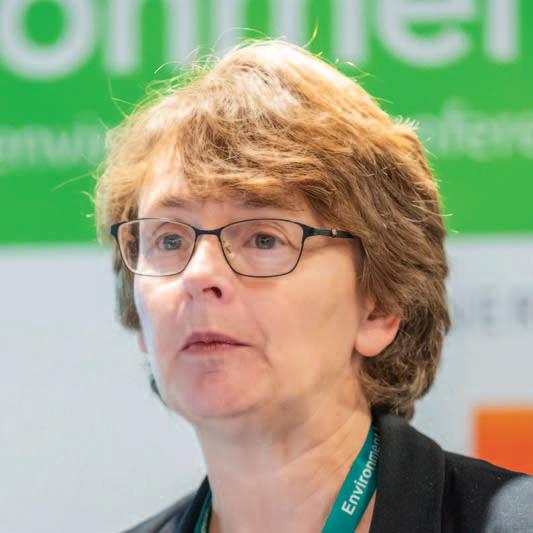
“Farmers have an important role to play in producing food sustainably, as well as helping to manage the land for the environment.”
Farming with Nature package to “help farmers balance production with sustainable land management”.
Furthermore, she stresses that ammonia emissions from agriculture remain a critical challenge, with the sector producing 97 per cent of the total ammonia emissions.
As such, now in its third year, Thompson indicates that DAERA’s Soil Nutrient Health Scheme, is serving as an “innovative model for managing nutrient pollution from agriculture”.
“By providing farmers with detailed soil nutrient analyses, the programme reduces phosphorus runoff, thus helping to improve water quality. This programme not only aids individual farmers but also offers regional benefits, illustrating how technology and data-driven solutions can support sustainable practice.
“This data will help individual farmers to improve their nutrient management planning for more efficient crop growth, but it will also help reduce pollution of our waterways,” Thompson explains.
Recognising the importance of air quality, Thompson outlines that DAERA is advancing a Clean Air Strategy, in which
commitment to a circular economy is “high on the agenda”.
From bans on single-use plastics to financial support for recycling programmes, the circular economy goal aims to reduce waste, increase recycling, and minimise environmental impact.
According to Thompson, “DAERA will continue to support local councils through the £23 million household waste recycling, collaborative change programme”. Additionally, she says that efforts to harmonise waste policies with other regions will “help align sustainability efforts across the UK and Ireland”.
Concluding, Thompson states that DAERA’s vision for Northern Ireland is a “strong green economy” which “values its resources and actively closes the loop by putting as many of our resources back into the system as possible”.
By embedding sustainability into agricultural policies, she states that the Department is working to “preserve its natural heritage while achieving economic prosperity”.
Equipped with this roadmap, Thompson expresses optimism that “we can deliver that vision for all our society” by working collaboratively.

Amplifying children’s voices, safety, and rights in Northern Ireland’s family court system
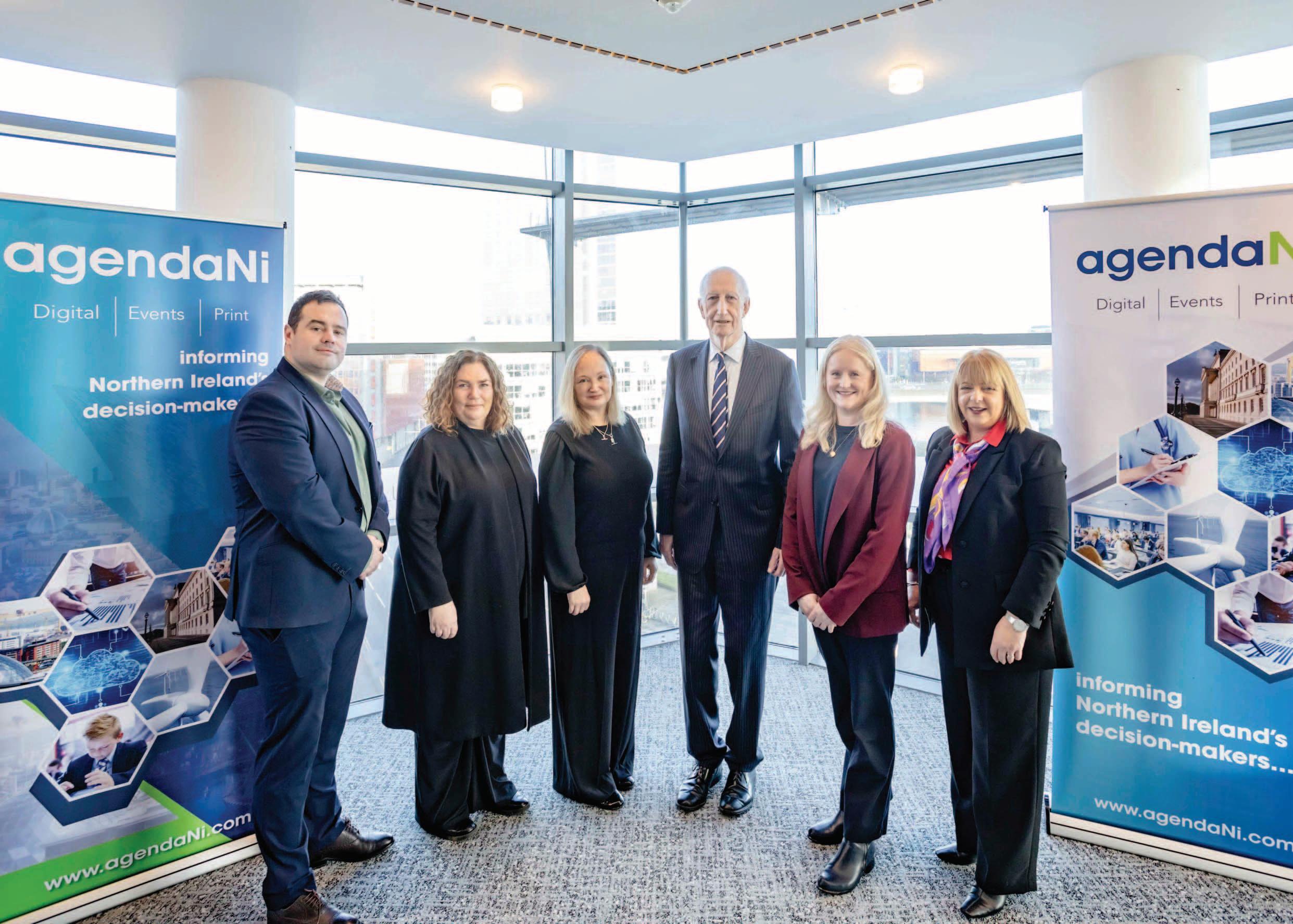
The Commissioner Designate for Victims of Crime hosted a round table discussion with key stakeholders across the family court system to discuss the role of a child’s voice, rights, and safety.
How has the presence of children’s voices in Northern Ireland’s family court system evolved?
John Gillen
My review of civil and family justice in 2015 recommended the need for the voice of the child to be heard in Northern Ireland. I think that inadequate action has
Round table discussion hosted by
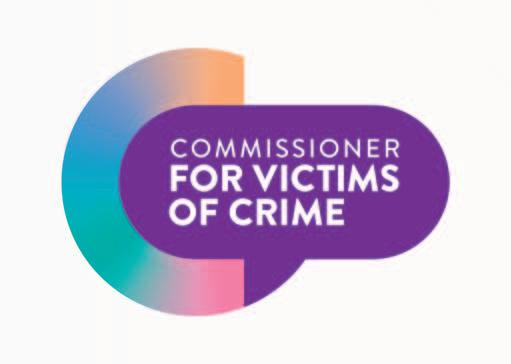

taken place on implementing this. There are three key considerations when assessing the evolution of children’s voices in the family court system. Firstly, progress is being stifled by the lack of resources. Secondly, we must take caution when transferring solutions from Britain to ensure they are adaptable to Northern Ireland. Thirdly, a number of longstanding weaknesses have yet to be resolved, for example, how judges speak to children and the concept of open justice when reporting judgements.
Edel McKenna
The Children’s Court Guardian Agency role is to represent the child’s best interests and ensure their wishes and feelings are made clear to the court. Over the 29 years of our existence, we have developed and improved our practice and interventions. Feedback from judiciary and solicitors, as key
stakeholders, and our children and young people, has enabled us to strengthen the voice of the child. However, we cannot be complacent; there is always room for improvement. We are working in a system which is extremely pressurised. There are a multitude of challenges and we must also be determined to do better.
Geraldine Hanna
What we hear from victims of domestic abuse – as their cases go through family courts – is that there is not enough engagement with the children and their views are not being sought out. I have commissioned academics in Queen’s University Belfast to undertake research around how victims of domestic violence experience our family court system. That, I think, will help give us a better evidence base, not only in terms of children’s wishes and feelings regarding contact and their experience with their parents,
but also how decisions are communicated to those children and young people.
Gaynor Lloyd
What has come through very clearly in all the research that has been done to inform the Pathfinder programme is that young people feel very strongly that their views are not being properly accounted for. They feel patronised and they want to speak directly to judges. In the Pathfinder programme, there is a presumption that children will be offered an opportunity to meet directly with the judge, and a lot of children are taking that up. We have also refined our process so that there is a requirement now in every child impact report, and in every final order, about how those decisions are going to be communicated to the child, so that there is transparency and accountability.
For us as judges, there is a qualitative difference between engaging with children in public law and private law cases, we are far more comfortable in discussing with a child any state interference in their lives, but far more squeamish about asking a child about their views on parental disputes. That is something we are trying to rectify.
Gráinne Murphy
Prior to the Children Order 1995, the courts very much relied on welfare officer reports but the Order, in trying to ensure the child’s voice is heard in public law proceedings, brought about what is now the Children’s Court Guardian Agency. In public law courts, the guardians and their solicitors are doing their best with the available resources and there is much more appreciation of the need and amount of training of judges when it comes to obtaining the voice of the child, which may include speaking directly to the child. There also is VOYPIC (voice of the young person in care) who help young people advocate their wishes. However, access to the children court’s guardians in private law proceedings is largely missing and is something that has been advocated for, for a long time. Instead of guardians, the courts dealing with private law contact/residence applications, hears the children’s voices from the parents and the Court Children’s Officers (social workers attached to the court). Occasionally, the official solicitor is appointed to represent the child. What we are seeing is resource and time pressures impacting on the child’s voice being heard independently in the private family court system.




John Gillen
The Right Honourable Sir John Gillen was called to the Bar of Northern Ireland in 1970 and took Silk in 1983. He was appointed a High Court Judge in January 1999. In January 2001, he was assigned as the Family Judge and in September 2008 he was assigned as the Senior Judge of the Queen’s Bench Division. He was sworn in as a Lord Justice of Appeal in September 2014. In September 2017, he published his Review of Civil and Family Justice which was undertaken at the request of the Lord Chief Justice. He retired on 7 November 2017.
Geraldine Hanna
Geraldine Hanna is the first Victim of Crime Commissioner Designate Northern Ireland, having previously been the Chief Executive of Victim Support NI since 2015. Her role is to amplify the voice of victims of crime to drive positive change and since taking up the post she has published a number of important reports, as well as carrying out the first victim survey open to victims of all crime in the region. She has over 24 years’ experience in the victims’ sector and has been the driving force on many landmark improvements including the introduction of Sexual Offence Legal Advisors (SOLAs) and Independent Sexual Violence Advocates for adults and children to the region.
Gaynor Lloyd


Her Honour Judge Gaynor Lloyd is the Designated Family Judge for North Wales and sits as a nominated Judge of the Court of Protection and deputy High Court Judge. After reading law at Nottingham University, she was called to the Bar at Lincoln’s Inn in 1992. She practiced as a common law barrister in Chester and Manchester, specialising in family law. She became a Recorder in 2012 and a full time Circuit Judge in 2015. She has sat in the Crown Court, Civil Court, and Family Court.
Edel McKenna
Edel McKenna is the Chief Executive of the Children’s Court Guardian Agency NI. The agency provides a specialist independent social work service to children and young people ensuring their views, wishes and feelings are included within public law proceedings. McKenna has over 30 years’ experience as a social worker working within children’s services. Prior to joining the agency, she was an Interim Co-Director in the Belfast Health and Social Care Trust with responsibility for a range of early intervention and child safeguarding services.


Gráinne Murphy
Gráinne Murphy KC was called to the Bar in 1992 and the Senior Bar in 2024. Her practice focuses mainly within the Family Division, High Court and at County Court level. She is currently a member of the Bar Council and a former Chair of the Family Bar Association. Over the years, she has developed a high degree of specialisation of Children and Adoption law through representing parents, competent children and Children’s Court Guardians throughout Northern Ireland.


“We are not sufficiently investigative in the way we conduct family law cases and there remains an adversarial undercurrent.” John Gillen
What are the obstacles to improved safety and rights for children in this context?
John Gillen
The evolution of the child’s voice in Northern Ireland law has been more theoretical than practical. In my view, we are not sufficiently investigative in the way we conduct family law cases and there remains an adversarial undercurrent. There needs to be a better understanding that ‘the best interests of the child’ and the ‘child’s view’ are two different concepts and need to be treated as such. In the criminal justice system we now have SOLAs (sexual offences legal advisers) where every single victim now has a right to have a legal adviser and I think there is a role for representation of a child across the system, recognising that children have a right to have their view expressed, irrespective of whether a guardian thinks it is in their best interest or not.
Edel McKenna
The separation of court welfare services in Northern Ireland has presented a challenge for not only the judiciary and solicitors, but equally for Children’s Social Care Services and the Children’s

Court Guardian Agency. One potential obstacle to improved safety and rights is the perception that a court children’s officer is perceived by a family as social services, and this can create anxiety. The Children’s Court Guardian Agency has the added advantage of being independent of all parties and is not the
lead safeguarding agency. Currently, the agency is only involved in public law proceedings when directed by the court. Professor Ray Jones’ recommendation within his review of children’s social services in Northern Ireland that private law court welfare services should come in under the auspices of the Children’s Court Guardian Agency, who have the specialism, expertise and, credibility is welcome. However, this organisational change would require significant funding and resource.
Children’s Services within Trusts are facing considerable challenges linked to workload pressures, staffing shortages, and multiple competing demands. These are all contributing to delays in the court system, including private law proceedings.
Geraldine Hanna
One of the greatest obstacles is the slow pace of change in Northern Ireland with regards to reform. Without reform, resource continues to be a challenge across our court system. By way of example, the same support and advocacy for children does not exist in private law and we know there are ongoing challenges around remuneration for civil legal aid and increased levels of self-representation. If the quality, advice and representation for the parent is being impacted, what does that say about how we are going to learn and understand the child’s view?
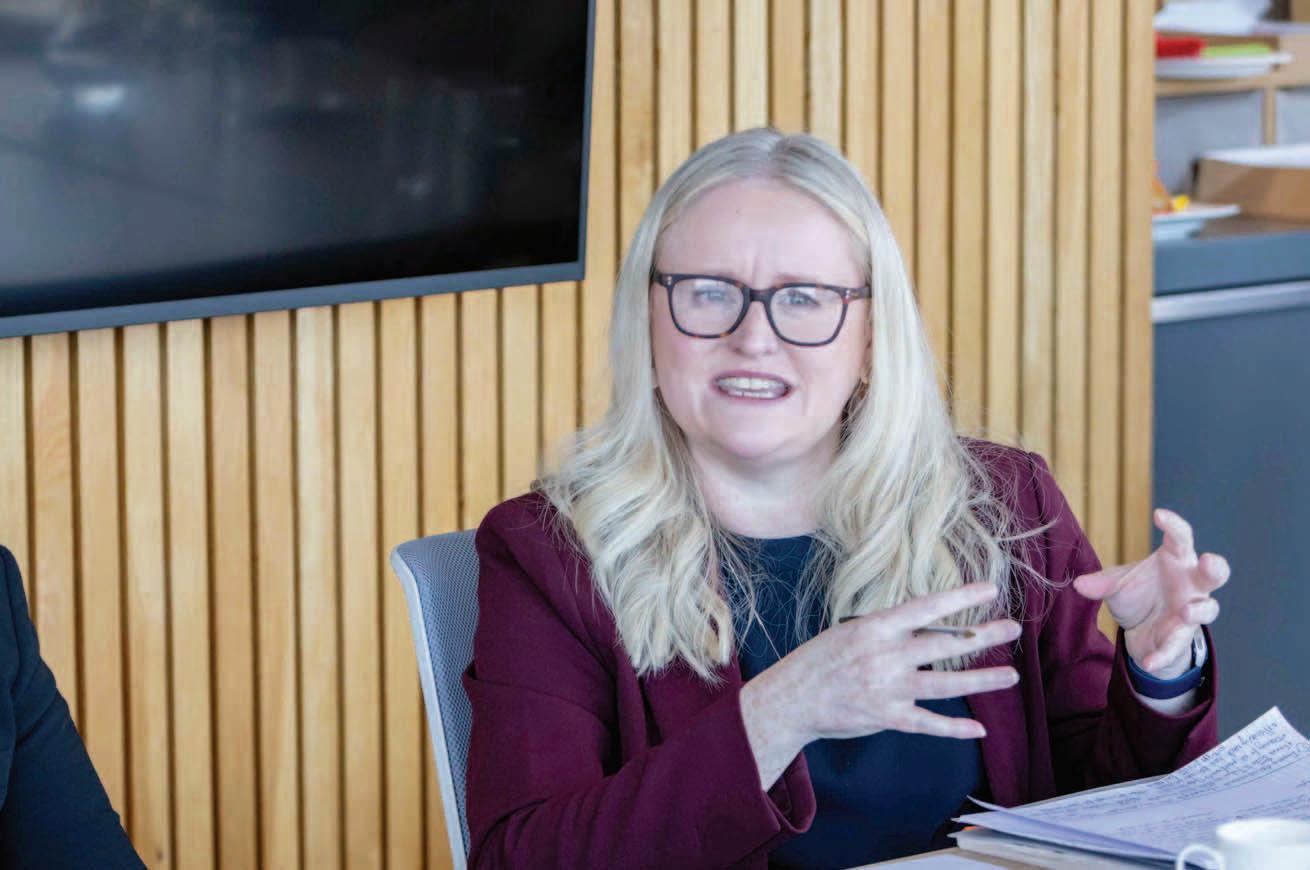
“One of the greatest obstacles is the slow pace of change in Northern Ireland with regards to reform.” Geraldine Hanna


Gráinne Murphy
The Re: L Court of Appeal hearing in England and Wales, which was incorporated in to our case law by Sir John was an interesting concept which essentially paused proceedings after a fact finding hearing on allegations of sexual or domestic abuse, to allow for a professional assessment on whether the perpetrator had any insight in to the impact of their behaviour on the children and whether they were willing to change their behaviour. That approach seems to have fallen out of favour and, anecdotally, what we now see in private law contact proceedings is that the court proceedings do not end until there is some form of contact. I do wonder if those decisions in the Court of Appeal if they had the same understanding and knowledge of the long-term impact domestic abuse has on children as exists today, why our courts are not investigating whether the alleged perpetrator does understand the impact of their behaviour on the parent with care and the child – and whether the voice of the child is being lost in the middle of all of this.
One of the obstacles to improved safety and rights for children is the resources available to consistently train and update the legal profession and social services in the area of domestic abuse and coercive control, and the impact of trauma on safe contact. On the judicial side, I believe there could be a specialised family court in cases where domestic abuse is raised and found to mitigate against a court system which advocates ‘moving forward’ with a case – which often means some form of contact without a full understanding of the circumstances, or importantly, hearing the voice of the child.
How can the risks associated with a
‘procontact’ culture be best
mitigated?
Geraldine Hanna
The best way to mitigate the risks of a pro-contact culture is to ensure we do not have one. Whilst pro-contact is not written in legislation, the experience of parents we have spoken to is that they feel pushed in this direction, with the safety and best interests of children not always well understood. We need to ensure that the decisions being taken are appreciative of the fact that contact should not be a binary decision.

“More resolutions are being found because things are being considered primarily through the prism of the impact upon the child.”
Gaynor Lloyd
John Gillen
I think we are insufficiently investigative. For example, in the Re: L, one of the fundamental problems is that it is based on an adversarial approach. I cannot understand why, in cases where domestic abuse is alleged, the investigative court approach does not require multi-agency reports, including from the police and the school.
Edel McKenna
The baseline has to be the safety. There are very few cases where the decision around contact is binary so we need to approach this from a training, education, and trauma-informed perspective. The system must move from a position of assumed contact to a position of what is safe and in the best interests of the child. It must take account of the child’s lived experience and its impact alongside the importance of parental relationships and this must be grounded in safety as the primary consideration.
Gaynor Lloyd
Interestingly, in rolling out the Pathfinder programme, we expected to make a lot more ‘no contact orders’ than has been the case, and that is a uniform feature across all four pilot sites, despite very different cultural and practical circumstances. We have found that a shift in language to a more inquisitorial problem-solving approach, where we empower parents, who are best placed to understand their own family dynamic, means that more resolutions are being found because things are being considered primarily through the prism of the impact upon the child.
Gráinne Murphy
The Bar agrees that a multi-agency approach would better inform decisions taken by the court, but again, there is a challenge around resources and implementing this model. The Pathfinder programme is an interesting concept, my only concern would be whether it fully mitigates the challenge of a parent agreeing to contact because they want to get to the end of the legal process and how it manages cases effectively when domestic abuse is a factor. Our Children’s Order does not have the same pro-contact


“There are very few cases, where the decision around contact is binary, so we need to approach this from a training, education, and trauma-informed perspective.” Edel McKenna
presumption as England, yet the system undoubtedly leans that way, often with proceedings not ending until overnight contact is secured. A potential mitigation is addressing the fact that the information-sharing, for example, with schools, PSNI, probation, linked criminal proceedings, which exists in public law does not happen to anywhere near the same extent in private law and so the court will have more information before making any decisions regarding contact which is in the best interests of the child.
How might solutions, such as the pathfinder model used in England and Wales, be adapted to best meet the needs of children in Northern Ireland’s family court system?
Gaynor Lloyd
The adversarial system does not fit private law very well and does not serve families well, both during and after the proceedings. In response, many countries are attempting to deliver mediation or non-court resolution solutions but this approach was completely undermined by the Ministry of Justice’s Assessing Risk of Harm to
Children and Parents in Private Law Children Cases report which recognised the harmful impact of pushing mediation on victims of domestic abuse. Pathfinder is inquisitorial in nature and adopts a multi-disciplinary approach, front-loading the work to get as much information as

early as possible, which is then collated in a Child Impact Report. The model focuses on working with families and less adversarial language used in the court process to support a more problemsolving approach and a core feature is the involvement of children from the very beginning of proceedings so that in most cases the child is given the opportunity to participate in proceedings in the way they want to.
John Gillen
The key is the multi-agency, nonadversarial, child-focused approach. Breaking down silos is a key ingredient and while there are aspects of Pathfinder that might be difficult in the Northern Ireland context, the thrust of the Pathfinder concept should be introduced into Northern Ireland.
Edel McKenna
Pathfinder’s greatest asset is good practice, which leaves the courts in a much better footing to be able to make good decisions. Although we are awaiting the evaluation report of Pathfinder, everything to date is saying it is the right thing to do and I think there is a willingness in Northern Ireland to roll up our sleeves and get on with it. However, this is not just an onus on the Department of Justice, it involves many stakeholders, including health. If we want to improve our judicial system for our
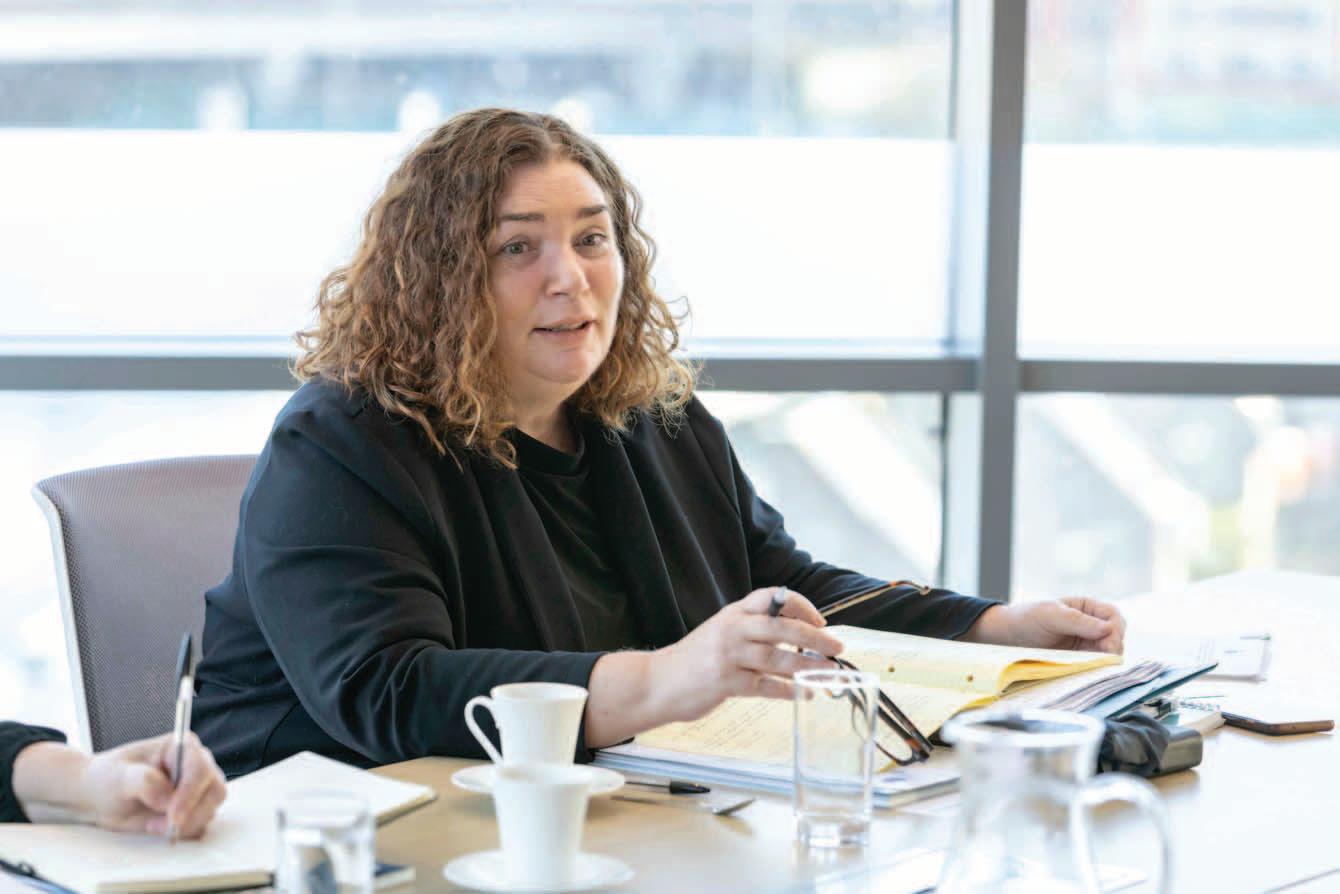
“I believe there should be a specialised family court in cases where domestic abuse is raised and found.” Gráinne Murphy

children and families, we have got to do better than what we are doing now. That does not necessarily mean a massive injection of new resource, albeit this will be an important component to enabling improvements, but it does mean making better use of the current resource.
Geraldine Hanna
I had the privilege of being able to go and visit the Pathfinder Dorset model with the Domestic Abuse Commissioner in England and Wales and something that really struck me was that there is faster case resolution and there are fewer cases returning. We cannot expect this approach to be a silver bullet, but, it would be ridiculous for us not to look at a model like Pathfinder, which has generated so many positive outcomes.
Gaynor Lloyd
In Wales, the average Child Arrangements Programme case was taking 35 weeks, whereas the average Pathfinder case takes 17.9 weeks. In North Wales, we have seen a reduction on average from 6.3 hearings per case to 1.8 hearings per case. We are finding that around 80 per cent of cases are resolving either by consent, without a hearing, or at that first hearing, which takes place around week 10. So, 80 per cent of children are in and out of system in 10 weeks, rather than taking several years, as many were. That allows our resources to focus then on that 15 to 20 per cent of difficult cases, where our intervention is really required.

Gráinne Murphy
I think we should put the Pathfinder programme on our family justice agenda to consider if and how it could benefit our system, as there remain differences between the law and practice between the two legal systems. I do think there is a misunderstanding about the ‘adversarial’ system in that most children’s cases are solved via negotiation outside the courtroom, with a court hearing as the last resort rather than all cases proceed to full blown evidential hearings. I am interested to hear that there remain cases that must have evidential hearings in the Pathfinder programme but that they are triaged by the court at an earlier stage in proceedings and only after there is a child impact report. If this is a system that continues to recognise and protect the Article 8 rights to family life and the child’s right to be included in decisions about them, then it should be further investigated and discussed in Northern Ireland.
What are the immediate strategic priorities to amplify children’s voices, safety, and rights in Northern Ireland’s family court system?
Gráinne Murphy
We need a cultural change whereby the Children Court Officer’s court report is more akin to the child impact reports which are directed in the Pathfinder

programme. I understand that they are considered truly child-centric and focus on other aspects in a child’s life and safeguarding issues which more accurately reflects the views of the child other than a report detailing what a child says in response to questions about their living arrangements. That requires resources, training, and better access to information. I also think we need to consider if there should be a shift from the scenario where almost all contact applications run until overnight contact is achieved and instead focus on what is safe for the child at that particular moment in that particular time in the child’s life.
Gaynor Lloyd
The Pathfinder programme is incredibly effective, but it is inoperable without the independent person doing the child impact report. Resource must be available to ensure that children are being allowed to give their opinions safely and freely.
Geraldine Hanna
We need to ensure we implement Professor Ray Jones’ recommendations swiftly regarding the child advocacy role in private law. We also need to see the introduction of learnings from England and Wales, including the recently published ‘Family Justice Council Guidance on responding to a child’s unexplained reluctance, resistance or refusal to spend time with a parent and allegations of alienating behavior’, to see what improvements can be made amongst our practitioners in the court environment.
Edel McKenna
As collective stakeholders, we need to consider the Jones recommendation, which suggests ceasing the separation of court welfare services in Northern Ireland and bringing public and private law under one umbrella organisation, similar to that of Cafcass and Cafcass Cymru. Also, to be able to be the lead in terms of helping the judiciary deliver on initiatives like the Pathfinder model. However, delivery will require funding and resource.
John Gillen
We need a renewed emphasis on a nonadversarial, multi-agency approach in the family justice system and the introduction of something to similar Practice Direction 36Z.

This year is the 26th edition of the Energy Ireland Yearbook. The Energy Ireland Yearbook is a high quality reference source for users interested or involved in Irish energy from inside or outside Ireland – this includes policymakers, regulators, energy sector company executives, facilities managers, large energy users and professional firms servicing Ireland’s rapidly developing energy markets.
The Energy Ireland Yearbook is the only detailed guide to Irish energy Content includes:
• Energy policy north and south
• Renewable and sustainable energy
• Overview of electricity market networks
• Gas sector including biogas

Benefits of advertising:
4 Direct contact with key decision-makers within the energy sector
4 Distributed directly to delegates at energy conferences north and south throughout the year
4 Excellent opportunity to profile/showcase your organisation’s goods/services to a key audience throughout the energy sector
4 Gain recognition as a thought leader
• Sustainable energy in industry and transport
• Digital energy
• Unique who’s who in Irish energy
• Transport and fuels
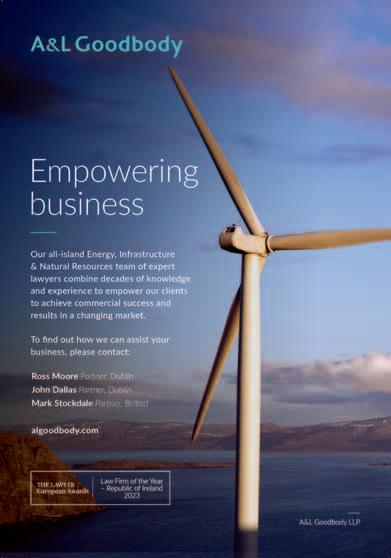


Tel: 028 9261 9933
Mobile: 07825 164 852
Email: gail.kinkead@energyireland.ie






Paul Duffy, Deputy Secretary responsible for Digital, Security and Finance Shared Services within the Department of Finance, discusses the opportunities and challenges in transformation of public services through digital.
“The pace of technological change we are experiencing is rapid and accelerating. This rapid growth in technology presents both opportunities and challenges for the delivery of public services,” explains Duffy.
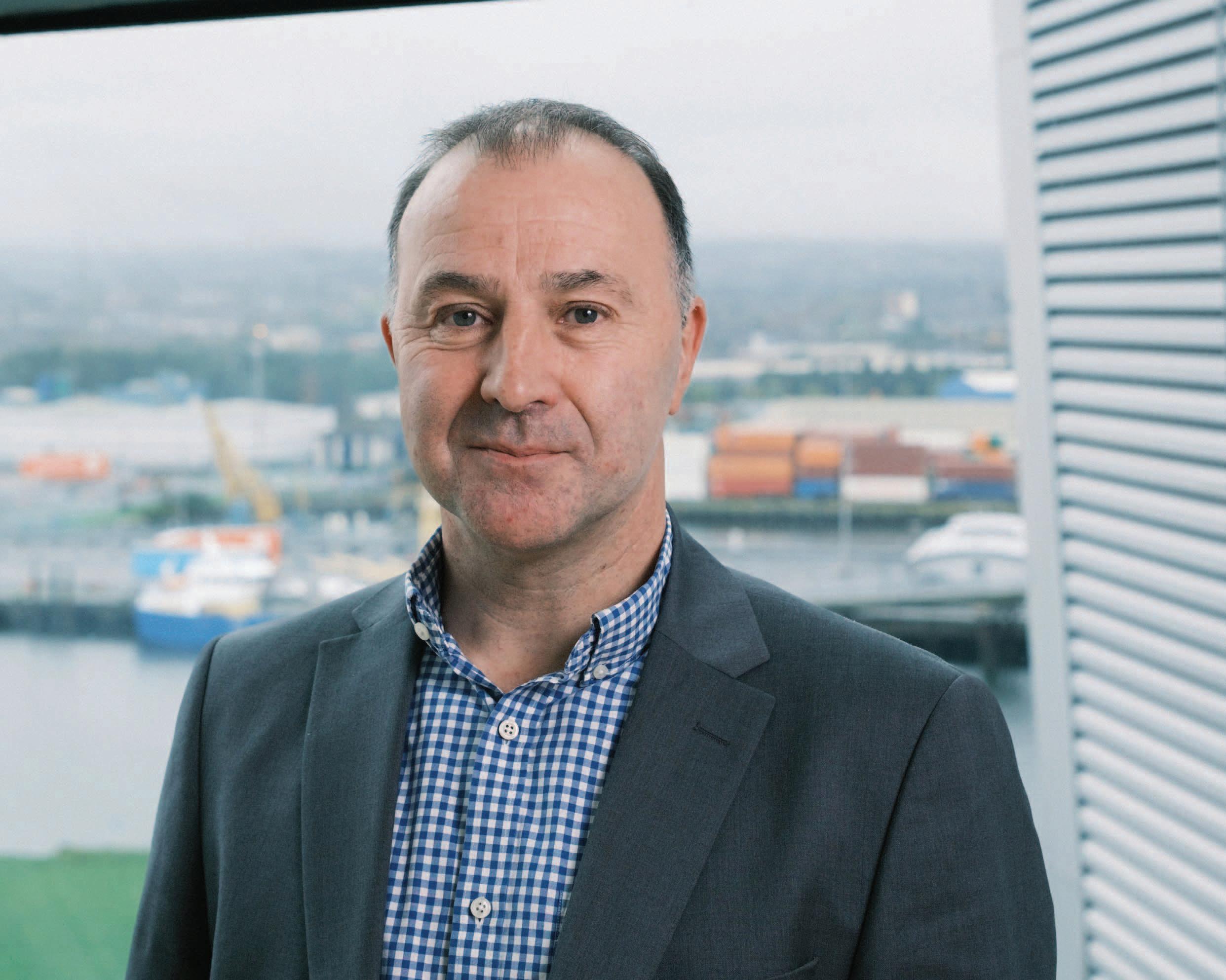


“It requires continuously adapting and innovating to keep up with the evolving technology landscape, and it requires a pace of change – and in some cases, a greater risk appetite – than the public sector has been comfortable with in the past.”

Stressing the changing demand landscape in which public services are being designed and delivered, Duffy explains that many of the early government services that have been digitalised were not primarily based on citizens accessing those services using mobile devices, yet currently, almost 75 per cent of information and services accessed on nidirect are through mobile devices.
“Over the past year, we have seen technological advances, most notably in artificial intelligence, presenting us with new opportunities for innovation and transformation. The way in which citizens wish to consume and access public services is constantly evolving, influenced by the

experience of services provided by large commercial platforms, and the services they use in their daily lives.
“The use of single sign-in mobile apps, with personalised content, which is not constrained by organisational boundaries, is what citizens are now expecting. Rising to meet these expectations will require change on a scale that government has never undertaken before.”
Underpinning this challenge has been the sustained growth in both the cost and demand for public services, which Duffy says is placing huge pressure on public finances and undermining service provision due to a lack of investment.
“Many sectors are in critical need of investment and reform to sustain and enhance the quality and efficiency of public services. The strain felt by public services in recent years cannot be fixed easily, even with funding at a level of relative need. For this reason, transformation needs to be prioritised and taken forward in order to deliver the public services people rely on and expect.”


Pointing to the draft Programme for Government’s recognition of the need for more efficient ways of delivering public services, Duffy says: “This will require brave decisions, collaborative working, and a relentless focus on innovation and efficiency in service delivery. This can only be achieved through partnership working, a willingness to accept change, challenges to the status quo, and long-term strategic decisions.”
The reform and transformation of public services is one of nine “immediate priorities” identified in the draft Programme for Government. Within that pillar, the Executive has pledged to establish a new reform and transformation unit at the heart of government, which Duffy explains will “work across all departments, ensuring priorities get the focus, the resources, and the efficient delivery they need”.
“We need to find a better balance which allows some degree of risk-taking.”


“It will be one part of a reform package, which will include a fiscal framework, a sustainability plan, and a transformation programme,” he states.
Duffy summarises three key elements of the reform programme, namely:
Service delivery transformation: “We need to change how we think about and how we deliver public services within departments, across departments and in partnership with the public, private and community sectors.”
Productivity and digital transformation: “We need to harness new technologies to speed up delivery and lower costs. By designing services to meet user needs, we need to simplify processes and improve performance.”
Innovation and research transformation: “We need to investigate and learn from global best practices, integrating them into our own service delivery approach. This will mean taking a well-judged risk, if needed, to adopt new technologies and try new things.”
He adds: “Reform and transformation cannot just be about money and how it is allocated. Instead, the focus needs to be on what we do, why we do it, and how we do it. This is a challenging ambition, one which will require strong leadership, trusted and capable partners, and a significant shift in culture.”
Duffy is keen to stress that while challenges to ambitious transformation exist, there are many opportunities to harness digital


technology to improve the lives of citizens and modernise the way government works. This, he states, requires a number of key enablers to be in place.
Elaborating, he says: “There are many examples of multiple departments and public sector bodies who citizens need to inform during a life event, such as moving house or the death of a relative. This fragmentation of service delivery does not meet the needs of citizens.”
While the focus is quite often on designing and delivering digital services, there is a need to address legacy infrastructure. “Outdated systems can be a significant barrier to implementing new technologies. We need to deal with the costly issue of legacy technology, that has been allowed to build up over multiple financial cycles, and is now a barrier to the delivery of policy and services.”
Alongside inaccessible and frequently poor data, inconsistently shared between government departments and public sector bodies, Duffy identifies struggles within the public sector to address a digital skills gap as one of the most challenging enablers.
“There is often a shortage of skilled staff to manage and implement digital initiatives. We are failing to attract top digital talent or to build capacity in-house at scale. We in the civil service need to address the skills gap that we see at all levels and compete more effectively with the private sector for these skills. Otherwise, our lack of skills will continue to hold us back and prevent us from achieving our ambitions.”


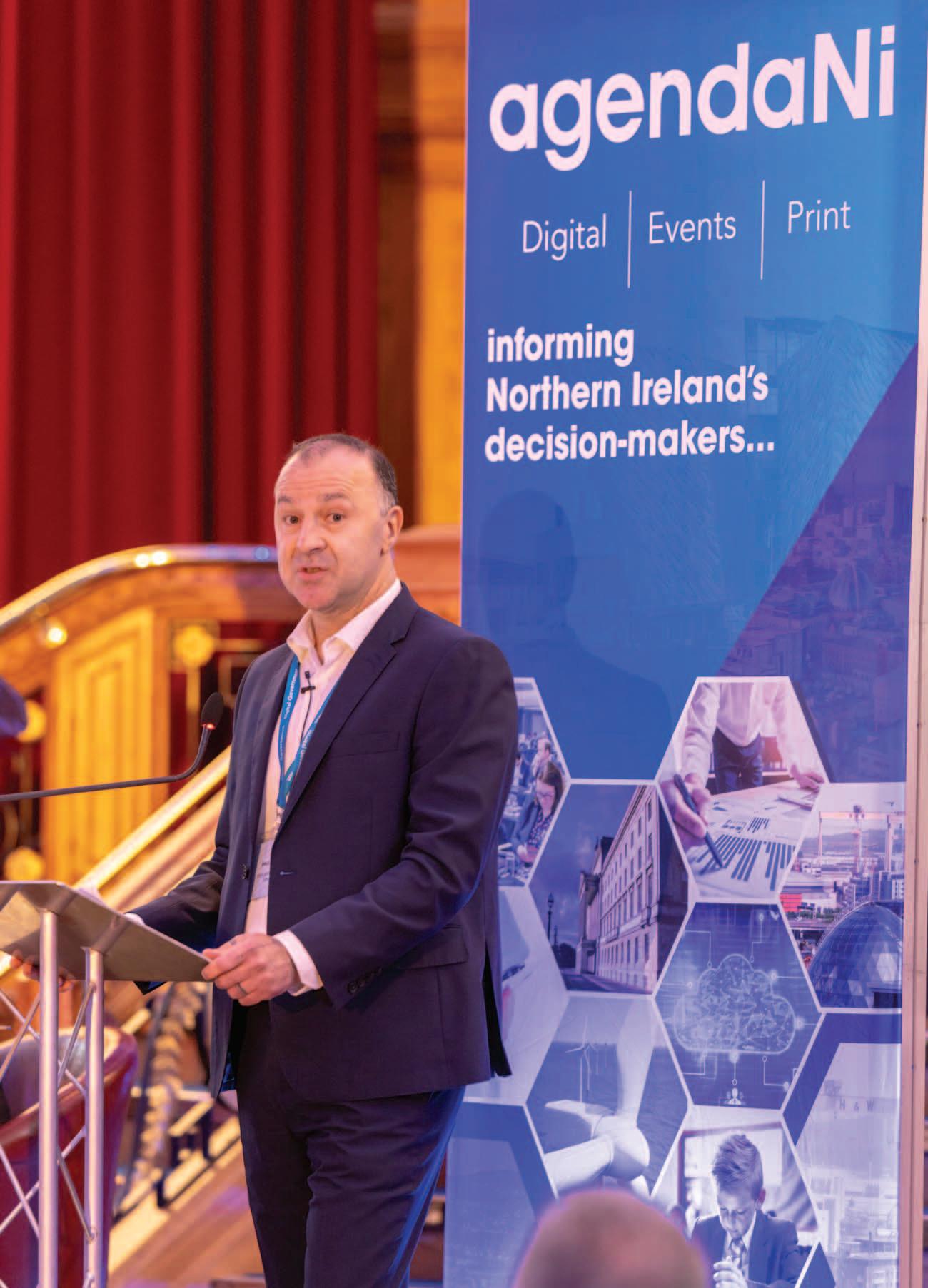
Critical to future public services, explains Duffy, is ensuring that services are accessible to all citizens, particularly with opportunities and services increasingly online.
“Digital inclusion is a basic need. If we prioritise digital-first services without addressing the barriers to digital inclusion, it is highly likely to result in increasing inequalities by excluding people who are able to benefit from digital services.
“Those designing services need to recognise the diversity of peoples’ digital capabilities and their ability to access services, and adjust accordingly. This consideration must be made at the outset, and not simply as an add-on after the service has been designed.”


Ireland’s budget, will need more and more funding year on year in the status quo, is evidence of the need to harness digital technology to transform the delivery of services.
In delivering solutions to transformation, he asserts, Northern Ireland has a massive opportunity.
“We do not showcase enough or talk enough about the many excellent services, designed, developed, and delivered here locally. We do not always have to be the followers. In many cases, we can lead the way.
“We only have to look at how we responded to the pandemic, proving that government can work at pace, and in an agile way to meet policy objectives through digital delivery. In that instance, due to the need to deliver at pace, the criticality of the services to be designed, developed and delivered, we operated in a much more responsive way.
“It was interesting to witness how with the need to respond to a crisis that many of our internal controls and approvals were set aside or scaled back, to allow delivery at pace, working in partnership with organisations across all sectors.

Turning to risk aversion, Duffy recognises that a reluctance to take risks can stifle innovation and progress. Acknowledging the public sector’s “risk averse” label, he highlights the context of an operational environment that does not reward risk-taking, indicating that the levels of scrutiny can drive “the wrong behaviours”.
“While it is right and proper that public servants are held to account for how they spend the public’s money. We need to find a better balance which allows some degree of risk-taking,” he says.
“Our ability to fail fast, learn, and recover, will be essential skills if we are to truly transform how we deliver public services.”
Concluding, Duffy points to the fact that health, which currently consumes 52 per cent of Northern

“In such a short space of time, we had a fully digital Northern Ireland Identity Assurance solution with a significant uptake from citizens. That solution facilitated access to a number of crucial digital apps designed and deliver at pace by our colleagues in health.
“We also witnessed colleagues in Land and Property Services pivot from collecting rates to designing and delivering a number of business support grants to support the local economy.
“We have many examples here where we are currently delivering digital solutions, utilising the latest technology, such as AI, to improve the delivery of public service, and enhance citizen engagement and participation.
“However, there is much to be done to truly digitalise and transform how we deliver public services, and this can only be delivered again through strong leadership, targeted investment, trusted and capable partners and a significant shift in culture.”
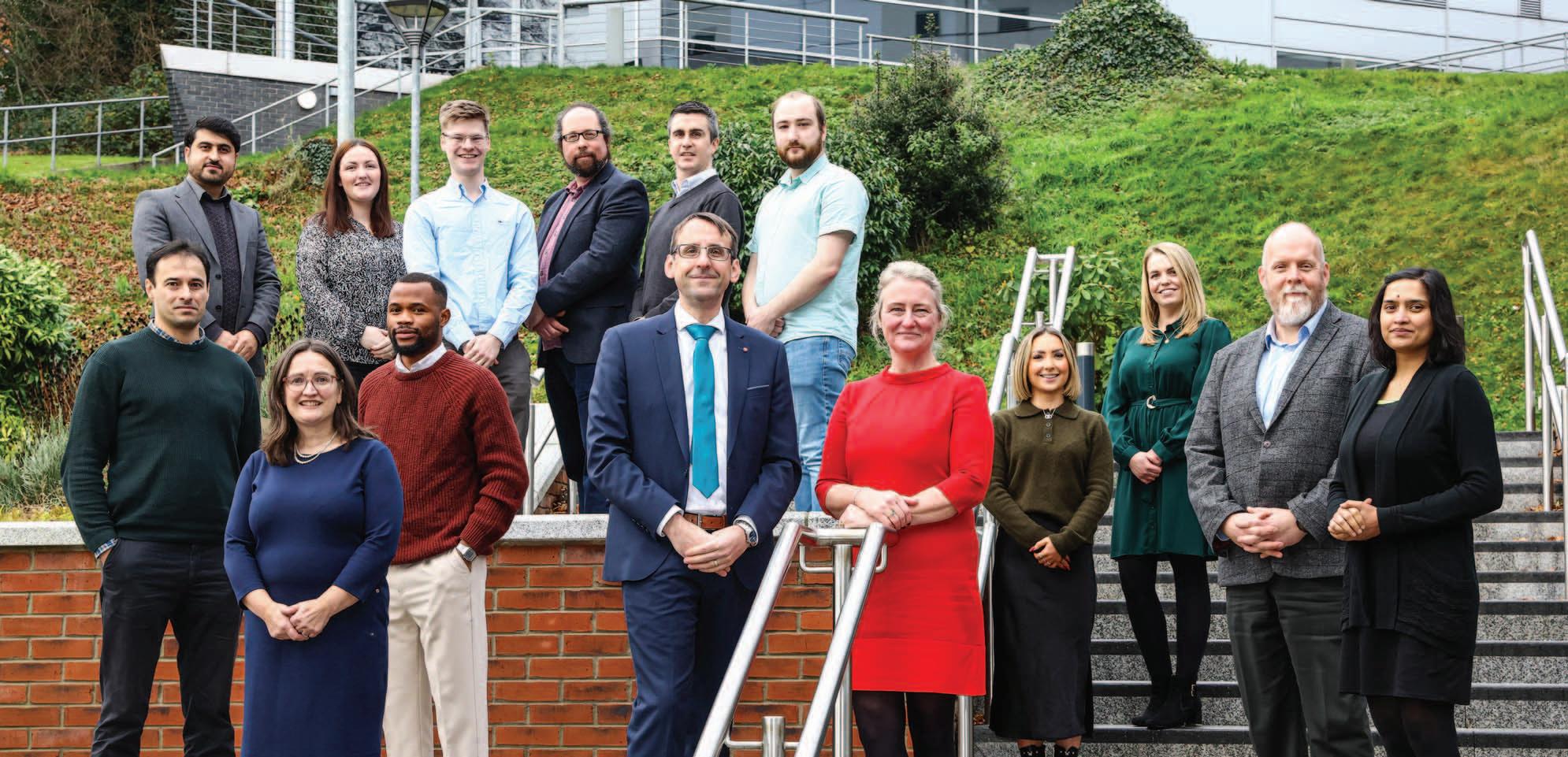
In today’s fast-evolving digital landscape, adopting artificial intelligence (AI) is no longer a luxury, it is a necessity. Yet, for many SMEs, navigating AI can seem daunting. That is where the AI Collaboration Centre (AICC) steps in.
With bases in Belfast and Derry~Londonderry, the AICC is Northern Ireland’s premier hub for AI innovation and support. Led by Ulster University, in partnership with Queen’s University Belfast and supported by Invest NI and the Department for the Economy, we are designed to empower SMEs by offering fully funded, practical, hands-on support, ensuring businesses of all sizes can unlock the transformative power of AI.
No matter what sector you operate in, we provide tailored education and training to demystify AI, helping your team stay ahead in a competitive marketplace. Our workshops, one-toone consultations, and bespoke training ensure SMEs understand how AI can solve real-world challenges, streamline operations, boost efficiency and create meaningful impact. At the AICC, we also connect you to a thriving AI ecosystem. Through our vast network of industry leaders, academics, researchers and pioneers, you’ll gain unparalleled access to collaboration opportunities, fostering innovation and growth.
The importance of AI adoption cannot be overstated, embracing it now is crucial to remaining competitive in the global market. By working with the AICC, SMEs can confidently take the first step to integrate AI technologies, while staying aligned with business objectives.
Join us in shaping a smarter, more innovative Northern Ireland. To learn more, contact the AI Collaboration Centre today and start your AI journey.
Let’s shape the future of AI, together.
Discover more: aicc.co
Follow Artificial Intelligence Collaboration Centre on LinkedIn
Get in touch: aicc@ulster.ac.uk

In an era where artificial intelligence (AI) is reshaping industries and public sectors worldwide, the ideal solution is a transformation partner that can cocreate next level innovation that is secured and delivered by local expertise.
By leveraging cutting-edge advancements and best practices from around the world, while maintaining a deep understanding of local needs and challenges, such a partner can deliver transformative solutions that drive meaningful progress and sustainable growth.
Unleashing the potential for Northern Ireland to lead the way in transformative AI is key to establishing the region’s position as an AI maker at the frontier of AI capabilities. In January 2025, the UK Government unveiled its AI Opportunities Action Plan – an exciting and bold
statement of intent. The International Monetary Fund projects that AI could boost UK productivity by 1.5 per cent annually, adding £47 billion in economic value.
This plan lays out a comprehensive vision, addressing infrastructure, practical applications, and collaboration. It is a promising framework, but the real challenge will be delivering measurable outcomes. What sets this plan apart is its emphasis on infrastructure, which is vital for long-term success.
Proposals for AI growth zones, a twentyfold expansion of public computing power, and the creation of a National Data Library show a clear understanding that innovation requires robust foundations. AI relies on data, computational power, and collaboration, and these initiatives aim to provide all three.
One of the more energising aspects of the plan is its focus on tangible, everyday applications of AI. From
assisting teachers with lesson planning to detecting potholes through computer vision, the Government showcases use cases that are practical and impactful. These might not grab headlines like autonomous vehicles or conversational AI, but they highlight where AI delivers real value – by streamlining processes, reducing administrative burdens, and enabling better decision-making. It is these kinds of “quiet” innovations that will drive meaningful improvements in productivity and public services.
The private sector’s confidence in the UK’s AI potential is another significant advantage. With £14 billion already committed to AI-related investments, it is clear that businesses are ready to play their part.
This kind of private-public synergy is exactly what is needed to accelerate progress, but collaboration must extend beyond funding. It is about sharing expertise, aligning on objectives, and fostering a robust talent pipeline to ensure that skills match ambitions. Upskilling workers, empowering leaders, and fostering AI literacy across sectors will be critical to achieving the plan’s goals.
What is most encouraging about the action plan is its sense of direction. It is ambitious but grounded, forwardthinking but pragmatic. By focusing on infrastructure, practical applications, and collaboration, it sets a strong foundation for success.
However, ambition is only the beginning; the real measure of this plan’s success will be its ability to deliver results. Can it translate bold ideas into cost savings, productivity gains, and improved public services? Early wins will be crucial for building momentum, securing continued investment, and sustaining public confidence.
Northern Ireland has already embarked on the journey and has the potential to blaze the trail in AI development and deployment; the region’s IT sector, close links to public services, and collaboration with universities create a fertile ground for AI innovation.

Initiatives like The Artificial Intelligence Collaboration Centre, which is a £16.3 million investment led by Ulster University and in partnership with Queen’s University Belfast are key to making this happen. Version 1 ensures that the latest advancements in AI are accessible across Northern Ireland’s public sector through a 500 strong team based in its Northern Ireland headquarters. This includes a dedicated AI Lab – a team of experts including researchers, engineers, analysts, testers, architects and advisors who work alongside data specialists across analytics, platform architects, data experts and delivery managers, all innovating differently for customers adopting AI.
This expertise is underscored by collaboration with global technology partners like Oracle Consulting. All of this is based around human-centred design, cocreating solutions with customers that span infrastructure, education, social good, inclusivity, and promote industry disruption. This is validated by multiple awards and certifications from third parties such as sourcing advisory organisation ISG, who ranked Version 1
as a global leader in Generative AI services and Oracle Cloud and Technology. That is the true power of a partner that can offer global reach but with a robust local presence, ensuring the knowledge and expertise is rooted in Northern Ireland so the region can continue to lead the way into the future.
Version 1’s unique blend of global capability and local expertise positions it as a leader in AI for the public sector, not just driving progress in Northern Ireland but setting the benchmark for the sector. The stakes are high, but so is the potential.
If Northern Ireland can fully embrace this vision, it will not only establish itself as a leader in AI but also demonstrate how the public sector can harness technology to achieve transformative progress.
Choosing the right partner to advance this agenda is not just important – it is critical.
Colm Gillard Managing Director - Enterprise Applications
E: colm.gillard@version1.com

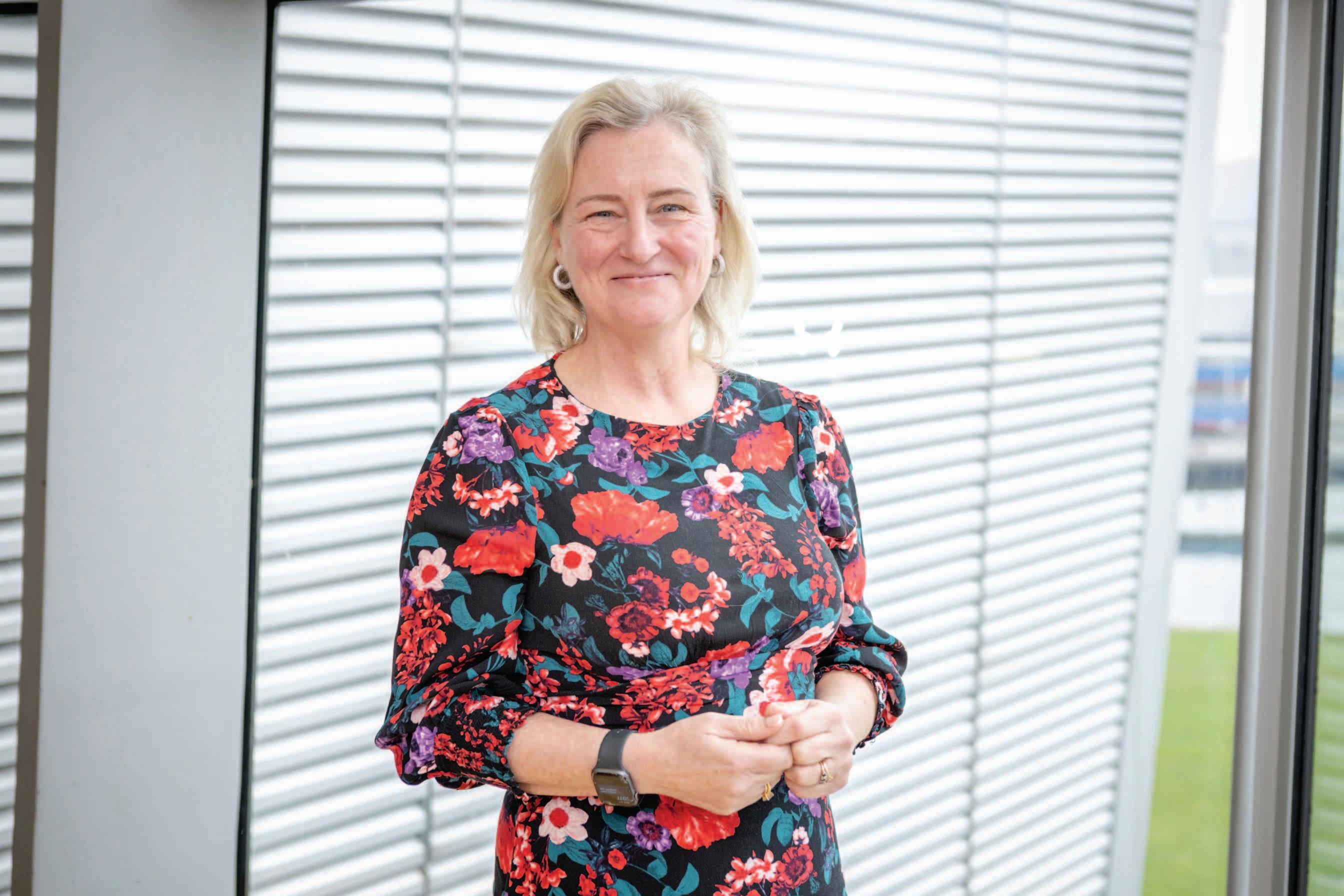
Michaela
Black, professor of artificial intelligence (AI) at Ulster University says that with careful planning, strong governance, and an unwavering focus on fairness and transparency, AI can be a transformative tool in creating more equitable and effective public services.
“One of the most compelling benefits of AI is its ability to enhance frontline services,” Black says, adding her belief that, in public sector settings, AI can act as an “intelligent interface, allowing citizens to ask questions and receive quick and accurate answers”.
“AI tools can sift through vast amounts of data, instantly providing citizens with the information they need, often creating the impression that they are speaking with a knowledgeable colleague rather than navigating an impersonal bureaucracy.”
What makes AI particularly powerful in this instance, according to Black, is its ability to retain context from prior interactions: “This means that when citizens follow up with additional questions or requests, they do not have to start from scratch”.
“The AI tool remembers past exchanges, helping to streamline communication and making the experience much more efficient. In a public service environment where staff are often overwhelmed with a high volume

of inquiries, AI can greatly alleviate this burden, enabling human workers to focus on more complex or sensitive cases.”
Talking on prospective uses of AI in the public sector, Black emphasises the prominent role that AI can make in enabling the transition towards more remote and self-service options in public services.
“As AI technologies evolve, they enable citizens to resolve challenges independently, without the need for direct interaction with a human agent.”
Black states that this shift is especially important in circumstances where in-person service is limited or impractical, such as during crises or in geographically remote areas.
“AI-powered systems allow citizens to find the information or solutions they need on their own,
reducing the need for human intervention. This, in turn, helps to reduce pressure on public sector workers and allows them to focus on more nuanced or complicated challenges.”
According to Black, this empowerment of citizens is a key factor in reshaping the public service experience:
“By providing self-service options, AI can make public services more efficient, flexible, and accessible to all”.
The Ulster University professor says she is optimistic about the potential for AI to accumulate institutional knowledge over time.
“As public service organisations use AI tools, these systems can learn from every interaction, building a wealth of knowledge that can be used to answer citizens’ questions more accurately and effectively.
“Over time, the AI system becomes an expert in its own right – drawing on a vast pool of information to provide reliable and precise responses.”
In Black’s view, this ability to accumulate and refine knowledge is especially beneficial in large organisations that handle a broad range of queries and services. By integrating AI into daily operations, she asserts that public service organisations can build a “deeper, more robust internal knowledge base”, which benefits “both citizens and employees”.
The AI tool, trained by the data it accumulates, becomes an ever-more efficient source of expertise, improving service delivery for everyone involved.
AI also plays a role in transforming the workforce in the public sector, according to Black. The younger generation, often described as “digital natives”, are wellversed in AI and other emerging technologies. Unlike previous generations, they are not intimidated by AI’s integration into the workplace but rather see it as an opportunity to enhance their work and productivity.
Black believes that the newest generation of workers, can bring “not only technical skills, but also an inherent understanding of how AI can be a tool for positive change”. She underscores that these digital natives will need to be equipped with AI literacy training.
“For AI to be integrated successfully in public services, employees must understand both its potential and its limitations. Without this training, organisations risk using AI in ways that could be inefficient or even harmful.”
While Black is enthusiastic about the potential of AI, she is equally aware of the risks associated with its adoption, especially in public sector settings. One of the most pressing concerns is the risk of bias in AI models, outlining that if AI systems are trained on biased data, there is a significant risk that they could perpetuate inequality or unfair outcomes. The Human in the loop (HITL) approach is vital in developing and widening
these new technologies, as is adhering to the REST principles: Responsible, Explainable, Sustainable and Trustworthy AI.
Black warns that “AI tools in areas like healthcare, social services, or law enforcement could unintentionally disadvantage certain groups of people if not properly trained and monitored”.
Black also emphasises the importance of using diverse and representative data when developing AI tools. AI systems must be designed to avoid reinforcing biases that may already exist in society.
She believes that transparency is also critical, as citizens and employees need to understand how AI makes decisions and what data it relies on: “Strong governance frameworks must be put in place to ensure that AI tools are used ethically and fairly”.
Another major concern for Black is the risk of misinformation and disinformation, particularly in the context of AI’s ability to generate content. As AI systems like ChatGPT become more prevalent, she warns that the potential for spreading inaccurate or misleading information grows.
In her view, AI systems need to be “carefully managed to avoid spreading false or misleading content”.
Concluding, Black says that she believes AI holds the potential to “significantly improve” public services, making them “more efficient, accessible, and usercentred”.

“By enhancing frontline services, enabling remote selfservice, and accumulating knowledge, AI can help public institutions meet the growing demands of an increasingly digital society.”
However, Black stresses that the successful adoption of AI requires careful planning, strong governance, and an unwavering focus on fairness and transparency, saying: “When used responsibly, AI can be a transformative tool in creating more equitable and effective public services.”






















For over 30 years’ Mackenzie has been leading complex transformational change developments, enabled by digital within health, housing and care environments. DHI was established in 2013, and is a world leading collaboration between the Glasgow School of Art (GSA) and the University of Strathclyde. As deputy Chief Executive Officer, and Director of Innovation at DHI, Mackenzie leads senior stakeholder engagement, design, finance, communications and marketing functions to identify collaborative health and care opportunities where DHI can add the most value from its expertise in digitally enabled research and innovation.
She emphasises that research and innovation in Scotland’s digital health and care system can help deliver sustainable services, develop future skills, help Scotland’s people live longer and healthier lives, help treat people with serious health issues (such as drug addictions), and enables the economy to meet global needs.
“DHI is part of a flourishing health and care ecosystem in Scotland, which involves many
organisations and actors,” explains Mackenzie.
“There is a huge enthusiasm and commitment to introduce and expand digital solutions, as we are convinced that this is crucial to ensuring our health and care services are sustainable in a rapidly changing world.
“This bubbling enthusiasm is tempered by the recognition that to realise the greatest impact and meaningful change, we need to work together coherently, applying different skills and experience as part of a whole system approach. Although this remains a work in progress, we are improving rapidly.”
DHI is funded by the Scottish Government and the Scottish Funding Council (SFC) and while it is hosted by the University of Strathclyde and the GSA, Mackenzie emphasises that it is “very much a national organisation”.
Mackenzie states that she is not a “digital native”, but is comfortable to act as a proxy for people working in health and care services citing: “If I get it, and I understand where digital



Research and innovation in Scotland’s digital health and care ecosystem is about “supporting an environment which identifies, designs, and gets digital solutions ready for adoption by the other parts of Scotland’s health and care system”, says Digital Health and Care Innovation Centre’s (DHI) Moira Mackenzie.
can make a real difference, I feel I can translate that effectively for service delivery colleagues as well.”
The focus of DHI’s research and innovation is about “supporting an environment which identifies, designs, and gets digital solutions ready for adoption by the other parts of Scotland’s health and care system”.
Having secured ongoing infrastructure investment from the Scottish Funding Council, DHI were able to publish their 10-year strategy Transforming Great Ideas into Real Solutions, which identifies how the organisation will continue to identify and develop digital solutions to better meet people’s needs. The strategy identifies the following seven priority action areas:
1. Support the transformation of health and social care.
2. Develop a digital and data infrastructure as national assets to de-risk innovation.
3. Enhance Scotland’s connected ecosystem through cross sectoral innovation clusters.
4. Develop a future skills pipeline which delivers workforce capabilities fit for Scotland’s future.
5. Extend commercial engagement to support economic growth.
6. Support health and care contribution to net zero.
7. Enhance Scotland’s international reputation in research and innovation.
Moreover, Mackenzie states: “Over the past 10 years, DHI have iteratively developed our innovation process model method, which underpins all of our activities and we have built a team which deliberately blends very different capabilities – programme management, skills development, technical ideation and prototyping, direct experience of health and care service delivery (our CEO was a GP), and participatory design expertise.”
She adds: “Our partnership with the Glasgow School of Art has been instrumental in identifying and designing digital solutions to better meet people’s needs.”
Mackenzie speaks passionately about one of DHI’s large scale programmes Digital Lifeline Scotland, a £3.1 million four-year programme funded by the Scottish Government which is designed to help address Scotland’s “unenviable position” of having the highest drug related deaths in Europe.
She states that the Universities of Stirling and St Andrews initially carried out research to explore what digital solutions existed in the world that could support people living with drug related addictions. They found that there were not many or were in their infancy in terms of development.
“The programme engaged with service providers and people with lived experiences to understand their individual challenges and seek their input about how digital might help them, and what key needs and
challenges people living with drug addictions were trying to address in their lives,” Mackenzie explains.
These insights then informed the first phase of the DLS programme with an associated evaluation carried out by Drugs Research Network Scotland and further enhanced by DHI’s Discover and Define Report, published in February 2023. This states: “People who use drugs want relationship-based services where they are an active decision maker and lived expertise is integrated at all levels. People need a ‘no wrong door’ approach where all services can be accessed through one point and there is timely and flexible access.”
It also states that people need access to mental health support, and want a holistic approach to their support based on building confidence and routine.
Furthermore, the report emphasises that services need to work with people to address underlying reasons for using drugs, exploring holistic and non-clinical formats of support and that services need to address stigma by embedding awareness through all services that engage with people who use drugs adding: “Services have opportunity to use digital solutions to enable sharing and joined up working and provide softer or flexible forms of access.”
Finally, the reported urges for the need to support services to “enable integrated care that uses person-centred, trauma informed and human rights-based approaches to support individuals on their own, unique journeys to living well”. The report also states the need to look at working across traditional services boundaries to enable collaboration and knowledge exchange learning around digitally enabled services.
Mackenzie cites updated figures at the end of October 2024 from the delivery phase of the Digital Lifeline Scotland programme which shows that nearly 4,500 people have now been digitally included by the programme and that there are nearly 450 staff and volunteers upskilled in digital approaches. Mackenzie notes that the programme finds that many people living with drug addictions have little experience of using digital devices even if they have them, are unlikely to have reliable data connectivity due to affordability issues, effectively excluding them from many support services and family.
In addition to DHI’s local Scottish collaborations, Mackenzie says that DHI is keen to collaborate with partners nationally and internationally, and that the example of the Digital Lifeline Scotland programme is featured within partnership bids with Northern Ireland as part of Peace Plus Programme proposals.


Dermot Boyle, Programme Manager at the Health and Social Care (HSC) Business Services Organisation (BSO), outlines the transformative potential of the Northern Ireland Digital Identity Service (NIDIS) and how this can shape healthcare delivery in the region.
“The goal of NIDIS is simple yet ambitious: to link together every citizen’s healthcare record in Northern Ireland, creating a single, comprehensive view of each patient,” Boyle explains.
By consolidating disparate data from diagnostic systems, public health records, laboratories, pharmacies, and hospitals, NIDIS addresses a fundamental challenge: fragmented patient information.
Boyle emphasises the implications of this integration: “If a clinician treating you does not know that you broke your ankle years ago, it could lead to misinterpretation. A unified view ensures safer, more informed care.”
Central to this vision is the health and care number, the unique identifier underpinning NIDIS, which Boyle states “facilitates seamless data sharing across
primary, secondary, and community care settings”.
At its core, NIDIS is powered by a robust Oracle-based technology stack. “The master patient index (OHMPI) is the intelligence engine at the heart of the solution,” Boyle notes. Oracle tools like BPM for workflow management and APEX for agile application development enable rapid adaptation to changing needs. He highlights how this capability could have revolutionised past efforts: “Oracle APEX will allow us to quickly pivot and build future applications quickly.”
NIDIS processes 13,000 demographic updates and 14,500 API calls per day, supporting 9,000 patient record views
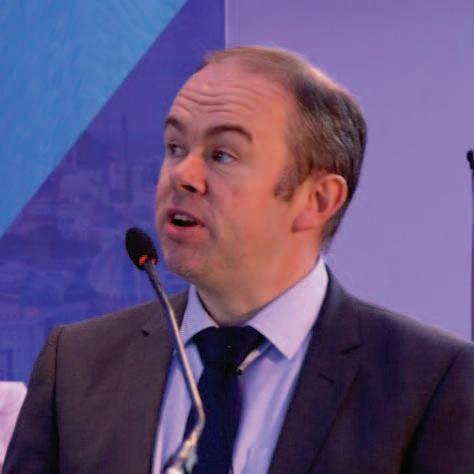
and creating 140 new records each day as infants are born and people come to live in Northern Ireland. “This is not just about moving data around; it is about doing so with accuracy, speed and above all security” Boyle says, adding: “Patients do not only get sick between 9am and 5pm; our system must operate 24/7 with the same level of service in the middle of the night as you would expect in office hours.”
Boyle says the implementation of NIDIS has been no small feat. “When I joined BSO HSC in January 2020, I thought a population health index sounded like a relatively straightforward working environment, then Covid-19 changed everything.”
Amid the pandemic’s challenges, Boyle’s team launched the NIDIS programme alongside other critical system launched by the HSC like encompass, NIPACS+, NIPIMS alongside the various systems needed to mee the challenge of the pandemic, all of which rely on the foundation of NIDIS for demographic data.
Boyle’s insights underscore the strategic importance of robust identity systems. “NIDIS serves as the Grand Central Station of data exchange within HSC, all patient demographic data flows through NIDIES” he explains. By enabling a ‘tell us once’ approach, the system aims to streamline updates across all connected services. This reduces administrative burdens and improves patient experiences.”
Boyle also stresses the importance of planning for future needs. “We are expanding our dataset to include telecommunications details and refining gender data fields to reflect modern healthcare requirements and patient preferences,” he says.
By addressing both operational and social considerations, Boyle asserts that NIDIS is positioned as a model for inclusive, adaptive digital systems.
Beyond improving individual care, NIDIS facilitates future strategic insights. For example, it could allow planners to identify aging populations within specific postcodes or to better target healthcare services for displaced populations like Ukrainian refugees. “This kind of datadriven planning is critical for addressing emerging public health needs,” Boyle emphasises.
The system also supports seamless integration across Northern Ireland’s complex healthcare ecosystem. With five health and social care trusts, Northern Ireland Ambulance Service, 320 GP practices, and a host of other entities, Boyle says that NIDIS ensures that all stakeholders have access to accurate, up-to-date information, describing the system as “a cornerstone of our transformation agenda”.
Looking forward, Boyle envisions further enhancements to NIDIS. Plans include:
• Primary care registration management: Streamlining processes for GP registration to reduce barriers for patients.
• Healthcare professional domains: Enhancing data to reflect clinicians’ roles across multiple settings.
• Improved matching algorithms: Increasing the accuracy of patient record linkages.
• Additional data sharing: Building more comprehensive datasets for research and policy development.
“NIDIS is not just a project; it is a foundation for the future,” Boyle concludes, adding that the success of NIDIS offers a “powerful example” of how innovative identity systems can transform public services more broadly.



Strategic Partnerships Lead of GovTech Lab Lithuania, Kamila Gasinska, highlights how innovative companies, and the public sector can work together to build GovTech solutions.
With the pace of new technologies increasing, thus causing increased citizen expectations on the public sector, Gasinska explains how GovTech Lab Lithuania has successfully ran over 97 projects to adapt and modernise the public sector through exploratory innovation.
Contextualising the need for modernisation within the public sector, Gasinska believes that collaboration with innovative companies is key to the public sector delivering during challenging times and crises. Pointing to crises such as the Covid-19 pandemic and the ongoing conflict in Ukraine, she states that consistent development and modernisation are key to create innovative solutions during unprecedented global challenges.
GovTech Lab Lithuania, established in 2019, was used as Lithuania’s innovative agency under the Ministry for Economy
and Innovation. Through its successful experience in creating innovative GovTech solutions, the organisation has produced a process called the GovTech Challenge Series; a “structured innovation process that facilitates cooperation between the public sector and startups/innovative companies to build digital solutions that solve government’s challenges”.
Gasinska outlines how the process is successfully implemented in Lithuania to produce exploratory innovation. “At the very beginning, we have an open call to look into the current challenges within the public sector. It could be within a ministry or an agency, or it can be in a library, school, or hospital. At the start of this process, we are gathering all of those problems and selecting the most pressing ones.”
The second stage, aims to address the specific problem within the public sector and transform it into an innovative challenge that will “spark the creativity, innovation, and interest of the start-up community”. At this second stage, Gasinska states GovTech Lab Lithuania is also helping to prepare the public sector for innovative procurement.
Stage three, focuses on procurement within the process. Gasinska outlines that during this stage, a design contest is used to produce further creativity within the innovative companies. Gasinska states: “At this stage, you rate the idea and not the team,” and explains further, “if the idea is great, you can pitch prices for the best ideas and encourage the small teams. Then, you are collaborating with an innovative pilot with the best team and the best idea that you have selected.”
The next stage is called “pilot development”, where considerations are made for the public sector team and the start-up team through team-building exercises. This process typically entails three-to-six months of cooperating on the creation of the pilot solution.
“The public sector is learning about how startups work, and at the same time, the private sector is learning how the public sector works.
“From the very beginning, we have been helping the public sector with expertise, with templates for procurement, and with workshops. GovTech Lab Lithuania hosts workshops with the private sector on how to take part in the procurement. We try to help and guide them through this process,” she says.
Through this process, Gasinska highlights that the private sector in return is further educated on “how the public sector works, why the processes are so long, what the actual bureaucracy means, and why it is there”. Furthermore, the process encourages the companies to apply for other public procurements because they can “understand the mindset of the public sector,” according to Gasinska. Due to this, the public sector is more flexible after running this process.
To explicate the success of this strategy, Gasinska illustrates challenges that were solved when involving the GovTech Lab Lithuania through collaboration with Lithuania’s public sector and start-up companies, including a project which aimed to make the internet safer for children by automatically detecting illegal content, a collaboration that integrated forest cover monitoring using advanced algorithms, and a solution to automate data collection from market participants necessary for supervision.
“One thing that we are focusing on is pilot solutions. The public sector is normally willing to go for the big budget into full-scale solutions. Here, we are asking them to stop for half a year to see if the solution they are looking for is the solution that is needed.”
Gasinska outlines that the complete process takes around nine months before the organisation is selected. Furthermore, the projects are run in batches rather than caseby-case.
“Projects are coming together from diverse backgrounds and different cities. In this way, they can learn from each other because some have faced similar problems previously. Due to this, both parties can share their experience along the way.”
Gasinska outlines that GovTech Lab Lithuania provide funding for experimentation, professional support and operate on common values to ensure that everyone is “on the same page”.
Through the utilisation and collaboration of start-up companies to further modernise and transform the public sector, exploratory innovation within GovTech solutions is crucial to produce a progressive digital government in short- and long-term timescales.

The 2024 Digital Government Conference took place in Titanic Belfast in November 2024. Sponsored by AWS and BT, the conference brought together key stakeholders to gain an insight into the Government’s objectives for digital transformation and delegates in attendance heard directly from those responsible for driving this forward.
The top line up of expert speakers, both local and visiting included Paul Duffy, Director of Digital, Security and Finance Shared Services, Department of Finance; Rohan Kapoor, CIO, NIE Networks; Deborah Colville, Director, UK Digital Twin Centre; Moira Mackenzie, Deputy CEO/Director of Innovation, Digital Health and Care Innovation Centre Scotland and Dermot Boyle, Northern Ireland Digital Identity Service Programme Manager, Business Services Organisation.
We would like to take this opportunity to thank the 2024 conference sponsors, AWS and BT, all speakers, exhibitors and delegates who joined us in Titanic Belfast and made the conference a huge success.



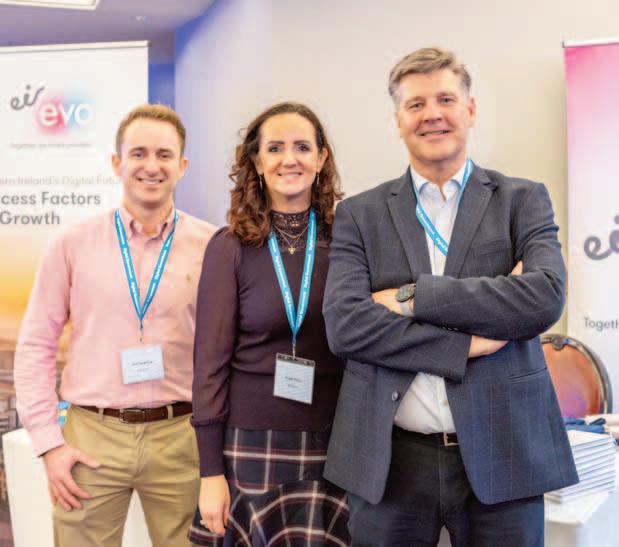




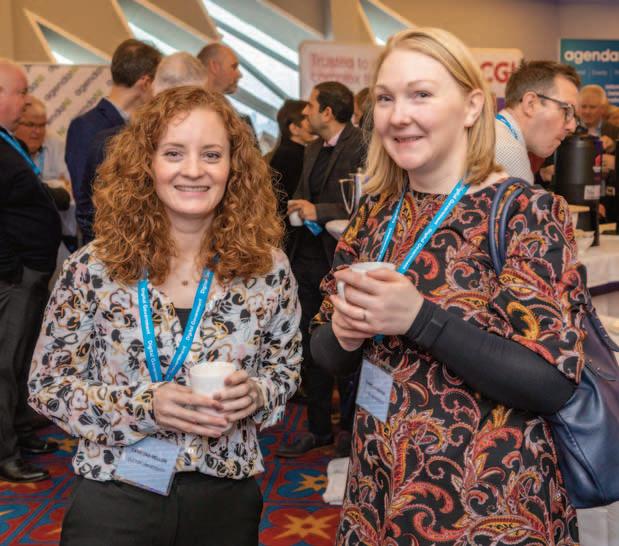
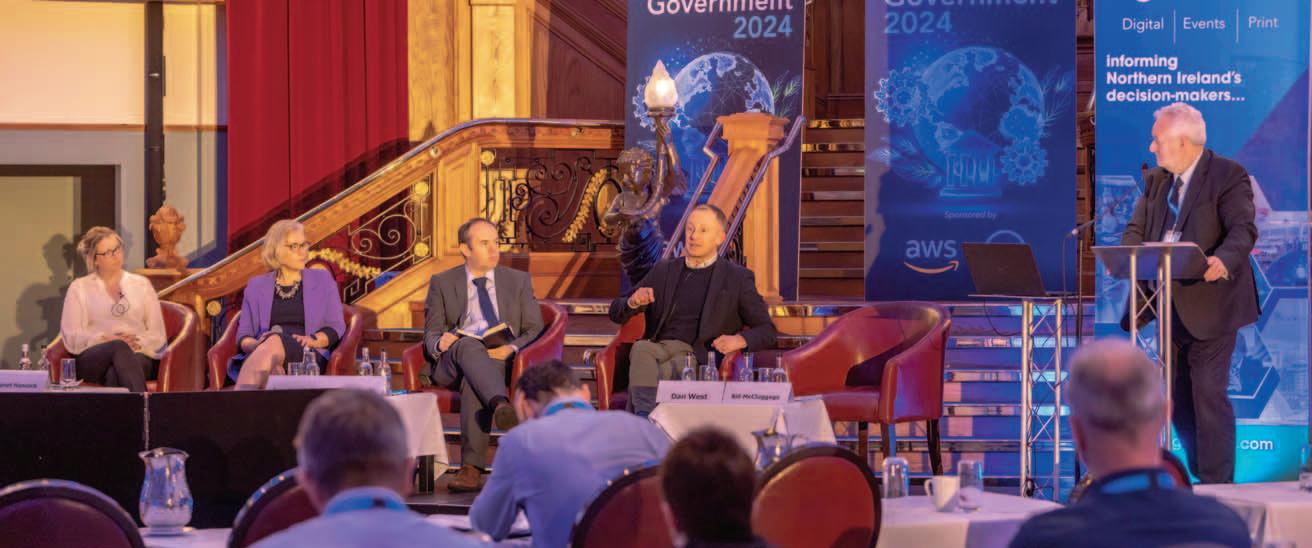


Tuesday 8 April • Europa Hotel, Belfast


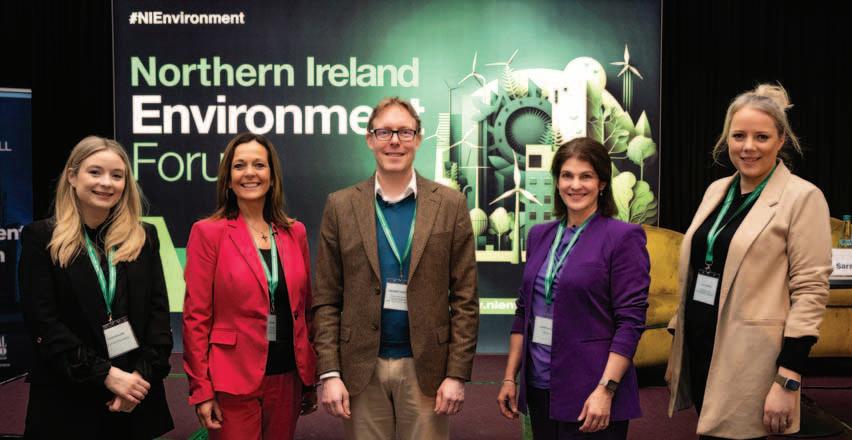

The Northern Ireland Environment Forum, organised by agendaNi, is Northern Ireland’s major conference on environmental policy and management. The Forum provides an important opportunity for all the key players in the environment sector to come together for a day of discussion and networking. Alongside visiting experts, the Northern Ireland Environment Forum will be addressed by the key people in Northern Ireland's environmental policy landscape. With challenges facing the environment both locally and globally, the Forum will be of interest to attendees representing all the main sectors with an interest in Northern Ireland’s environment sector at this pivotal time.
Sponsorship and exhibition opportunities
There are a limited number of opportunities to become involved with this conference as a sponsor or exhibitor. This is an excellent way for organisations to showcase their expertise and raise their profile with a key audience of senior decision makers. This interactive conference provides an excellent opportunity for making contacts and networking. For further information on how your organisation can benefit contact Owen McQuade on 028 9261 9933 or owen.mcquade@agendaNi.com



Following her announcement of a planned major reform programme for the justice system, Minister for Justice Naomi Long MLA talks to David Whelan about her proposals, her return to the portfolio, and her wider legislative priorities.
Recognised as one of the most proactive ministers in driving legislative change during the shortened 2017 to 2022 mandate, the return of Long to the Justice portfolio in February 2024, after a two-year Executive and Assembly absence, appeared a logical outcome.
While delighted to be picking up on “unfinished business”, Long is adamant that her return was not a foregone conclusion, firstly, because her party had to weigh up whether to take up a place in the Executive, and secondly, as the party decided on their portfolio preference.
Explaining the decision-making that has led her back to the portfolio, she says: “I felt that in the last mandate we achieved a lot in government that we would not have been capable of in opposition, and I believe that influenced the party in our decision to return to the Executive.
“In relation to justice, I had left the last mandate feeling like there was unfinished business. I had done a lot of preparatory work on bills, looking towards the new mandate and there were areas that, with twoand-a-half-years of additional experience, I could see that reform was not just possible, but necessary.”
Long admits to a frustration that she will not have a full five-year term to drive necessary change, which would have been afforded had the Executive reformed after the 2022 Assembly election. Having originally strategically planned for five major pieces of legislation to be passed and enacted across the mandate, the Minister says that she has had to “rejig” her plans, and now expects to publish three significant pieces of legislation across the remainder of her three-year term.
Highlighting the shortened nature of both the 2017 to 2022 mandate, and the current mandate to 2027, the Minister describes the transition as being akin to “a comma, rather than a full stop”, but insists that much has changed in the absence of the Executive.
“Undoubtedly the landscape to which I was returning had changed. In the previous mandate, I had suggested that funding levels for the Department meant that we were teetering on the brink of a crisis. By the time I returned, we were in crisis,” she states, pointing to falling police numbers and a rising prison population as examples of extraordinary pressures that had been compounded during the Executive and Assembly’s absence.

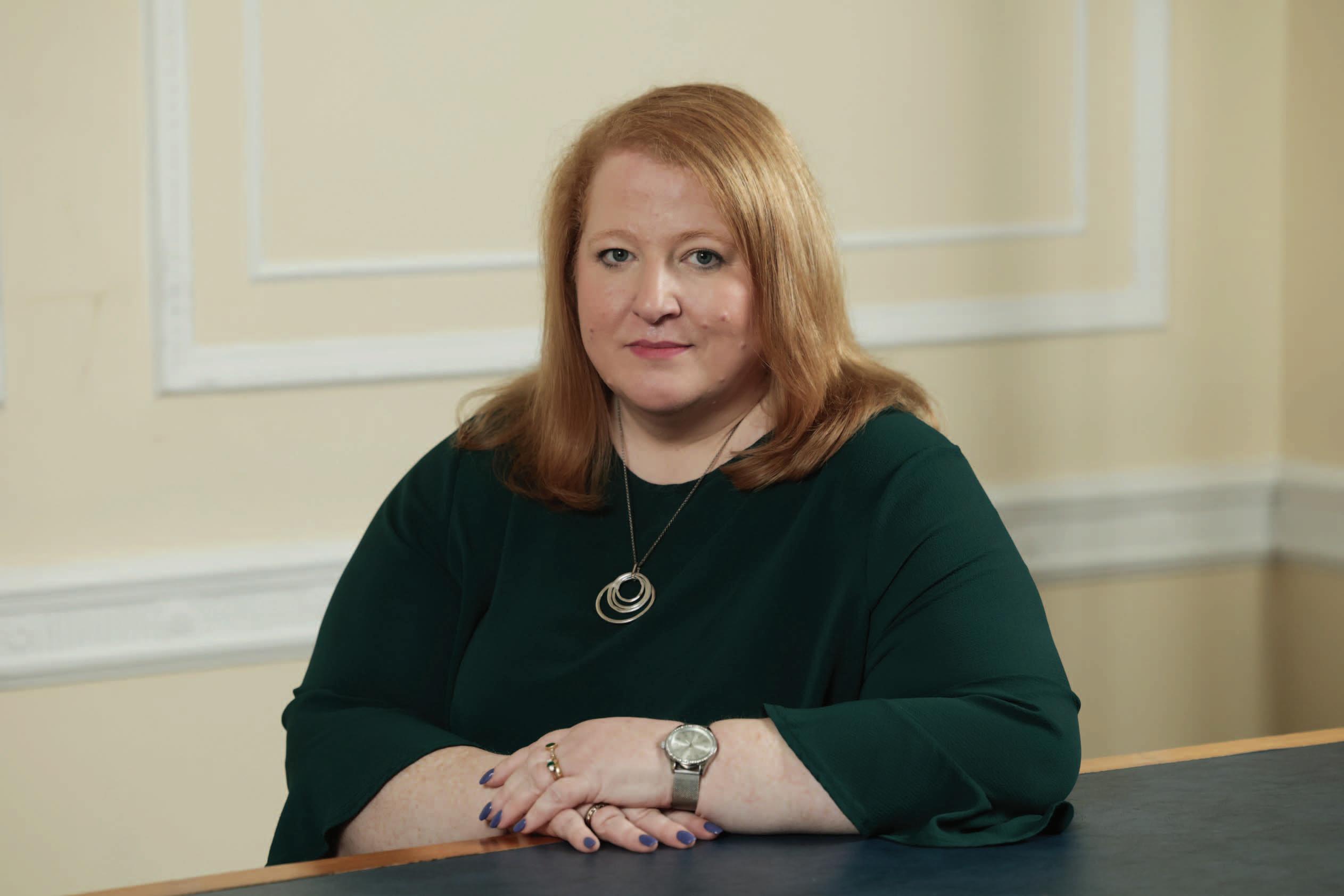


“We have been able to demonstrate that the limited funding available to us is being spent in the right places to protect people and towards our plans to transform and speed up the justice system.”
On the other side, Long has also been able to witness first-hand the positive impacts of her legislative changes made in the previous mandate.
In January 2025, Long welcomed the first official publication of domestic abuse prosecutions and convictions statistics following the introduction of the Domestic Abuse and Civil Proceedings Act (Northern Ireland) 2021, which created a new domestic abuse offence and criminalised a course of abusive behaviour.
“The number of people reporting is evidence that this legislation is working. Remember that these are people who were already being subjected to an offence, they are not new crimes,” Long says, responding to a question as to whether these new laws had increased the pressure on under-resourced policing and court systems.
“By codifying an offence as being against the law, we are not creating these offences. What we are doing is holding those responsible to account, and sending a message to future generations that these are not acceptable behaviours.
“It is important, from my perspective, that I give the legal system every opportunity to hold those offenders to account and to address those behaviours when they happen, but also, that we start as a solid conversation about acceptable behaviour in relationships, about what domestic violence and abuse can look like, and about what coercive control is and how it feels. Our aim is to prevent that behaviour, to prevent people becoming victims, and ultimately, there will be a saving to that preventative action across the whole public service system.”
Pointing to the publication in September 2024 of the Domestic and Sexual Abuse Strategy, a seven-year strategy with an associated three-year action plan, closely aligned with the Executive’s Ending Violence Against Women and Girls Strategy, as evidence of ongoing efforts to prevent offences, she adds: “I understand that some people will view the creation of a new law as meaning more work for the PSNI, and yes, it is true that there are new offences that must be considered when approaching a domestic situation, however, our aim is to equip those officers with the means of early intervention.”
Outlining that she will continue to push for greater levels of resourcing for her department, Long says that she has held constructive conversations with Finance Minister
Caoimhe Archibald MLA, highlighting the impact of historical underfunding, and future priorities. “We are in a better position today than we were when I came into office,” she states. “We have been able to demonstrate that the limited funding available to us is being spent in the right places to protect people and towards our plans to transform and speed up the justice system.”
A critical part of that envisaged transformation was outlined by Long in December 2024, in what is described as “a major programme of reform to improve access to justice and better support those using publicly funded legal services”.
Long’s plans, however, have already experienced some turbulence. An announcement of the programme on 2 December 2024 pledged the publication of a Programme Delivery Plan “next week”. By late January, that plan had yet to emerge.
Asked about the delay, Long explains that while the plan was shared with the Assembly’s Justice Committee within the week, as intended, consultation of the document was delayed after notification was received that criminal barristers in Northern Ireland were to stage a withdrawal from legally-aided Crown Court cases between 6 and 31 January 2025, in a protest over legal aid fees and payment schedules.
“The priority had to be engagement to try to end that strike,” says Long, who describes the strike action as “unnecessary” given her public commitment to an uplift of 16 per cent to legal aid fees across criminal, civil, family and immigration law.
“I have always been clear that I believe in the legal aid system. I believe that we need to maximise access for those most vulnerable to the justice system and that we to make sure that finance is not a barrier to that.”
Although Long believes the Criminal Bar’s strike action was premature in the face of the Department outlining their intentions, clearly the strike action has had an impact on the future shape of the delivery plan.
“There are areas raised that we now want to look at –not in terms of content, but specifically at prioritisation within the plan,” Long says, pointing to a need to find a balance between the sector’s concerns and the ambitions of her department.
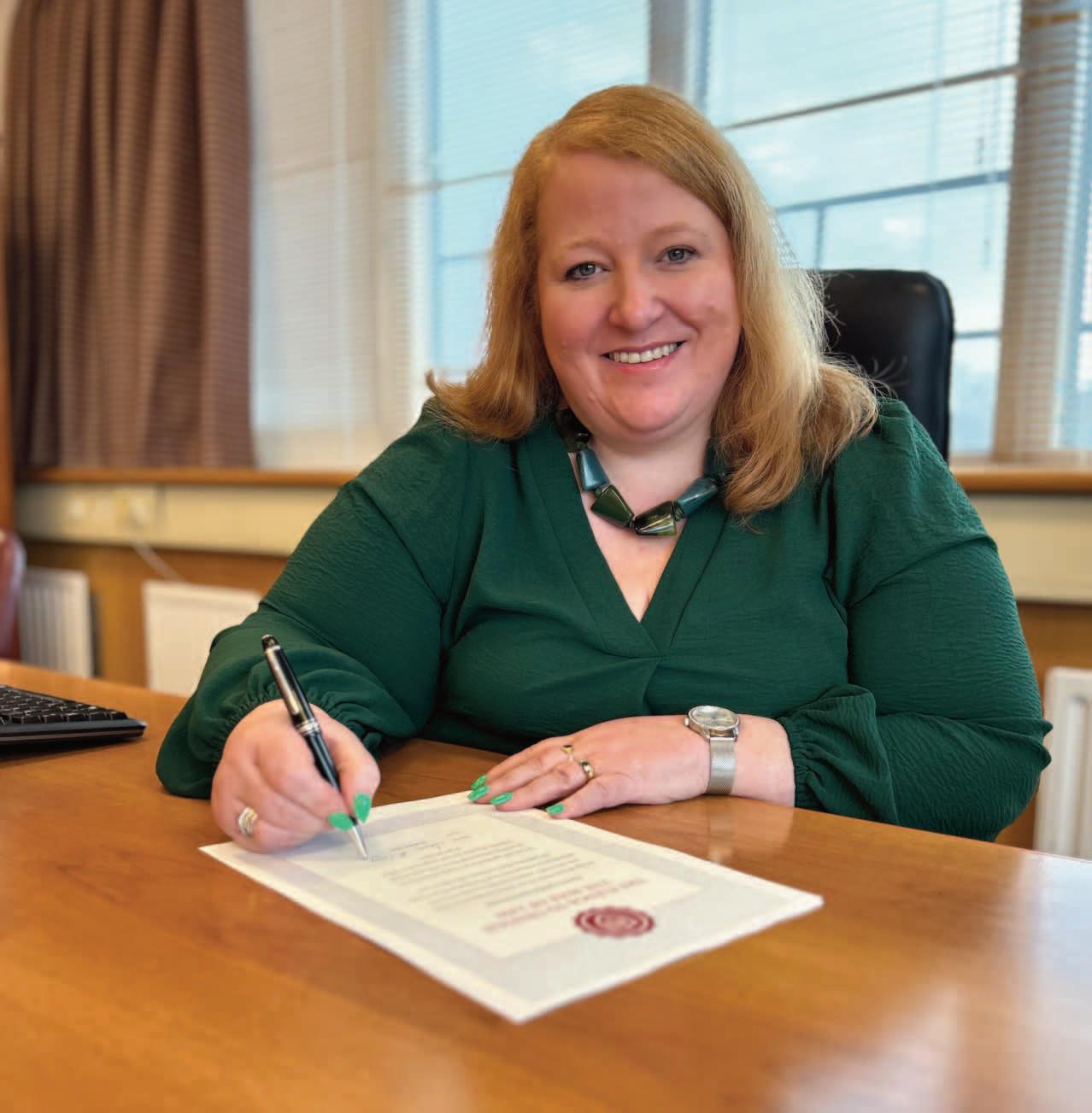
“We know that waiting for a long time increases the level of attrition, particularly for vulnerable witnesses, and so we are very keen to see justice sped up.”
“I am open to listening to the professions, but I also have to bear in mind that the professions are themselves a vested financial interest in the system. My interest is in public access to justice, and I have to approach these issues from that perspective, whilst listening to the professions who deliver the services.
“Where I can be of assistance, I will. For example, I have committed to the uplift of legal aid fees as a matter of urgency and have got agreement from the Assembly’s Justice Committee for a shortened eight week consultation. However, we must go through that process and there will need to be secondary legislation to enable that change, so it cannot happen immediately.
“I want to build that confidence back into the professions that I am serious about the uplift and I am serious about delivery of reform.”
Beyond the uplift of legal aid fees, Long explains that within the broader

package of access to justice reforms are proposals around improving access to justice; ensuring appropriate quality services; ensuring value; managing public funds; and oversight. Each of these issues, and various programmes within them, ranging from enhancing access to legal advice and guidance, through to appropriately funding early resolution mechanisms and the underpinning of a sustainable profession, will be consulted on individually.
Returning to her legislative programme for the remainder of the mandate, Long says that she hopes the Justice Bill, introduced in September 2024, will have made speedy progress by the end of the year. A call for evidence is expected to be announced by the Assembly’s Justice Committee in February 2025, and Long says that her department will work with the committee to help ensure the Bill’s progress is expedited.
In addition, the Department is currently drafting a Sentencing Bill, which Long explains will cover a number of key priorities including clarity and guidance around sentencing, and in relation to aggravators and statutory aggravators. In particular, the bill will seek to provide clarity on sentencing for those who attack public workers, and no body murder cases, while also incorporating elements of a foundational hate crime bill, which will now not come forward due to time restraints. Expected to be introduced to the Assembly in Autumn 2025, the bill will also seek to increase the maximum sentence in cases of death by dangerous driving, where intoxication or drugs are involved.
“We are also currently consulting on a victim and witnesses bill with the intention of introducing that next year. The bill will seek to cover other parts of the intended hate crime bill and protect vulnerable witnesses through enabling special measures in court, or use of the remote evidence centre. The bill will also put the Victims of Crime Commissioner on a statutory footing, while underpinning in legislation some of the outstanding recommendations from the Gillen review of the law and procedures in serious sexual offences in Northern Ireland.”
Importantly, explains Long, legislation alone will not define the remainder of her term at the helm of the Department of Justice, with the Minister acknowledging that underpinning transformation ambitions is the need to “speed up justice”.
“We know that waiting for a long time increases the level of attrition, particularly for vulnerable witnesses, and so we are very keen to see justice sped up. Delay is also an injustice that affects those who are accused of crimes, because very many of them are remanded in custody while awaiting trial, resulting in overpopulation of our prisons.”
Highlighting a variety of programmes already being rolled out that do not require legislative change, Long concludes: “Many good initiatives are taking place in the justice sector which are maybe not spoken about widely, but which are building confidence in the system and laying the foundations for transformation.
“I think it is really important that the Department of Justice continues to work on those issues and continue to deliver real results.”


Announced by Justice Minister Naomi Long MLA in September 2024, the programme marks a critical milestone in achieving the NICTS’s Vision 2030 goals of modernising the justice system, but its success hinges on effective implementation and addressing potential challenges.
Central to Themis is the creation of a digital-first, paper-light environment designed to streamline processes in civil, family, and criminal courts, while enhancing access to justice services.
The vision aligns closely with NICTS’s stated objectives to modernise the courts through integrated case management systems, online service portals, and digital tools. This includes a user-friendly web portal to allow citizens, legal professionals, and government partners to initiate and track cases online, ensuring greater accessibility and efficiency.
This approach mirrors Vision 2030’s emphasis on creating citizen-centric services, aiming to reduce reliance on physical hearings, and leveraging technology to deliver faster case resolutions.
In particular, the programme supports Vision 2030 goals such as e-bundling, digital evidence sharing, and remote hearings, setting the stage for a modern, responsive justice system.
While Themis represents a transformative step forward, several areas require careful attention to ensure alignment with the broader modernisation agenda:
• Accessibility: Vision 2030 prioritises inclusivity, ensuring services cater to vulnerable groups and those with limited access to digital tools. Themis must deliver digital solutions that are easy to use and supported by accessible alternatives, particularly for non-digital users.
• Infrastructure synergy: Modernising IT systems must go hand-in-hand with addressing physical estate challenges. Many court buildings are outdated and lack the flexibility to support hybrid services. Themis’s success will depend on integrating its digital ambitions with ongoing estate modernisation projects outlined in Vision 2030.
• Outcome measurement: Vision 2030 stresses the need for tangible improvements in user outcomes. Themis must incorporate clear performance metrics to evaluate its impact on efficiency, case progression, and public confidence.
• Collaborative design: Delivering a justice system that works for everyone requires meaningful collaboration with judiciary, legal professionals, and the public. Effective stakeholder engagement is critical to ensuring Themis meets the sector’s diverse needs.
The programme also offers opportunities to pilot cutting-edge solutions. AI-driven analytics, online mediation services, and diversionary options such as prosecutorial fines further aim to enhance justice delivery. These initiatives align with Vision 2030’s focus on proportionate resolutions and reducing unnecessary court appearances.
While Themis presents an opportunity to lead the way in digital justice, the success of the programme will depend on balancing technological advancements with the human-centric values articulated in Vision 2030.


Following their election as Chair of the Bar Council, Donal Lunny KC, and Vice Chair, Denise Kiley KC, talk to David Whelan about their ambitious two-year programme and efforts to foster a more modern, effective, and efficient justice and legal system.
Meeting on the day when criminal barristers in Northern Ireland announced a four-week withdrawal from legallyaided Crown Court cases until the end of January 2025, both Lunny and Kiley can testify to a busy few months since taking up their respective posts in September 2024.
The fallout of the ongoing criminal legal aid crisis is just one element of the work undertaken by the Bar Council – a body

of 20 practising barristers, which is responsible for the governance, regulation, and representation of the profession.
As Chair and Vice Chair, Lunny and Kiley, like all other elected members of the Bar Council, operate on a voluntary basis, while also maintaining busy careers as civil practitioners.
Explaining his rationale for seeking the post, Lunny, who has previously held the
roles of Vice Chair and Bursar in the Bar Council, says: “The Bar Council has been a longstanding advocate for a positive, proud, and strategic vision for justice. Barristers champion the rule of law, serving the administration of justice and public interest. The existence of a strong, independent, and diverse Bar is crucial to the effective and efficient administration of justice and upholding the rule of law.
“I have been an elected member of the Bar Council since 2003 and I believe that through my experience I could make a meaningful contribution as Chair. Many of the challenges barristers are currently facing are longstanding and I feel I can bring my experience to bear in trying to address these, alongside a very capable and talented team.”

Kiley, who has taken on the Vice Chair post in what is her second term as an elected representative of the Bar Council, says: “I think it is a privilege to do the job we do and it is an even greater privilege to represent the profession through Bar Council. My first term was an eye opener for me in terms of the extent of the issues the Bar Council was taking on, on behalf of all members, and I felt that I could and wanted to contribute to that.”
While the Bar Council is representative of all its members, across civil, criminal, and family law, understandably, the early months of the Chair and Vice Chair’s terms have been largely dominated by legal proceedings the Bar Council is engaged in to challenge the Department of Justice’s policy to delay payment to legal practitioners for work completed under the legal aid system.
In November 2024, the Criminal Bar Association began a process of withdrawal of services from the Crown Court. An initial one-day strike in late 2024 has been followed up by a fourweek withdrawal until the end of January 2025.
“Access to justice is in crisis, with the system of legal aid close to breaking point, due to lengthy payment delays and fees that have remained static since 2005,” Lunny explains, setting out that the scale of the action is representative of the current severe pressures on the legal and justice system.
“The system of criminal legal aid in the Crown Court has been chronically underfunded for a long time, a prime example being that the fees payable to barristers in the Crown Court, under legal aid, have not increased in 20 years.
“What that means is that when you factor in inflation, the fees offered for criminal legal aid in the Crown Court today are worth less than half what they were in 2005. That is despite the fact that the advent of digital evidence means that cases are becoming much more complex and more time consuming.”
Kiley explains that there are also concerns about the timely payment of these fees. “Routinely, these barristers will wait at least three to four months for payment once a case is concluded and their fee is submitted. Long hours,
increasingly complex cases, unfair remuneration, and payment delays have coalesced to make legally aided criminal work an unviable practice area for an increasing number of legal professionals, particularly younger barristers.
“This causes an access to justice challenge for the whole of society.”
In 2023, against a backdrop of squeezed one-year successive budgets for the Department of Justice, the Criminal Bar Association and Bar Council, engaged with the Department to commission a fundamental review of the criminal legal aid framework led by retired judge Tom Burgess.
Completed in August 2024, a more than three-month delay by the Department in publishing the Burgess report led to the Bar Council stating that the “goodwill of the profession” had been “exhausted”.
At the time, the Department said that it was considering the report and stressed its ongoing work to secure a more sustainable budget to meet the current pressures. It added that in 2023/24, the Legal Services Agency paid out circa £114 million to legal professionals, the highest level of payment in the history of legal aid. Lunny and Kiley point out that the high level of the total spend on legal aid is in part reflective of a justice system that is working far in excess of its normal capacity in order to process Covid-era backlogs.
Subsequently, in December 2024, the Department announced the wide-ranging Enabling Access to Justice reform programme, however, the Bar Council’s assessment is that through the programme, the Department “has chosen to ignore the scale of the access to justice crisis across Northern Ireland and has instead elected to focus upon ideologically driven policy experimentalism”.
“The Department of Justice’s wide ranging reform programme shows a dismissive approach to the access to justice crisis that prevails at present. The number one priority for the Department must be to stabilise a system of legal aid which is at serious risk of collapse,” states Lunny, who believes the system must be stabilised before the Department embarks upon a programme of reform.
In relation to the Burgess report, Lunny says: “The Department has been, we think, very cynically selective in their approach to those recommendations. We query what the purpose of engaging a trusted, independent expert of the
Department’s choosing, only to adopt an a la carte approach to the evidencebased recommendations.”
Outlining a concern, that without the quick introduction of a significant interim uplift in Crown Court fees, making it viable for barristers in Northern Ireland to continue to carry out legal aid work, the region could be heading towards a twotier, American-style system, Vice Chair Kiley says that a system, where only people with the means get the best criminal representation, must be avoided.
“Something we have been trying to highlight to the Department is that it is within everyone’s interests – society and the justice system generally – for barristers to receive fair rate of pay so that they can properly fulfil their role. Alongside increased potential miscarriages of justice associated with challenges to representation, other implications include further delays, which impacts everyone who encounters the criminal justice system.”
Asked about the ongoing relationship with the Department, Kiley highlights that barristers, by their very nature, are highly skilled at negotiating, compromising, and solving problems.
“However, it is important for us that we do not see resolution as simply resolution of the strike. It needs to be a resolution to the access to justice crisis,” she states.
“We have made it very clear to the Department that our door is always open because we want a resolution. I would hope that any resolution would involve repairing the relationship between the Bar and the Department. The Department can take steps to repair that relationship and to recognise the value that the bar brings to the criminal justice system because I believe we can work in partnership to improve the justice system.”
Beyond the current legal aid crisis, both Lunny and Kiley have an ambitious programme in their aims to “protect and enhance the virtues of our independence as a Bar, and as individual barristers”.
Kiley is an exemplar of ongoing work to improve diversity within the Bar. In 2024, the Vice Chair was one of 12 women called to the Bar, a threefold increase from the previous call in 2020.

“Despite the challenges that lie ahead for our profession, the strength of the Bar of Northern Ireland lies in our collegiality, our independence, and our commitment to justice.”Chair of the Bar Council, Donal Lunny KC
“The Bar Council has made a concerted effort to promote diversity at the Bar and support female practitioners as they serve the public interest in the most challenging of legal matters whilst also navigating the challenges of selfemployment,” she explains.

“The record number of females called to the Senior Bar in 2024 is a testament to the work of previous Bar Councils but we understand that there is more work to be done and are keen to contribute to that journey.”
Importantly, Kiley explains, a diverse bar goes beyond gender. “A truly diverse profession must be reflective of the society we serve. As Northern Ireland becomes more culturally diverse, so too must the barrister profession.”
Expanding on this, Lunny says that improved social-economic diversity of the Bar is an aspiration for their term.
“Traditionally, our Bar has always enjoyed a greater level of diversity than analogous Bars in England and Wales. Being called to the Bar in Northern Ireland involves a candidate-blind exam and ensures that access to the Bar is completely based on merit. It is a much better system that ensures our Bar is open to any hard-working, bright young people, who meet the necessary academic standards. That is something we do not want to lose.”
Highlighting current challenges for young aspirational barristers which range from rising university fees to rent affordability in Belfast, Lunny explains that the Bar Council is progressing a number of programmes with Queen’s University Belfast, namely the Brighter Future project and the Pathways project, aimed towards secondary level school pupils in areas of high levels of deprivation.
On another priority, Kiley says: “We will seek to protect and enhance the virtues of our independence as a Bar and as individual barristers and increase wider society’s understanding of the inextricable links, not only between our independence and that of the judiciary –but between our independence and the principle that everyone is entitled to access to justice, a principle which is central to trust in our legal system and the rule of law.”
As an independent referral Bar, the Vice Chair and Chair believe that the offering of “fearless and fair representation” needs to be championed and protected, particularly amidst proposals on reform for the wider justice system.
Lunny adds: “We are committed to working collaboratively with the judiciary, the Courts Service, the Department, and others to deliver a more modern, more effective, and more efficient justice and legal system. However, we are determined to ensure that any changes that occur do not imperil the core principles of access to justice, fairness, and the rule of law.”
Lunny explains that the importance of this independence was recognised during the joint hosting of the World Bar Conference by the Bar Council and the Bar of Ireland in summer 2024. Attended by a host of countries with similar legal systems including Australia and New Zealand, a panel discussion of the Chief Justices stressed the importance of the Bar’s independence to the whole legal system.
A critical part of the Bar Council’s independence is robust self-regulation. While some jurisdictions have drifted towards a system whereby the State acts as a regulator, both the Chair and Vice Chair are in strong agreement on the need to retain that independence.
In 2024, the Bar Council introduced a code of conduct reform that saw the standard of proof for professional misconduct changed from the criminal standard to the civil standard. This, Lunny explains, is evidence of a desire to improve the system of self-regulation and make the system even more robust.
“The Bar of Northern Ireland is also a proactive and responsible regulator of the barrister profession. We have been making positive changes to our existing complaints procedures and are at advanced stages of preparation for the Legal Complaints and Regulation Act.”
Concluding, Kiley says that the Bar Council’s primary priority is finding a resolution to the current criminal legal aid crisis, and more broadly, the access to justice crisis, however, she hopes that for the remainder of the term, the Bar Council can continue to make strides in addressing gender and socioeconomic diversity within the Bar.

“It is important for us that we do not see resolution as simply resolution of the strike. It needs to be a resolution to the access to justice crisis.”
Vice Chair of the Bar Council, Denise Kiley KC
Lunny adds: “I am proud of the Bar’s efforts and initiatives to embrace modernisation to date. Nothing stands still, and legal practice continues to be shaped by technological advances and the emergence of new areas of law. No facet of our profession should be left behind.

Donal Lunny, Chair
Donal Lunny KC has been an elected member of the Bar Council since 2003 with practice specialism in the areas of personal injury, land law, public inquiries, and judicial review. Between 2017 and 2020 he was one of two junior counsel to the Public Inquiry into the Northern Ireland RHI Scheme.
Denise Kiley, Vice Chair
Denise Kiley KC was called to the Bar of Northern Ireland in 2008 and to the Inner Bar in 2024. She has extensive experience of practice in public law. She specialises in judicial review, particularly in the areas of education, planning, local government, and constitutional law. Between 2021 and 2024 she acted as junior counsel to the Muckamore Abbey Hospital Public Inquiry.
“Despite the challenges that lie ahead for our profession, the strength of the Bar of Northern Ireland lies in our collegiality, our independence, and our commitment to justice. If we remain faithful to those values, we are confident that the Bar of Northern Ireland will continue to serve the public by playing an important role in a stable, prosperous, and just society.”
T: +44 (0)28 9024 1523
E: contact@barlibrary.com
W: www.barofni.com
X: @TheBarofNI
Linkedin: The Bar of Northern Ireland





The Police Service of Northern Ireland (PSNI) has published a draft Race and Ethnicity Action Plan 2025–2027 which, in spite of significant underrepresentation of PSNI members from a minority ethnic background and rising hate crime figures in Northern Ireland, is scant on detail.
PSNI data highlights the stark disparity between the demographics of Northern Ireland’s general population and the composition of its police force. Only 0.71 per cent of the PSNI’s staff and 0.69 per cent of its officers identify as belonging to an ethnic minority, in contrast to 8.1 per cent of the overall population of Northern Ireland.
The consultation-stage plan is presented against a backdrop of persistent underrepresentation within the PSNI workforce and strained relations with minority populations.
However, aside from generic goals such as being “representative and inclusive” and “leading together”, the action plan falls short on specific detail as to how it will diversify the workforce of the PSNI.


Source: PSNI, December 2024
A deeper look into recruitment statistics reveals challenges in attracting ethnic minority applicants to policing roles. Despite years of initiatives to enhance workforce diversity, progress remains slow, raising questions about the effectiveness of previous strategies and the barriers that continue to deter minority participation.
The PSNI has faced scrutiny for its handling of race-related incidents, such as criticism following Black Lives Matter protests, and the circumstances surrounding the death of Belfast teenager Noah Donohoe in 2020.
These incidents have led to a perceived lack of confidence in law enforcement among some minority communities, arguably exacerbated by the race riots which took place in August 2024 and the minimal number of linked arrests.
The riots in August 2024 saw ethnic minority-owned businesses face arson attacks, with a number of victims who owned businesses outlining their intention to leave Northern Ireland or permanently close their premises.
In the action plan, the PSNI has outlined five ‘workstreams’ which offer little by way of measurable targets, save for generic goals such as “treating people with an ethnic minority background fairly and with respect”.
The five workstreams are:
1. internal culture and inclusivity;
2. professionalism, powers, and policies;
3. community engagement and relations;
4. protection, partnership and justice; and
5. performance and accountability
On reforming the PSNI’s culture, the action plan states that it will increase “the awareness of racism, anti-racism, Black history, and its connection to policing”, something, it asserts, will take place through “robust training programmes”.
However, there is no evaluation of racial attitudes within the organisation. The action plan, while outlining goals such as treating ethnic minority members “with respect”, does not outline the scale of racist attitudes within the PSNI, in spite of the fact that this is common research carried out in analogous documents in other countries.
In spite of the lack of statistics or research, the PSNI, by virtue of the fact that it aims to “eliminate” racial bias, stereotyping, profiling or discrimination in its actions, does acknowledge that there is a challenge. However, its solution to this challenge is to “take actions to eliminate any identified racial disparities”.
More broadly, the race and ethnicity action plan makes no mention of the
demographic challenges that persist beyond ethnic minorities, in spite of the fact that there remains a sizeable gap between the number of Catholic and Protestant police staff and police officers (see table 1 and table 2).
Meanwhile, a 2023 report by Queen’s University Belfast and the Department of Justice found that more than almost two-thirds of youths held in custody in 2018/19 were from a Catholic background.
The report, entitled Over-representation in the Youth Justice System in Northern Ireland, cites statistics from the Youth Justice Agency (YJA) which reports that 62.9 per cent of young people who were in PSNI custody in 2018/19 were Catholics, despite only accounting for roughly 45 per cent of the population in the 15-19 age group.
While the Race and Ethnicity Action Plan outlines the PSNI’s ideals of being non-racist, the level of detail in the Race and Ethnicity Action Plan shows that there is a shortfall in internal reflection, without which the scale of racism within and around the PSNI cannot be comprehensively determined.
With the draft document published in October 2024, an eight-week consultation has taken place for which submissions closed on 16 December 2024. It is not yet clear what the next steps are or what, if any, reforms will arise from this.

A senior partner at McCartan Turkington Breen with a self-confessed propensity for directness and a no-nonsense approach, Mitchell is widely recognised for his ability to tackle challenges headon and deliver results.
Despite his straightforward nature, he is an advocate for progress and inclusivity, and is passionate about upholding a strong sense of collegiality within the solicitor profession.
Throughout his presidential year, Mitchell aims to address the challenges solicitors face while at the same time steering the profession toward a more dynamic, responsive, and forwardthinking future. In this exclusive interview, he discusses his aspirations, the pressing issues at hand, and the values that underpin his leadership.
Q: Congratulations on your appointment. What inspired you to pursue the presidency of the Law Society?
A: Thank you. It is a real privilege to serve as President. My journey within the legal profession has always been about making a difference. Over the years, I have gained an understanding of the challenges and opportunities facing solicitors. The chance to advocate for our members and contribute to shaping the future of the profession is what inspired me to take on this role. I firmly believe that change is important, yet it is only possible if you place yourself in the
As he steps into the role of President of the Law Society of Northern Ireland, Colin Mitchell brings a wealth of experience and a clear vision for the profession.
middle of things rather than criticise from the sidelines. That is why I stood in the election for Law Society Council and soon after the opportunity to become President arose.
Q: What are your key priorities for your term as President?
A: My primary objective is to ensure that the Law Society remains a strong, relevant, and supportive organisation for our members. The legal profession is undergoing profound changes, and I want to ensure our solicitors are equipped to adapt and thrive. Promoting inclusivity and diversity within the profession is another central goal – I believe a legal profession that reflects our society is essential to building trust with the communities we serve. For this reason, I have selected the NOW group as my charity of the year, they do fantastic work levelling the playing field and ensuring workplaces are open and inclusive.
Q: The legal profession is no stranger to challenges. What do you see as the most significant issues facing solicitors today?
A: One of the biggest challenges is keeping pace with change — be it in technology, or client expectations. Many solicitors are dealing with increasing complexity in their work while managing economic pressures. Cybersecurity is an ever-present concern as we rely more on digital platforms. I am particularly
concerned that the vital role solicitors play ensuring access to justice is not recognized. The system relies on lawyers who are willing to work in the criminal courts and who are prepared to turn up at police stations in the middle of the night to represent people in police custody. Likewise, within the civil sphere, the system would collapse without solicitors who work beyond the call of duty to ensure their clients needs are met. It is unacceptable that solicitors are consistently dealing with the traumatic life events of their civil legal aid clients without adequate renumeration.
Without lawyers who are willing to provide these services the justice system will grind to a halt. No one should be expected to work for fees which are at least 20 years out of date. We have now reached crisis point. An immediate injection of funding into the system, including legal aid is the only hope of preventing the collapse. Ensuring that access to justice is preserved and that our members receive fair compensation will be a key focus for me throughout my presidential year.
Q: On the topic of technology, how can the Law Society assist solicitors in embracing innovation while mitigating risks?
A: Technology offers transformative potential for the legal profession, but it must be adopted thoughtfully. The Society plans to provide training and
resources to help solicitors understand and implement tools that enhance efficiency without compromising ethics or client care. For instance, legal tech can streamline processes and improve access to justice, but we must also address concerns such as data protection and equitable access. We are also working to create forums where solicitors can share experiences and best practices related to technology use.
Q: Diversity and inclusion have become pressing topics in many industries. What specific steps will you take to promote these values within the profession?
A: The legal profession is at its best when it reflects the diverse society it serves. Achieving this requires proactive efforts, and the Law Society is committed to playing a leading role. We are developing programmes to encourage people from underrepresented backgrounds to consider careers in law, including outreach to schools and community organisations. For example, every year we employ two interns providing them with paid work experience in the policy and engagement sphere. We also offer a Centenary Bursary for students from socio-economically deprived backgrounds who wish to qualify as solicitors yet could not afford the tuition fees.
Just this year our education committee launched a major consultation on entry routes into the profession with the aim of ensuring the profession is as open an inclusive as possible. As part of our equality, diversity, and inclusion commitment we are also looking at policies, including flexible work arrangements, a women’s network, and ongoing mentorship initiatives, to ensure that barriers to participation are removed.

Q: What are your thoughts on the increasing emphasis on work-life balance within the profession?
A: Work-life balance is vital, not just for individual wellbeing but for sustaining a healthy profession overall. The demands of legal work can be intense, and without balance, there is a risk of burnout. For me, it is about being organised and disciplined with my time. Juggling the demands of practice, presidency and family life is a challenge yet I have an excellent support team both in the Society and at my firm, and I am disciplined with giving enough time for effective planning to take place to ensure I get the balance right.
However, I know our smaller firms do not have that luxury and often rely on a few key people to keep their business afloat. For me the Society has a key role to play in supporting these individuals. We have a range of initiatives that raise awareness and provide practical tools for practitioners. For instance, we have launched a ‘wellbeing toolkit’ and offer access to therapeutic support through Law Care, a charity which promotes and supports better mental health across the legal sector. Encouraging firms to adopt policies that prioritise flexibility and wellbeing will benefit both solicitors and their clients therefore this will also be a key focus of my presidential year.
Q: What is your vision for the future of the solicitor profession in Northern Ireland?
A: I envision a profession that is resilient, inclusive, and future-ready. Solicitors must remain central to promoting justice and upholding the rule of law, even as the environment in which we operate changes. We need to position ourselves as problem-solvers, ready to embrace new ways of working while maintaining the profession’s core values. By building a culture of collaboration, adaptability, and lifelong learning, I believe the legal profession will continue to thrive.
Q: How does the Law Society intend to bridge the gap between solicitors and the communities they serve?
A: Trust and accessibility are at the heart of bridging this gap. Solicitors are central support functions in all communities across Northern Ireland. They are already doing exceptional work in advocating for individuals and businesses but there is always more we can do to communicate that value. I find the solicitor profession to be quite
modest and often prone to underselling the important work they do.

Q: What message would you like to share with your fellow solicitors as you begin your presidency?
A: First and foremost, I want to thank my colleagues for the trust they have placed in me. My role as President is to listen, represent, and support all of you as we face challenges and opportunities together. I encourage open dialogue, and I urge you to reach out with your ideas, concerns, and suggestions. By working collectively, we can overcome the hurdles ahead and ensure that the solicitor profession continues to lead with integrity, adaptability, and excellence. I know many smaller firms are struggling with economic challenges, insufficient legal aid funding and an ever-changing complex landscape. However, never underestimate the value of your colleagues and always reach out for support when you are in need. My core message is, we are all in this together so let’s help one another for the future of the profession and the communities we serve.
As Colin Mitchell begins his term, his leadership is marked by a keen understanding of the profession’s complexities and a passion for progress. His tenure promises to bring a collective focus on addressing the needs of both solicitors and the clients they serve. With challenges ahead, the Law Society of Northern Ireland has found a leader ready to turn adversity into opportunity.
E: enquiry@lawsoc-ni.org
W: www.lawsoc-ni.org

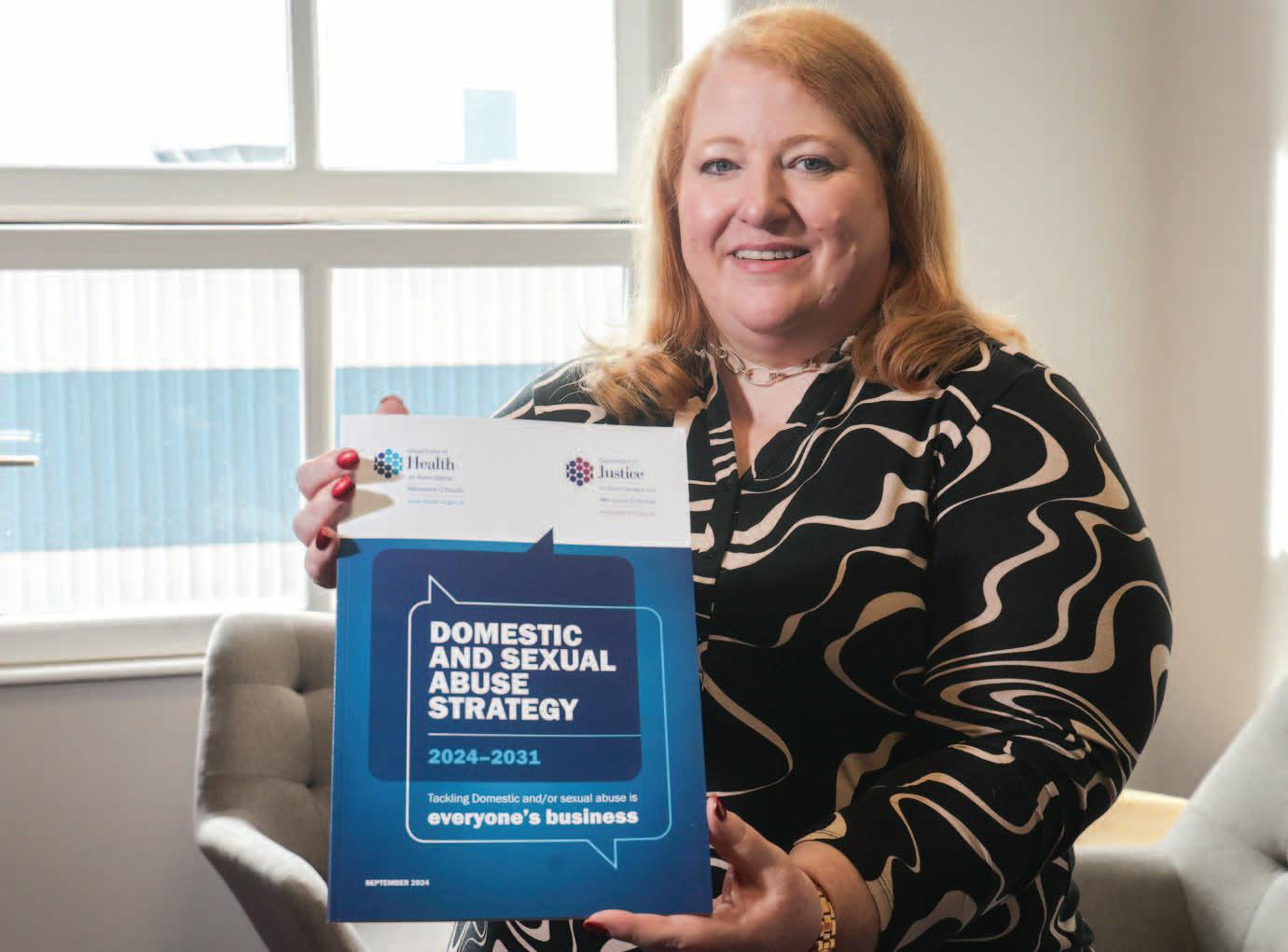

On average, the PSNI is made aware of a domestic abuse incident every 16 minutes, and sexual offence every two hours. In response, the Executive has published a new seven-year cross-departmental strategy, alongside a three-year action plan.
In late September 2024, Minister of Justice, Naomi Long MLA, and Minister of Health, Mike Nesbitt MLA jointly launched Domestic and Sexual Abuse Strategy 2024-2031
In their foreword to the strategy, the lead ministers referenced the collaboration with Department for Communities, the Department of Education, and the Executive Office, as well as voluntary and community sector stakeholders.
“Partnership is a key thread running through this Strategy,” they wrote, adding: “We are committed to create a society in Northern Ireland where domestic and sexual abuse are not tolerated, where victims receive the support they need and where those responsible are held to account.”
Throughout the document, the contribution made by stakeholders and those with lived experience of domestic and sexual abuse is acknowledged as having informed the strategy. Furthermore, it emphasises that a whole society approach is required to tackle domestic and/or sexual abuse.
While aligning with the Executive’s Strategic Framework to End Violence against Women and Girls, the new strategy is gender inclusive and recognises that “domestic and sexual abuse transcends boundaries of gender, age, sexual orientation, and ethnicity”. Fundamentally, the strategy “recognises that anyone can be a victim”.
For Northern Ireland, the strategy envisions a Northern Ireland in which:
• domestic and/or sexual violence is not tolerated, and everyone lives safe and free from fear;
• domestic and/or sexual abuse “is everyone’s business”, where partnership and collaboration create lasting change; and
• the voices of victims, including children and young people, inform decision-making.
Establishing a strategic direction, five pillars provide a basis for a series of action plans over the strategy’s lifetime.
1. Partnership: Driving change through “joint commitment, leadership and partnership working”.
2. Prevention: Preventing domestic and/or sexual abuse through early intervention; challenging attitudes and behaviours that engender it.
3. Children and young people: Alongside prevention, ensuring that children/young people are seen and heard, and can access support and services to help recovery as per their specific needs.
4. Support and provision: Ensuring that all victims can access “tailored, responsive, and specialised support and provision” to recover and rebuild.
5. Justice: Ensuring effective justice responses, supporting victims, while holding those guilty of abuse to account at the soonest opportunity.
An associated – and initial – three-year action plan was published online with actions under each of the five pillars above ranging in timeframe between one and three years. Many of the actions, the Action Plan notes, will require additional resources, including funding.
However, less than half of these 55 actions are costed, with the Action Plan explaining that “initial scoping and preparatory work will need to be progressed in order to identify reliable resource implications”. As such, the Action Plan caveats that such actions “may only be delivered if funding Is secured or implemented at a pace that funding permits”.
The initial plan is set to be reviewed at midway and endpoints of its lifespan, with the intention of informing subsequent action plans.
The Department of Justice (38) is the lead agency associated with most actions, followed by the Department of Health (25), and the Executive Office (eight). Other lead agencies include the PSNI, the Public Prosecution Service, the Northern Ireland Prison Service, the Housing Executive, and Victim Support NI.
The desired outcomes of the Action Plan for each pillar is as follows:
1. Partnership: A coordinated response to domestic and/or sexual abuse that is informed by victims and community engagement.
2. Prevention: Informing the public
about the different types of domestic and/or sexual abuse and its impact on victims including children and young people, to identify abuse and respond earlier.
3. Children and young people: Increasing the knowledge and skills of children and young people, and of supporting adults in their life, about forming healthy relationships, helping to prevent domestic and/or sexual abuse. Supporting children and young people to feel safe regardless of need, guide them into services quickly, and access safe accommodation-based services. Instil confidence in children and young people to report abuse, while reducing barriers to participation in the justice system, and ensuring effective justice responses.
4. Support and provision: Ensuring that victims feel safe regardless of need and are guided into services quickly, while ensuring that all victims of abuse can access safe accommodation-based services.
5. Justice: Ensuring that victims feel confident to report abuse, while reducing barriers to participation in the justice system, and ensuring effective justice responses while holding individuals accountable for abusive behaviour and supporting their change, reducing the risk of harm and enhancing victim safety.
Launched at NSPCC’s north Belfast headquarters, Long emphasised the pervasive experience of sexual abuse
across demographic metrics and committed to the creation of a society in which domestic and sexual abuse “are not tolerated”, victims are adequately supported, and those responsible are held accountable.
“This strategy is our sincere attempt to deliver on that aim, so that no one has to live in fear of abuse,” she said.
Asserting that every person has the right to live free from domestic and sexual abuse, Nesbitt said: “We are building on what we know works, on evidence-based practice,” adding: “Partnership is a key thread running through this strategy.”
NSPCC Northern Ireland welcomed the launch, especially pillar three of the strategy which focuses on children and young people. Its Assistant Director, Bronagh Muldoon commented: “The strategy is an important milestone and provides a focus on key areas that require cross-government action.
“NSPCC Northern Ireland is committed to working with government and our partners to prevent, recognise and respond to child sexual abuse and domestic abuse in Northern Ireland.”
Simultaneously, the two ministers have also launched a Children’s Sexual Offences Legal Advisers (SOLA) scheme, providing free legal advice to children and young people impacted by sexual crime. In addition, the scheme provides a small grant to help support the work of the community and voluntary sector.
Domestic abuse is threatening, controlling, coercive behaviour, violence, or abuse (psychological, virtual, physical, verbal, sexual, financial, or emotional) inflicted on anyone by a current or former intimate partner or family member.
Sexual abuse is any behaviour (physical, psychological, verbal, virtual/online) perceived to be of a sexual nature which is controlling, coercive, exploitative, harmful, or unwanted that is inflicted on anyone.


Two decades after its formation, the Public Prosecution Service continues to have a pivotal role to play in positive, transformational change, writes Stephen Herron, Director of Public Prosecutions for Northern Ireland.
This year marks a milestone 20 years since the formation of the Public Prosecution Service (PPS) for Northern Ireland.
Back in June 2005, this organisation replaced the Department of the Director of Public Prosecutions, which had existed since 1972. The primary reason for creating the PPS was to secure greater independence in prosecution decision making, and hence the need to be independent, fair and effective underpins our approach to delivering a vital public service.
I have been a prosecutor since 2002,
and the Director of Public Prosecutions (DPP) since 2018, so I have seen many changes regarding the nature of our work and the challenges we face. It surprises many that I am only the fourth DPP since 1972. In that time there have been 11 Chief Constables and six Chief Justices, which perhaps illustrates how the DPP is a ‘quasi-judicial’ post, intended to provide consistency and stability through what were undoubtedly difficult times for the justice system.
While I therefore appreciate the importance of my role (like my predecessors) in continuing to robustly
protect our independence, I have also long recognised the need for the PPS to work in partnership with other stakeholders to deliver improvements in service delivery.
Victims rightly expect a high level of care and sensitivity from the time they initially report a crime to police to the disposal of any subsequent proceedings at court. They are also entitled to have a justice outcome within a reasonable timeframe, as indeed are defendants.
The current fiscal challenges for policing and the justice system are well documented, and the reality is that the available resources have not been enough to keep pace with the changing nature of crime, and the increased complexity of prosecution work for both legal and administrative staff, that we have seen in recent years.
By way of illustration, the number of more serious offences referred to the PPS for a prosecution decision has increased by around 30 per cent since
2014/15. Within this rise in caseload, the number of serious sexual offence cases received has increased by over 50 per cent. There have also been significant rises in the number of domestic violence cases being reported, alongside the introduction of new offences to deal with these, such as that criminalising coercive and controlling behaviour.
These cases are more resource intensive for the PPS to deal with due to the type of material that has to be processed. There are often large amounts of thirdparty material (medical records and counselling notes, for example) which have to be considered. There has also been an exponential increase in the amount of digital material requiring review, including CCTV and body worn camera footage, mobile phone data, and material from social media activity.
Across the United Kingdom and Ireland, there appears to be enhanced victim confidence in reporting sexual and domestic violence, even where the offending may have taken place many years previously. This is clearly welcome, and I encourage victims, always, to come forward. However, the PPS, like other stakeholders, has struggled with the resource requirements to deal with this rise in serious and complex casework and to process cases at the pace we would wish. This has also had an impact on our ability to quickly progress decision making in other highprofile areas of work such as “legacy” cases.
Although I have advocated and will advocate for more funding due to historical under-investment against the backdrop of increased demand, I also want to champion modernisation and transformation. The PPS sits at the heart of the justice system, as the gateway between investigators and courts, so we have a pivotal role to play in positive, transformational change.
I believe that if we are to tackle longstanding issues around delay then we will need to be innovative in finding solutions, but also compassionate in placing the needs of victims at the forefront of any changes.
Our own strategic vision, PPS 2030, sets out a programme of work over the next five years to deliver a more efficient Public Prosecution Service, that will target its resources to those areas of greatest priority and where greatest value can be added.
The over-arching objectives of the programme are to:
In 2023/24 the PPS took 48,655 prosecution decisions. The conviction rate in the Crown Court was 87 per cent and in the Magistrates’ Court 79.1 per cent.
• redesign and optimise our service delivery model and processes to deliver our business more effectively;
• develop arrangements to allow cases to be dealt with proportionately and contribute to the reduction of avoidable delay;
• support staff and key stakeholders to work in a changing environment; and
• achieve a sustainable financial operating environment for the PPS in the long term.
Delivery of PPS 2030 will be through the identification of a portfolio of projects based around one or more of the following themes: effective processes; proportionate processes; digital processes; and victim processes.
The above themes dovetail with broader work programmes being taken forward through the work of the Criminal Justice Board, whose membership includes the Justice Minister, Lady Chief Justice and the Chief Constable.
My aims for the PPS milestone year of 2025 are to ensure that the often difficult and complex work of prosecutors is better understood by politicians, the media, and the public; that we continue to modernise to meet the vision of PPS 2030, and Criminal Justice Board objectives; and that the commitment and hard work of all PPS staff is recognised more widely.
Although the independence of our decision making will remain a core principle, I hope this year starts to see more support for the programme of
change we have embarked upon, particularly from politicians who have an important role to play in supporting criminal justice transformation. Whilst a properly functioning justice system will always have an element of challenge built in, I would also encourage more champions for the work of the PPS and hope others will join us as we celebrate the achievements and hard work of the last 20 years and look forward to building on this in the future.
Stephen Herron studied law at Queen’s University Belfast and qualified as a solicitor in 1997. He joined the then Department of the Director of Public Prosecutions in 2002, working as a prosecutor in various roles.
Herron played a key role in the Transformation Programme for the PPS which involved the rollout of a digital programme across courts, creation of a specialist prosecution unit for murder and serious sexual offences, the streamlining of regional services, and redesigning the supports provided to victims and witnesses.
He was appointed Director of Public Prosecutions by the Attorney General for Northern Ireland on 2 January 2018.

T: +44 (0) 28 9089 7100
E: info@ppsni.gov.uk
W: www.ppsni.gov.uk

Violence against women is a crisis that knows no borders, devastating lives across the whole island of Ireland. Despite progress in legal protections and better awareness, both north and south, the epidemic persists, writes Orla O’Connor, the Director of the National Women’s Council (NWC).
A recent report from the National Women’s Council in collaboration with Women’s Aid Federation Northern Ireland (WAFNI), highlights the need for harmonised, all-island solutions to combat violence against women, in particular, intimate partner violence. The report is both a call to action and a roadmap for change.
Intimate partner violence is a shared crisis across this island and the statistics are eyewatering. In 2023, the Police Service of Northern Ireland (PSNI) responded to a domestic abuse incident every 16 minutes, while An Garda Síochána handled similar calls every 10 minutes.
Since 2020, 58 women have been murdered across the island, with Northern Ireland disproportionately accounting for 40 per cent of these deaths despite representing just 30 per cent of the total population. The North’s femicide rate is the second highest in Europe.
The border between Northern Ireland and the Republic creates unique challenges for survivors and the service providers supporting them. Women fleeing abuse often encounter additional barriers when seeking housing, social protections, or legal recourse across jurisdictions. The ability of a woman to flee across the border and get a house and a job could
“Women’s organisations across the island are at the forefront of addressing the epidemic of violence against women, often filling gaps left by the State.”
be the difference between running to safety and staying in an abusive relationship. Unfortunately, we know that these complexities tragically force many to return to unsafe environments.
Brexit has exacerbated these challenges, particularly for marginalised women, disrupting mechanisms like European Protection Orders and other cross border agreements. Perpetrators have also exploited the border to evade justice. While informal collaboration exists between PSNI and An Garda Síochána, the lack of formalised structures undermines seamless support. Greater all-island coordination is essential to address jurisdictional gaps, improve efficiency, and ensure no survivor is left unsupported.
Women’s organisations across the island are at the forefront of addressing the epidemic of violence against women, often filling gaps left by the State. These groups provide critical services – ranging from refuge spaces to court accompaniment – but remain chronically underfunded.
The report emphasises the urgent need for sustained investment in civil society. Funding must be multiannual, and ring-fenced to support lifesaving services, trauma-informed interventions, and public awareness campaigns. Targeted funding must address Brexit-related services gaps.
The report sets out actionable steps to create an all-island response to intimate partner violence. For example, it calls for the harmonisation of legal protections for survivors. Authorities must clarify cross border rights and entitlements, remove
immigration barriers, and introduce humanitarian exemptions for survivors who fail to meet residency requirements like the Habitual Residence Condition.
Formalised cross-border partnerships between law enforcement, social services, and civil society organisations are vital to streamline responses and close jurisdictional loopholes, particularly those exacerbated by Brexit.
This report is a rallying call for a better allisland approach. Its recommendations offer a pathway to more harmonised, effective responses that build on the strengths of both jurisdictions. However, the responsibility to act lies with policymakers. Civil society cannot shoulder this burden alone, we need decision-makers to provide the leadership and resources needed to support survivors and hold perpetrators accountable.
Ending violence against women demands urgency and true commitment. Its impact ripples through communities, affecting health, justice, and economic systems. But by acting now, with coordinated efforts and sustained investment, we can create an Ireland where safety knows no borders, and every woman’s right to live free from violence is fully realised.
The full North South Cooperation to Tackle Violence Against Women Dialogue Report, published in November 2024, can be read here:
www.nwci.ie/images/uploads/North_South_Coo peration_to_Tackle_VAW.pdf

The company has played a key role in modernising global criminal justice systems across the UK and further afield by providing governments and law enforcement agencies with innovative technology solutions that enhance operational effectiveness, transparency, and build public trust.
Closer to home, work has also commenced on the new Themis Programme for the Northern Ireland Courts and Tribunals Service (NICTS). This 20-year contract, valued at £85 million underscores CGI’s pivotal role in modernising the justice system, enhancing efficiency, and improving access to justice services across Northern Ireland.
The Themis Programme represents a significant step forward in the NICTS's Service Modernisation Programme. By redesigning court processes around the stakeholder, Themis will transform services and administrative processes across tribunals, civil, family, and criminal business areas. This ambitious transformation aims to deliver a digitalfirst, paper-light environment that will facilitate greater transparency, faster case delivery, and increased accessibility through virtual services.
This latest contract builds on CGI’s specialism within the justice sector which sees its technology deeply embedded across multiple facets of the UK’s justice sector. This includes the development of digital court systems, integrated justice platforms, and e-filing
For
over 20 years, CGI has been at the forefront of helping the UK Justice system to adopt new technology and employ modern ways of working, writes Michelle Sherrard, Director of Consulting Services, Northern Ireland.
solutions that optimise processes and address case backlogs. Additionally, CGI’s platforms facilitate cross-border data sharing for transnational crime prevention, use AI to automate case management, and enhance community engagement through mobile apps and online portals.
CGI also supports predictive analytics for policing, ensuring secure digital evidence management, and enhancing cybersecurity to combat cybercrime. Through these innovations, CGI plays a vital role in shaping a modern and efficient justice system that is responsive to changing societal needs.
This extensive experience enables CGI to help public safety and law enforcement agencies join the dots, enabling more effective crime prevention, safeguarding and investigative activity. CGI enhances its clients’ ability to transform data into actionable intelligence, and facilitates secure information sharing across local, national and international levels. Key projects that demonstrate the transformative solutions we are delivering include:
CGI has designed, built and currently operates the Police National Database (PND), serving all UK police forces with 4.3 billion records. Every month, circa
7,000 users from 55 organisations complete approximately 850,000 searches.
The PND is a national information management system that improves the ability of the police service to manage and share intelligence and other operational information, to prevent and detect crime and make communities safer.
The Police National Database is a story of continual evolution. Designed, built and operated by CGI, the Police National Database has progressively expanded its functionality to keep pace with technological progress and the changing nature of crime and threats to the public.
CGI developed a comprehensive database which enables forces to rapidly access and search on people, objects, locations and events (POLE) in a secure way. PND provides a complex picture of intelligence held across the UK; rapid access to a ‘picture’ that would have previously taken weeks to produce; improved data quality and accuracy; and all of this intelligence being available in real time.
CGI partnered with the National Crime Agency’s International Crime Bureau (UKICB) to implement an intelligent automation (IA) solution, which
significantly improved the processing of INTERPOL circulations, which are international requests for cooperation or alerts.
Traditionally the processing of INTERPOL circulations was extremely resource-intensive and diverted staff from other core business functions.
Since 2018, the UKICB has used CGI IA to process them, allowing case preparation and management activities to be completed 79 per cent faster than with human workers, saving 28,000 hours of manual processing and an average full-time equivalent (FTE) saving of 20 officers.
This automation enables NCA officers to focus more on intelligence gathering and decision-making while maintaining control over automated processes and adapting the workforce according to incoming demand. It also provides a visual overview of workflows, highlights bottlenecks for improved efficiency, and allows for the reassignment of virtual workers to clear backlogs in hours rather than days.
The next phases of IA will further increase savings to significantly reduce workloads and enable better risk management of higher volumes of requests.
Victims of domestic abuse are among the most vulnerable groups served by the justice system, making it essential that they can trust in systems designed to protect and support them. This is particularly relevant here in Northern Ireland, as the Executive Office has recently launched its Strategic Framework and Delivery Plan to End Violence Against Women and Girls (EVAWG), highlighting the need for a co-ordinated approach.
Drawing on its extensive experience and specialist expertise, CGI helps connect the dots across public safety and criminal justice agencies, transforming fragmented data into actionable intelligence to enhance victim support and system efficiency.
This is demonstrated through its advocacy for improved support for domestic abuse victims. In partnership with Crest Advisory, (a UK-based consultancy and research firm that specialises in criminal justice, policing, and public safety) CGI has conducted research to identify effective strategies to address the challenges of tackling domestic abuse across the justice system and beyond. They produced a white paper called Joining the Dots: domestic abuse, civil and criminal justice and technology, which calls for a more integrated approach between the civil and criminal justice systems to enhance the safety and well-being of victims.

By sharing best practices and harnessing technology, CGI aims to better protect vulnerable people and prevent domestic abuse now, while also exploring future opportunities for innovative solutions that may help prevent further incidents of abuse.
CGI’s experience in justice systems extends beyond the UK. The Bavarian State Ministry of Justice partnered with CGI in a €250 million, six-year programme to modernise its IT infrastructure, aiming to enhance efficiency and improve access to justice. As part of this effort, CGI now manages two data centres – one in Munich and another in Nuremberg –and approximately 220 locations across Bavaria with 16,500 workstations.
Work on this new engagement began at the start of 2021, with CGI assuming responsibility for the ministry’s IT operational services, which include domain, infrastructure, user support, unified communications, media technology, and project and consulting services for Bavarian courts and public prosecutors’ offices.
CGI thus helps to create faster and more reliable public services while promoting a more accessible, innovative justice system.
Being the strategic delivery partner with the Home Office and various justice agencies across the UK allows us to
have a greater and more meaningful impact in helping keep UK citizens safe and the country secure.
CGI’s ‘Global Experience, Local Delivery’ approach brings together decades of expertise in justice systems from around the world and then tailors it to meet the unique needs of local jurisdictions. By leveraging a global network of skilled professionals and advanced technologies, CGI ensures that justice services are modernised, efficient, and accessible. Our deep understanding of diverse legal frameworks, combined with local delivery teams, such as that in our Centre of Excellence in Belfast, enables CGI to deliver impactful solutions that drive innovation and improve service delivery at the regional level. We are looking forward to continuing to leverage that expertise for the benefit of people here in Northern Ireland.
For further information on CGI’s work in Northern Ireland visit https://www.cgi.com/uk/en-gb/cgi-innorthern-ireland


In a December 2024 statement to the Assembly, Justice Minister Naomi Long MLA unveiled the Enabling Access to Justice (EAJ) programme, aimed at reshaping the justice system in Northern Ireland to be more accessible, efficient, and equitable.
While the programme offers an ambitious blueprint for reform, it is somewhat undermined by a lack of specific actions.
The EAJ programme is grounded in the findings of several critical reviews, particularly the Fundamental Review of Criminal Legal Aid, which highlighted inefficiencies, financial strain, and systemic challenges across the justice system. These reviews paint a stark picture of a justice system under pressure with rising legal aid costs, outdated delivery models, and processes that compound trauma for vulnerable users.
Long’s acknowledgment of these challenges shows an understanding of the need for comprehensive reform. Her stated intention to simplify legal aid eligibility, promote early resolution of disputes, and adopt technology to improve service delivery reflects lessons from these foundational reviews. This groundwork provides a compelling case for change and sets a strong context for action.
However, the EAJ programme lacks the practical detail required to translate these findings into meaningful change.
Long has outlined high-level goals – fairness, proportionality, efficiency – but the programme lacks concrete steps to achieve them. For example, while the proposal to simplify legal aid eligibility has been broadly well received within the sector, particularly given current rules that are overly complex and exclude some of the most vulnerable, there is little explanation of how this simplification will be implemented. Among the unanswered questions are whether legal aid eligibility thresholds are to be tied to income, and what safeguards are to be put in place to ensure that resources are allocated to those most in need.
Similarly, the proposal to integrate technology to reduce costs and delays is another attractive concept, but the programme does not specify what technologies will be adopted, how they will be funded, or when they will be implemented.


This is particularly concerning given the persistent underfunding of the Department of Justice and the well documented challenges of introducing digital solutions in the public sector.

One of the programme’s central contradictions is its ambition to improve access to justice while grappling with significant financial constraints. The Minister’s recognition that the justice system operates under unsustainable budgetary pressures is important, however, the proposals remain vague.
For instance, the suggestion of exploring private financing mechanisms for strategic litigation is intriguing but fraught with potential pitfalls. Without clear guidelines, this could lead to inequities where wealthier individuals and groups dominate access to these mechanisms, undermining the very fairness the programme seeks to promote.
Additionally, the EAJ programme aspires to better manage legal aid spending – already at a historic high of £114 million in 2023/24 – but fails to outline how this will be achieved. The reviews on which the programme is based highlight inefficiencies such as prolonged court delays and a lack of structured early engagement.
However, Long’s announcement stops short of specifying reforms to address these challenges, calling into question whether there will be new processes for case management, or whether there will be adequate finding for alternate dispute resolution mechanisms.
Another area of concern is the lack of a clear accountability framework for the proposed reforms. Long’s emphasis on collaboration with the legal profession and voluntary sector is promising, as is her proposal to enhance data collection and monitoring. However, without measurable benchmarks or timelines, it is difficult to see how the Department will assess whether its reforms are succeeding.

One of the most striking omissions in the EAJ programme is it does not to address systemic inefficiencies comprehensively. While Long identifies delays and adversarial processes as barriers to justice, her solutions are aspirational rather than practical. For example, incentivising early resolution is a sound principle, but the programme does not detail what changes to remuneration structures or procedural rules will encourage early engagement.
Similarly, the programme’s focus on holistic support for vulnerable groups, such as victims of domestic abuse or asylum seekers, is commendable. However, there are no further details on funding, staffing, or partnerships.
The action plan due to follow from the programme has been delayed, with Long having initially outline her intention to have it published within one week of her statement to the Assembly. agendaNi understands that the plan is due to be published soon.


The Criminal Justice System in Northern Ireland is in crisis. This stark warning, issued by newly elected President of the Law Society of Northern Ireland, Colin Mitchell, highlights a looming disaster that requires immediate attention from Justice Minister Naomi Long MLA and the Northern Ireland Executive.
The crisis within the system is the result of systemic underfunding that has occurred ever since responsibility for policing and justice was devolved to Stormont in 2010. Now, more than a decade later, the full extent of this underinvestment has become painfully apparent. In the face of the Executive’s draft Budget, which threatens to exacerbate this already dire situation, there is an urgent need for reform, proper resourcing, and a clear commitment to ensuring access to justice for all.
The transfer of responsibility for policing and justice to Stormont was intended to allow for more localised decision-making and investment in Northern Ireland’s justice system. However, what has transpired over the last 10 years is an escalating financial crisis within the
system, particularly with regard to legal aid funding. This underfunding has now reached a critical point, impacting the ability of legal professionals to provide the essential services that are crucial for the proper functioning of the criminal justice process.
Legal aid has long been a cornerstone of Northern Ireland’s access to justice. Introduced in 1966, it ensures that individuals who cannot afford legal representation receive a fair hearing. However, the level of remuneration for legal aid work has not kept pace with inflation or the rising costs associated with providing such services. For two decades, legal aid fees have remained largely unchanged, despite significant increases in both the complexity and cost of legal cases. This stagnation in funding has resulted in a profession that is increasingly unable or unwilling to carry out this vital work at the current rates.
The long-term consequences of chronic underinvestment in Northern Ireland’s criminal justice system are now becoming starkly evident. Perhaps the most immediate issue is the shrinking pool of lawyers willing to work in the criminal courts. The fact is that legal aid fees are now so low that they no longer reflect the time, expertise, and commitment required by those who represent individuals facing criminal charges. Legal professionals, including solicitors and barristers, are increasingly withdrawing from cases because the financial viability of providing these services is simply no longer sustainable. This development is both regrettable and inevitable. No professional group, be it in the legal field or any other sector, can be expected to work for rates of pay that are far below what is
required to keep a business running. As lawyers withdraw from the system, it directly impacts the quality of legal representation and the timely delivery of justice. With fewer lawyers available to take on cases, courtrooms become more congested, defendants face delays in receiving their day in court, and ultimately, individuals are denied access to the timely justice they are entitled to under the law.
It is not simply a matter of lower pay for lawyers; the underlying issue is that the criminal justice system in Northern Ireland is becoming less functional with each passing day. When defendants cannot find lawyers to represent them, it disrupts the balance of justice. This ripple effect reverberates throughout the system, contributing to delays in trial dates, overcrowding in prisons, and the undermining of the public’s faith in the ability of the criminal justice process to work fairly and efficiently.
Justice Minister Naomi Long MLA, recognising the need for reform, appointed Judge Tom Burgess to undertake a review of criminal legal aid. The review, completed at the end of August 2024, sought to address the funding problem and provide concrete recommendations for reform. However, rather than acting swiftly to implement the key recommendations from Judge Burgess’s review, the Minister has proposed an “implementation plan” that is heavily criticised for being overly complex and slow-moving. This proposed plan, critics argue, risks running out of steam without delivering the necessary reforms or, at best, producing limited results that fail to resolve the crisis.
There is widespread concern that, at a time of such urgent need, the failure to expedite the implementation of actionable reforms will only exacerbate the crisis further. As legal aid lawyers continue to withdraw from cases and the legal sector’s ability to function at its most basic level erodes, any delay in delivering on proposed reforms risks pushing the entire system towards complete breakdown.
The legal system cannot continue to function effectively if the professionals upon whom that system depends are being forced to abandon the courts, leaving the most vulnerable in society without access to justice. If the
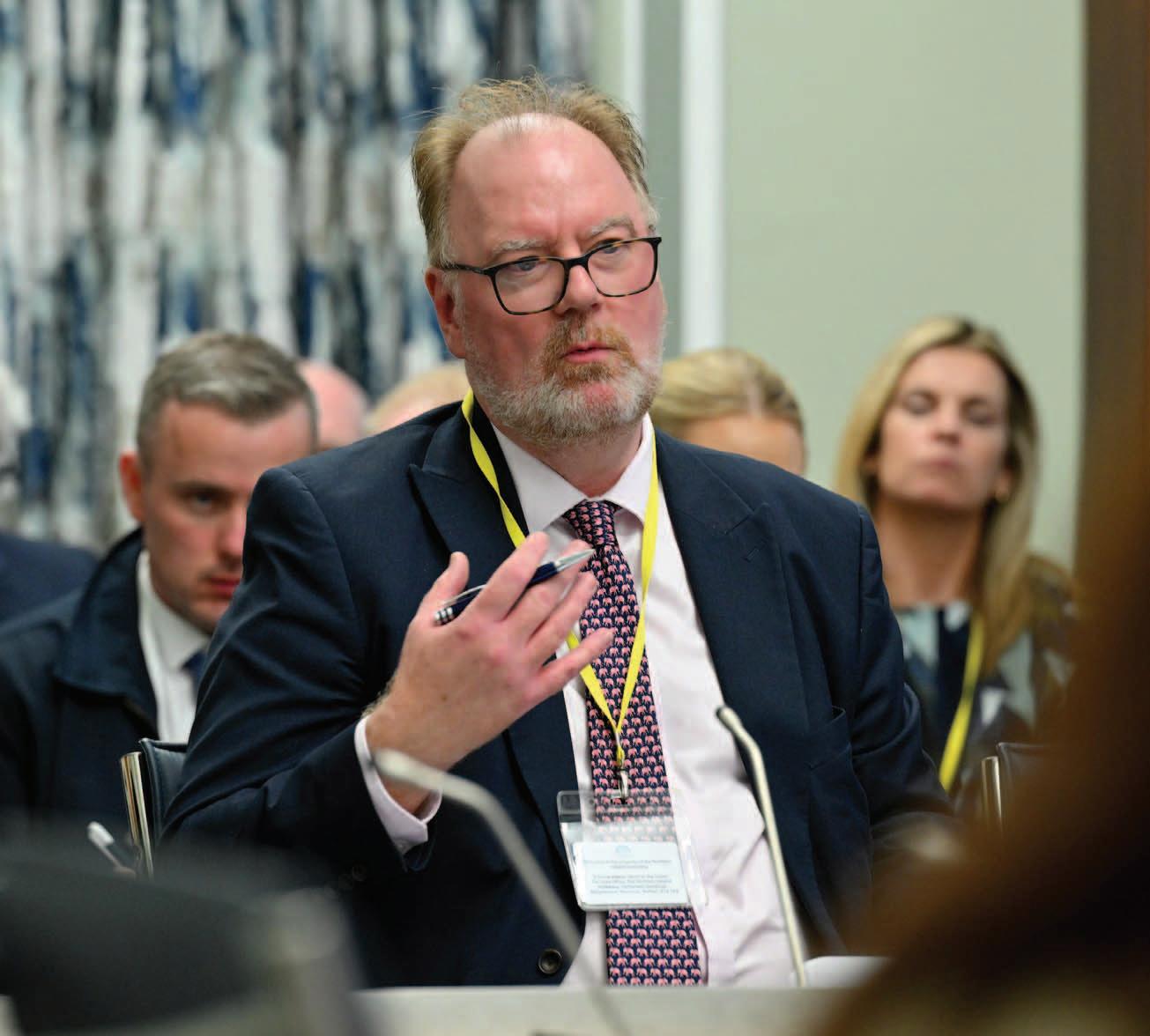
Northern Ireland Executive fails to properly fund the criminal justice system, the already fragile system will collapse under its own weight. Justice is not a luxury – it is a fundamental right, one that must not be compromised.
The Law Society’s warning that Northern Ireland’s criminal justice system is teetering on the edge of collapse is not an exaggeration, but a reflection of the immediate threat that lies before us. Without a proper injection of funds into the legal aid system and the broader criminal justice infrastructure, the system risks grinding to a halt. The shortage of criminal lawyers is not simply a manpower issue but one that directly impacts the ability of the public to access fair trials and timely legal processes.
The Northern Ireland Executive must understand that continued failure to address this issue is not an option. Urgent action is required to ensure the sustainability of the criminal justice system. This means an immediate and substantial increase in legal aid funding, as well as a clear commitment to addressing long-term funding shortfalls.
The message from the legal community is clear: without lawyers willing to work in the criminal courts and represent clients in the full spectrum of legal cases, the system will come to a

standstill. Without swift intervention, the criminal justice system in Northern Ireland could collapse entirely, with catastrophic consequences for the rule of law, public safety, and civil rights. The time for action is now. The Justice Minister and the Northern Ireland Executive must move beyond vague plans and immediately address the financial crisis within the criminal justice system to prevent a total breakdown of the system.
It is incumbent upon those in positions of power to acknowledge that justice must remain at the heart of government priorities, and the fate of the criminal justice system cannot be sidelined any longer. Immediate action is required to prevent a situation where the most vulnerable in our society are left without the support they need to navigate the criminal justice process.
E: enquiry@lawsoc-ni.org
W: www.lawsoc-ni.org

Annual performance plans for policing should include “specific, measurable objectives” aligned with the overarching outcomes of the Policing Plan, a report by the Northern Ireland Audit Office (NIAO) states.
In July 2024, the Northern Ireland Audit Office released its 2024 report, Continuous Improvement Arrangements in Policing, offering a detailed analysis of how the Northern Ireland Policing Board (NIPB) and the Police Service of Northern Ireland (PSNI) have progressed in delivering efficient, effective, and community-focused policing.
As required under the Police (Northern Ireland) Act 2000, the report examines the NIPB’s statutory responsibilities and evaluates the PSNI’s performance for 2022/23, alongside its Annual Performance Plan for 2023/24.
Ongoing challenges
The report identifies persistent obstacles that hinder continuous improvement in the PSNI:
1. Data and baseline limitations: The NIAO asserts that there is an absence of robust, quantitative baseline data. As the report notes: “If this data is not available and
being continuously developed, the value of the [PSNI] Annual Performance Plan may be compromised.”
Baseline data is critical for evaluating the success of performance measures against strategic goals.
2. Partial achievement of goals: Of the 13 performance measures in the 2022/23 plan, 62 per cent were partially achieved, while 8 per cent were not achieved. For example, measures aimed at improving public confidence and police service representativeness fell short of their targets.
3. Insufficient learning mechanisms: While the report acknowledges efforts have been made to learn from previous initiatives, it states that integration of these lessons into future plans remains inconsistent. The report underscores the need for structured mechanisms to ensure lessons inform strategic development.
1. Enhance data systems: The report strongly advocates for the development of comprehensive baseline data and improved performance metrics, stating that these are essential to evaluate progress accurately and support informed decision-making. The report also says that inclusion of quantitative baselines in annual performance plans, where absent, must become a priority.
2. Refine strategic planning: The report says that future annual performance plans should include specific, measurable objectives aligned with the overarching outcomes of the Policing Plan. For example, the 2023/24 PSNI plan introduced new measures such as tracking progress against the Violence Against Women and Girls Strategy, which it states provides a clearer path for evaluating success.
3. Embed continuous learning: To address systemic challenges, the NIAO states that the NIPB and PSNI must institutionalise continuous learning, saying that a robust feedback loop should capture lessons from past performance, integrate findings into current plans, and inform the development of the next policing framework.
The report provides detailed evaluations of key performance areas:
1. Safety in communities: The PSNI has partially achieved its goals around reducing repeat victimisation and offending. However, challenges remain in addressing organised crime and fostering a widespread sense of safety.
2. Public confidence in policing: While the NIAO says that public satisfaction with PSNI’s responsiveness “shows promise”, representativeness within the police force remains a critical area for improvement, and efforts to diversify the PSNI have not yet delivered measurable results.
3. Community partnership initiatives: The NIAO says that collaborative policing efforts have seen “mixed outcomes”. While Neighbourhood Policing Team initiatives have made some strides in tackling local challenges, the absence of comprehensive baseline data limits the ability to assess long-term impact.
For policymakers, the findings carry significant implications. Firstly, on resource prioritisation, the report says that investments in data systems and analytics will be critical for creating the robust datasets necessary for informed decision/making. These tools are cited by the NIAO as “essential” to measure the success of strategies like the Violence Against Women and Girls Strategy
On oversight and accountability of the two policing institutions, the report states that enhanced oversight mechanisms, coupled with transparent reporting, will ensure accountability for implementing the recommendations, and that justice leaders must advocate for greater collaboration between oversight bodies and the PSNI.
Thirdly, is an enhanced focus on community trust. Addressing public concerns, such as response times and the fairness of police actions, will be crucial for rebuilding trust, the report says, adding that community-focused initiatives must remain a cornerstone of policing reforms.
As the 2020-2025 Policing Plan nears completion, the report urges the NIPB and PSNI to carry forward lessons learned into the development of the next policing framework.
Continuous improvement in policing demands a sustained commitment to transparency, accountability, and innovation. By addressing the report’s recommendations, the NIPB and PSNI can create a policing system that is more effective, equitable, and responsive to the needs of Northern Ireland’s communities.
The Continuous Improvement Arrangements in Policing 2024 report serves as both a call to action and a strategic guide for achieving lasting reform. By embracing its findings, the justice sector can ensure that policing continues to meet the expectations of the communities it serves.
Speaking at the time of publication, Comptroller and Auditor General Dorinnia Carville asserted that there is a need for more robust baseline data and enhanced performance indicators to ensure the Annual Performance Plan achieves its intended impact.

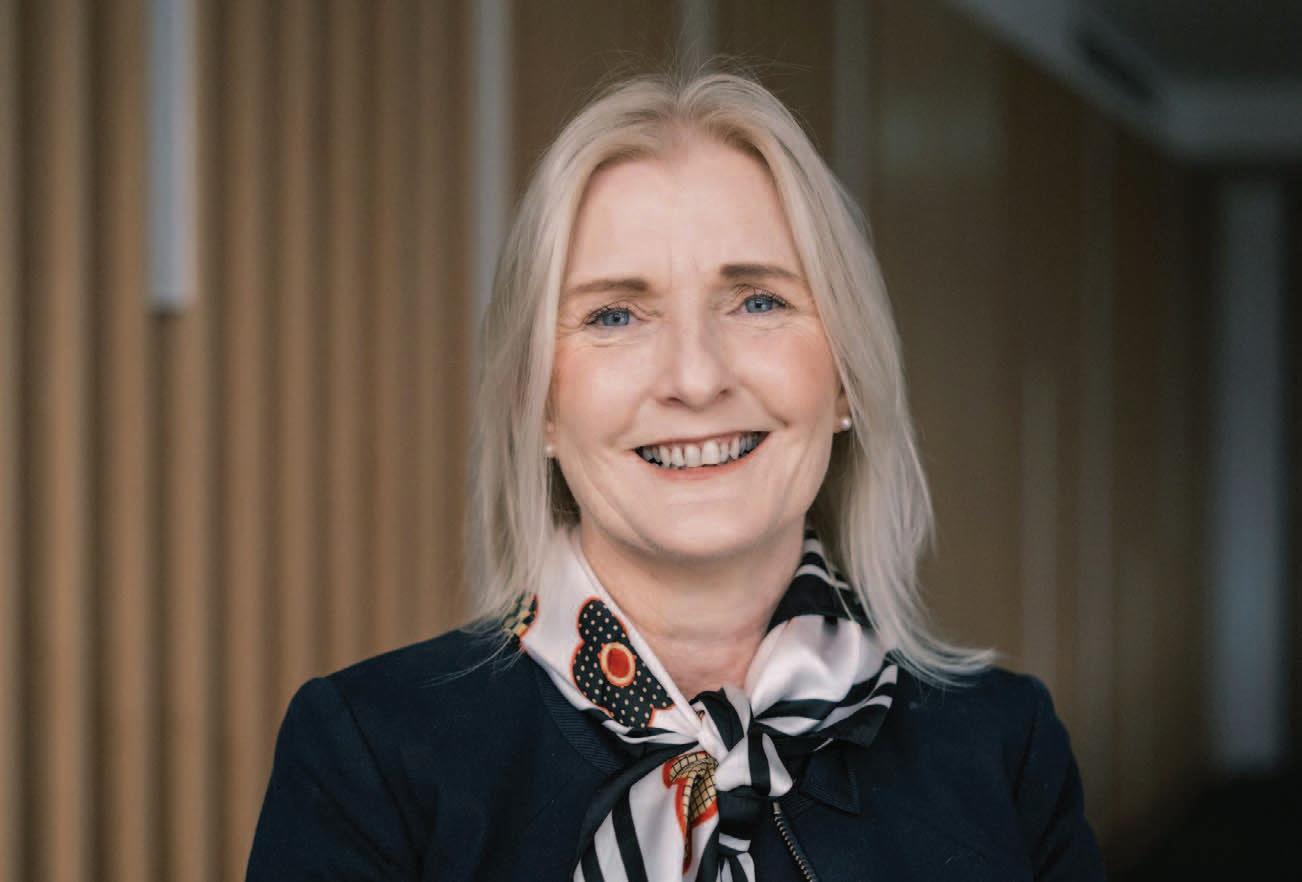
Ombudsman, Margaret Kelly, explains an ombudsman’s role in accessing justice.
A fair society means that everyone should have equal access to justice and the redress it can provide. Yet the complexity, cost and time involved in accessing the traditional legal processes for civil or administrative justice can prove prohibitive. Perhaps even more so in recent years as more restricted access to legal aid means representation
is either unavailable or has become out of reach for many.
Nationally, as well as internationally, ombudsman offices have become a
significant and permanent feature of the broader legal landscape, aiming to provide an alternative path to justice depending on the remedy being sought.
Increasingly ombudsman offices provide a route for the individual citizen to seek both resolution from, and accountability for, public bodies and their decision making. Further, the development of powers of own initiative among many ombudsman offices, including my own, means issues of wider or systemic maladministration may be identified, investigated, and addressed. This potentially reduces the need for action to be taken by individuals either through courts or tribunals or via complaints to ombudsman schemes.
At the Northern Ireland Public Services Ombudsman (NIPSO), we investigate unresolved complaints about most public bodies, including government departments, local councils, the NI Environment Agency, care homes, hospitals, schools and universities, prisons, and providers of social housing.


When we investigate, we consider the evidence and give the complainant and the organisation an equal hearing.
Our aim is to resolve complaints quickly, fairly, and effectively. This may involve:
• Helping the complainant and the organisation reach an agreement;
• considering all the facts during an investigation to determine whether the public body did things properly; and
• making recommendations on how a public body can improve to prevent similar problems from happening in the future.
Our service can be accessed directly and without need for representation. This makes it easier for people to use our service, but we are aware that the role and value of the ombudsman may not be immediately clear, so we are also focused on improving our accessibility through engagement. Our investigations are inquisitorial, focusing on fact-finding and on seeking to understand what happened. This is an important part of our process and is one of the reasons why people may choose an ombudsman route over a traditional legal route.
Our investigations are carried out in private. Confidentiality ensures that all parties feel secure in sharing information, allowing us to closely examine all of the issues without external pressures. We examine records, interview witnesses, and use professional experts where appropriate.
Once the investigation is complete, we often publish our full report. We generally name the organisation which is the subject of the complaint, but do not name complainants. We are therefore able to hold organisations to account while still protecting people’s identities.
Whether the issue involves delay, administrative error, or poor communication by an organisation, we make sure that complainants are heard and their grievances addressed.
Our overall approach makes NIPSO a practical, cost effective, and attractive option for resolving disputes.
On a wider level, our work helps to build trust between individuals and public service providers.
When organisations fail to act on complaints they risk losing public trust. This is unfortunately evidenced by the findings of a number of public inquiries in Northern Ireland and across the UK. Our work helps ensure that organisations take complaints seriously and benefits not only the complainant but also the organisation.
Elsewhere on these islands, and internationally, there has been reflection and debate on where the ombudsman sits in the legal landscape and how they might effectively provide more access to justice.1 The Law Society of England and Wales launched a 21st Century Justice initiative in which it both published a green paper (2023) and an interim report (2024)2 which aimed to narrow the justice gap and ensure increased access to justice, particularly for those on low incomes. Interestingly both identified maximising access to ombudsman offices as one key strand of achieving this.
They highlight a number of recommendations for improved links and co-operation between ombudsman offices and the courts, and in particular argue for consideration of the ability of administrative courts and tribunals to refer potentially systemic maladministration to ombudsman offices for investigation and action. My own initiative report PIP and the Value of Further Evidence (2021) identified systemic maladministration in how
Key statistics 2023/24
• 1,173 complaints;
• 1,232 enquiries;
• 12 per cent increase from 202223, and more than double than in 2016;
• 74 detailed investigation reports (available online at nipso.org.uk);
• 80 per cent of complaints upheld;
• 192 recommendations for service improvement.
further evidence was used in decision making on applications for personal independence payments – something I have no doubt the tribunal saw on many occasions.
In Northern Ireland, NIPSO has a number of interfaces with the legal system. In common with all other ombudsman schemes, it is a route to challenge our decisions where they may seem irrational or unfair. Further there is provision for those who have suffered detriment to seek further compensation via the County Court on foot of a finding of maladministration by my office.
Over and above that, the courts here recognise and value the Ombudsman as an alternative route or choice for justice, and in a number of established cases3 both here and elsewhere recognise that it is for the complainant to choose that route. Additionally, the complex and thorough nature of our investigations mean that they may feature in informing the courts where there is a matter of judicial review eg. in the matter of a continuing health care judicial review a substantive investigation report was referenced.4

(April
UKSC2021/0028 Mc Cue v Glasgow City Council and UKSC 31 Mc Aleenon for Judicial Review
4. NIKB 72 McMinnis and the Commissioner for Older People v BHSCT and DoH and NICA77 McMinnis and the Commissioner for Older People v Dept of Health.
Ensuring the Ombudsman functions effectively as part of the wider legal landscape, and that there is cooperation and understanding of both, is key to ensuring the widest access to administrative justice for citizens in Northern Ireland. As we move forward in the 21st century consideration of our broader legal landscape and providing the most effective routes to justice for all is worth further reflection and debate.
Contact T: 0800 34 34 24
E: nipso@nipso.org.uk
W: www.nipso.org.uk
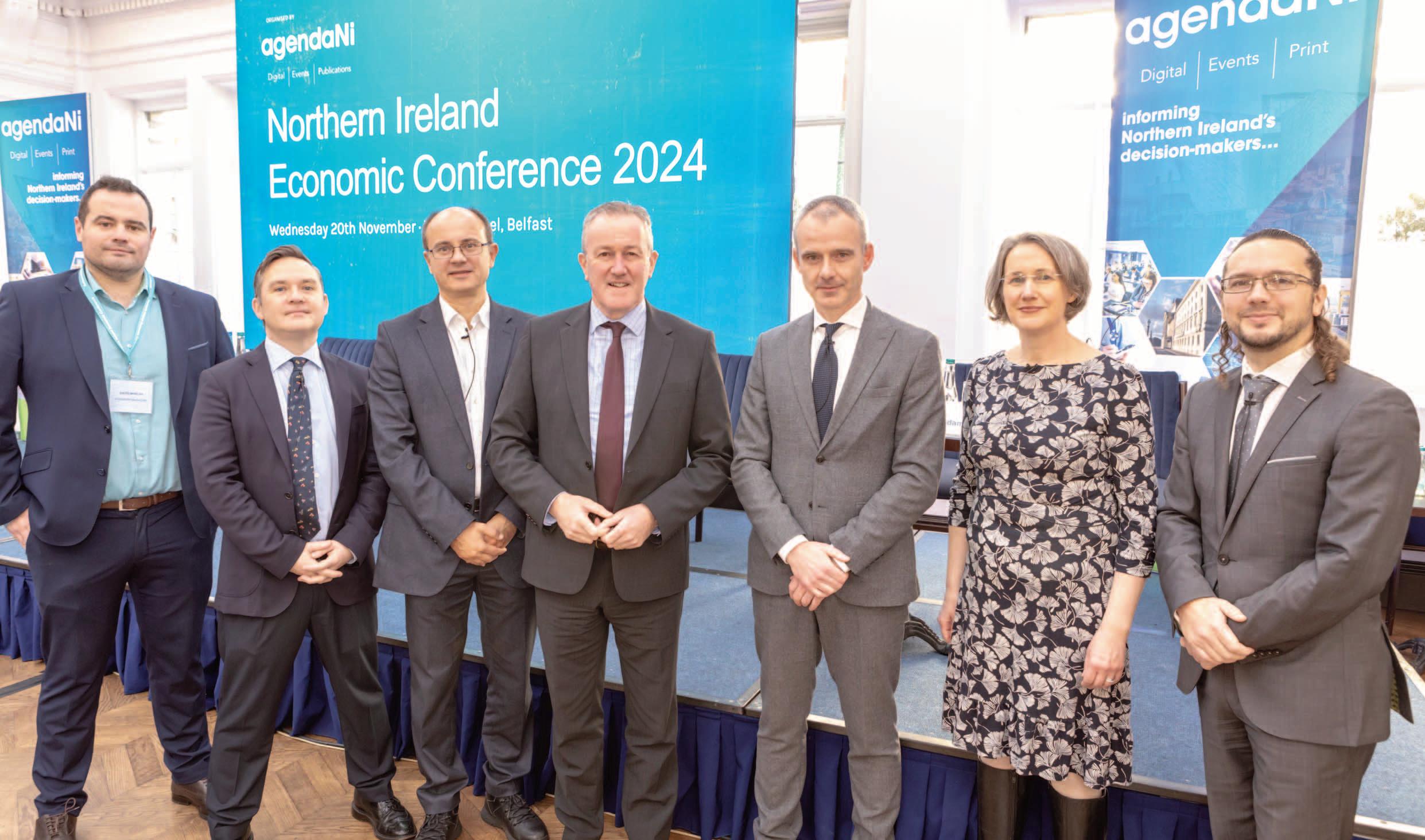
The 2024 Northern Ireland Economic Conference, now in its 29th year, recently took place in Titanic Hotel, Belfast. The conference is Northern Ireland’s premier economic analysis event and is unique in being the only forum that brings together key stakeholders and takes a high-level look at the performance of, and prospects for the local economy. It is firmly established as the annual summit for Northern Ireland’s economic community. Policymakers and business leaders came together for a day of discussion and networking.
The top line up of expert speakers, both local and visiting included Conor Murphy MLA, Minister for the Economy; Chris Giles, Economic Commentator, Financial Times and Helen McCarthy, Chief Scientific and Technology Adviser, Northern Ireland Executive.
We would like to take this opportunity to thank the 2024 Northern Ireland Economic Conference speakers and delegates who joined us in Titanic Hotel, Belfast and made the conference a huge success.

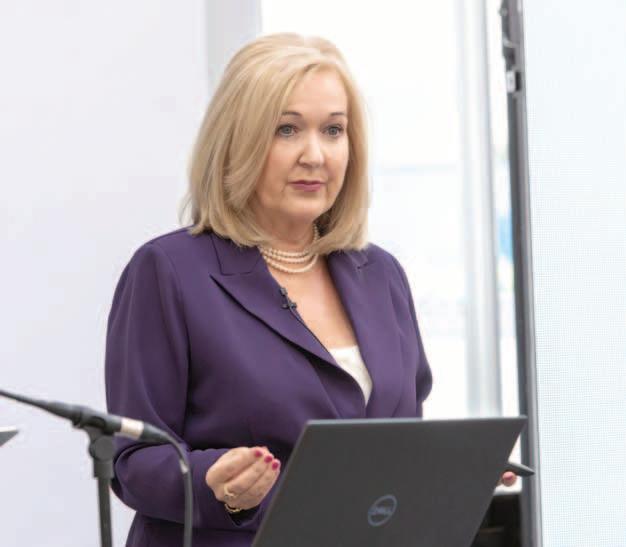


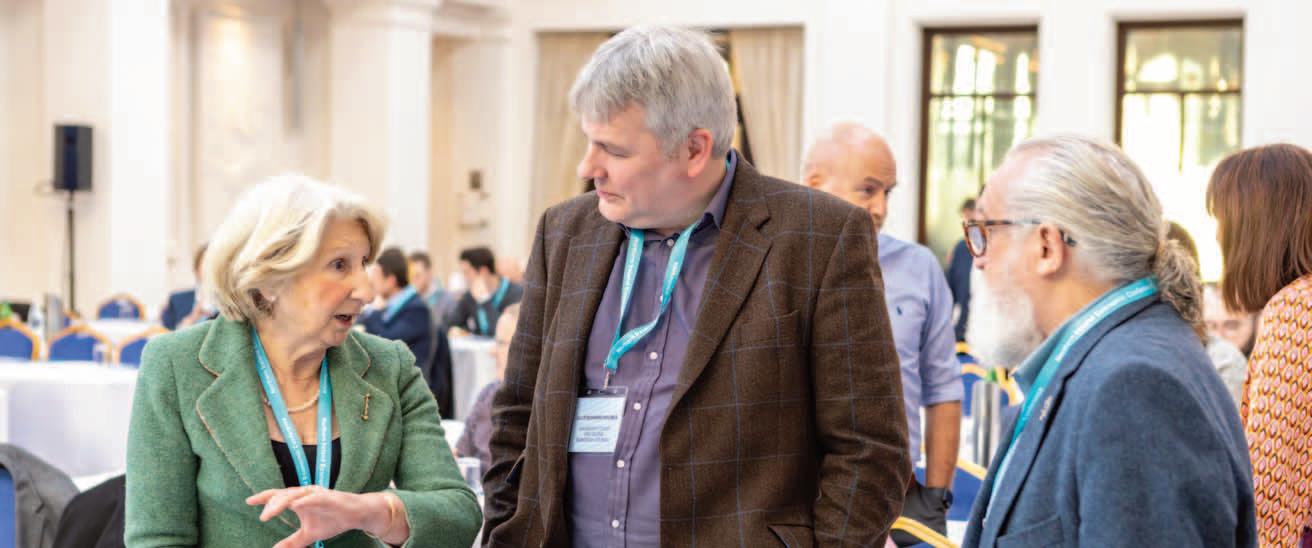
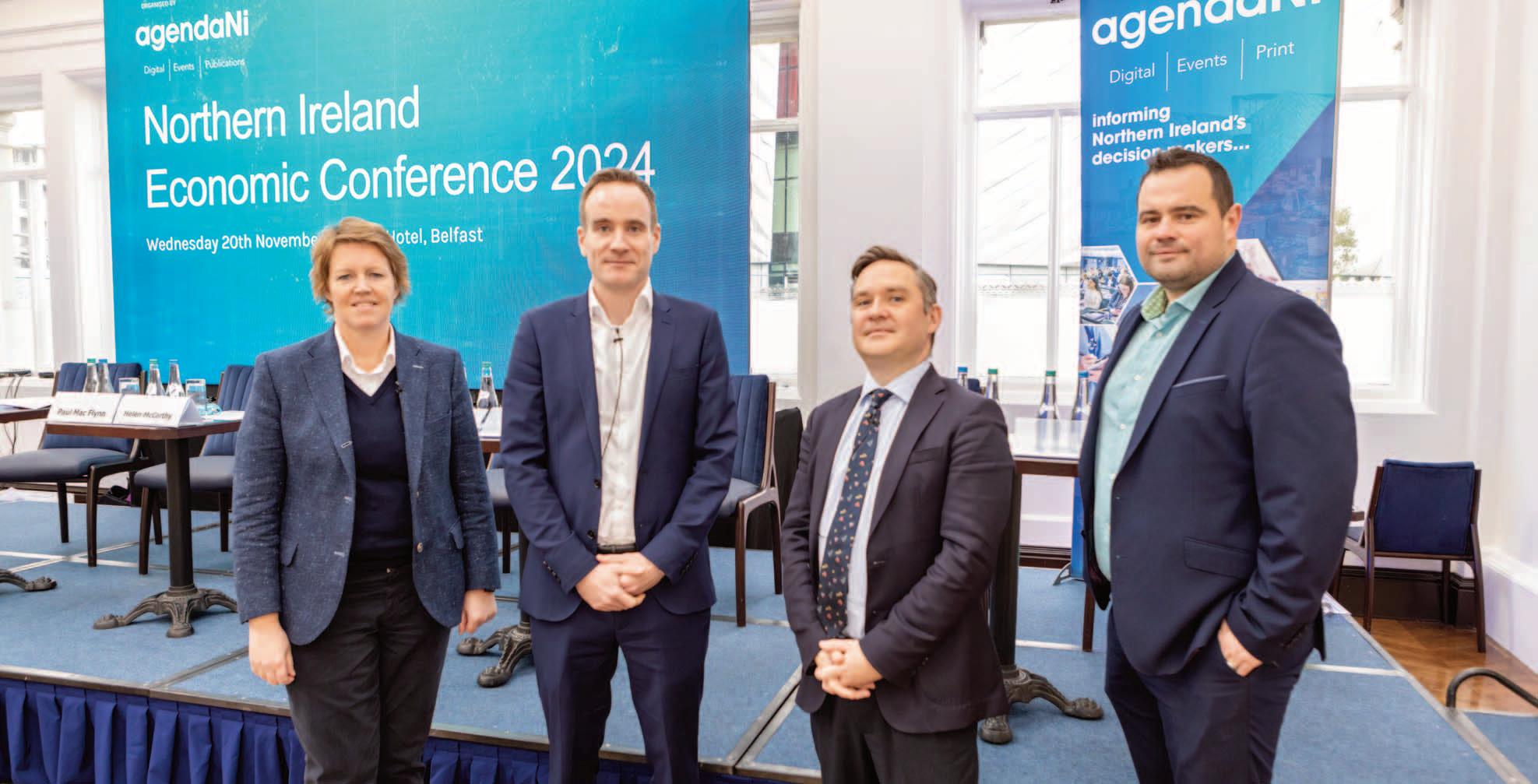
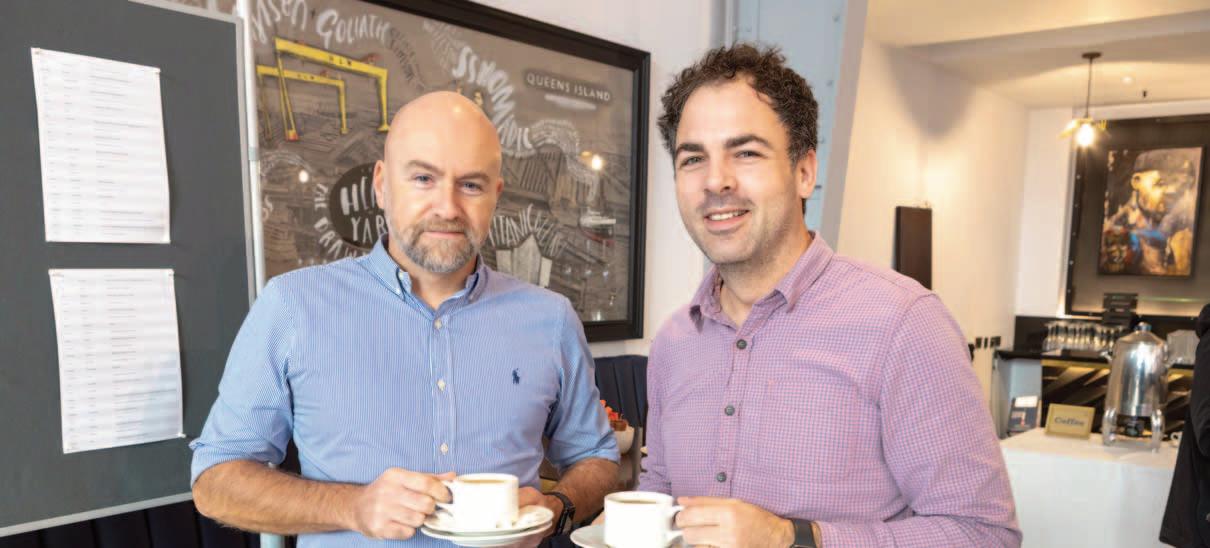
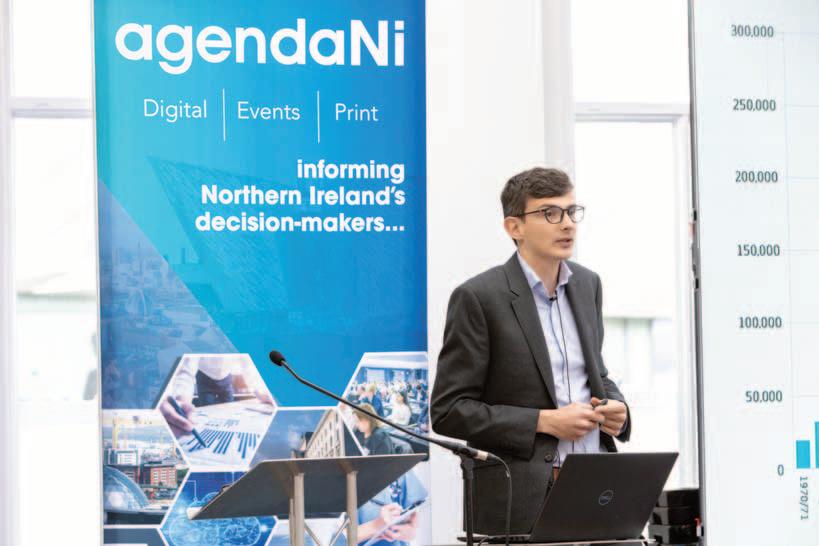


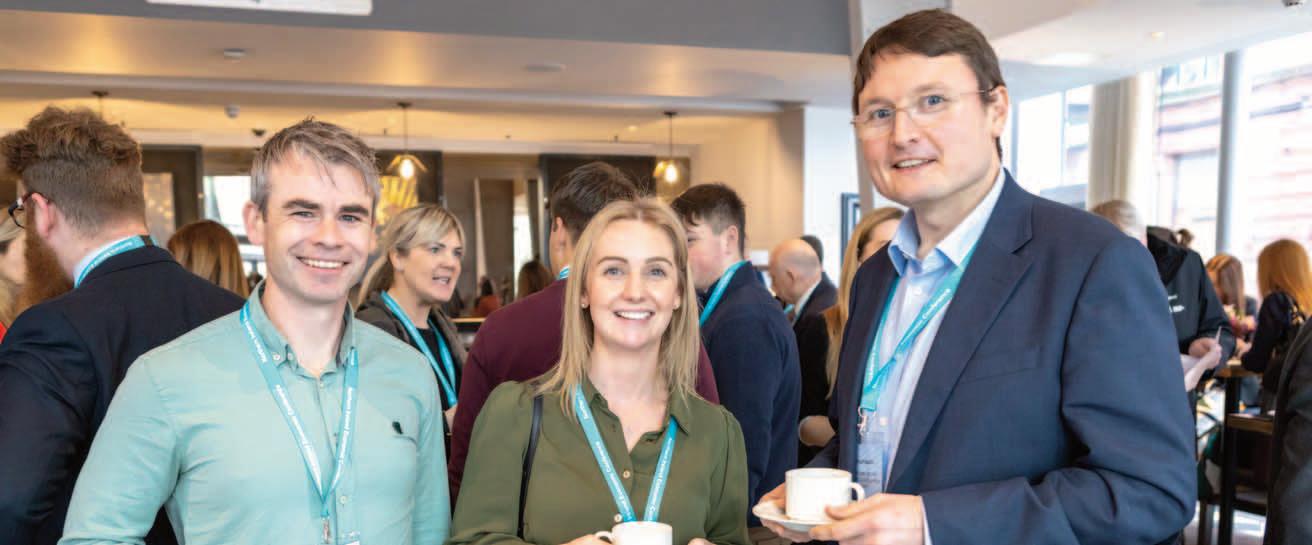



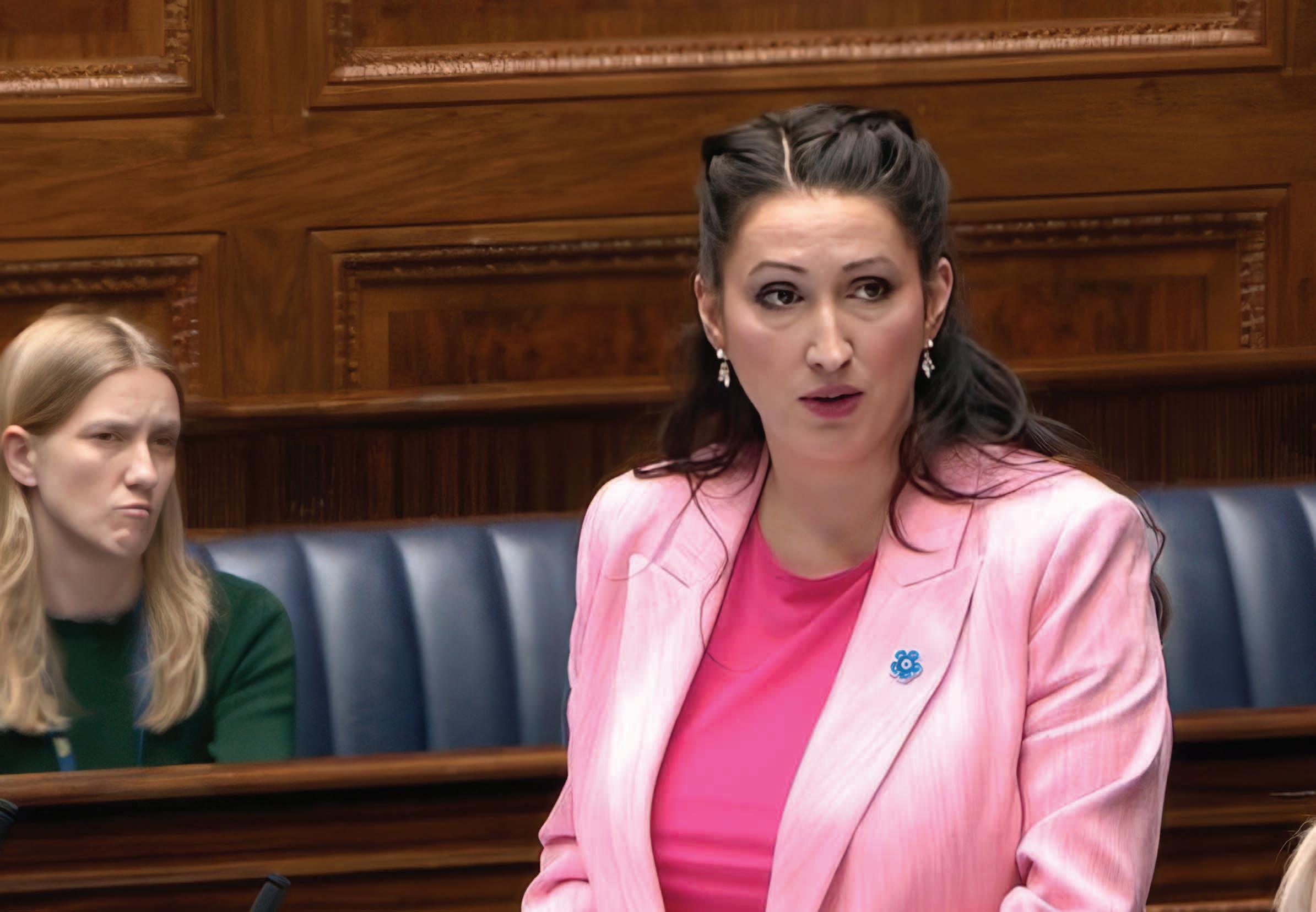

The system of co-option in Northern Ireland risks not following voters’ decisions, the Electoral Commission has said.
In a November 2024 report on elections in 2024 across the United Kingdom, the Electoral Commission says that cooption “removes democratic choice from voters and reduces transparency”. The commission states that this is likely to be exacerbated in 2027, when both the Northern Ireland Assembly and local government elections are scheduled to take place.
The Assembly is the only example of a either a unicameral legislature or lower house in the world where co-option is practised by manner of direct nomination from a political party. While a form of co-
option is used in the German Bundestag and for Ireland’s – and formerly Britain’s –seats in the European Parliament, these are on a predetermined list, i.e. a ‘list system’, which is provided to the legislature prior to the holding of an election.
The most common form of filling a vacancy in most parliaments is a byelection, which is used in the event of vacancies in the House of Commons, Dáil Éireann, and the US House of Representatives.
When a vacancy arises in the Northern Ireland Assembly, the nominating officer
of a political party fills the vacancy created by the resignation or death of one of its members. This is because these elections use the single transferable vote system, so co-option is in place to ensure that the preference of electors at the previous election continues to be reflected.
However, the Republic of Ireland also holds by-elections – even though it also uses the single transferable vote system for general elections.
Following the 2024 UK general election, four sitting MLAs and one councillor were elected as MPs, and resigned from their

“Some parties flagrantly abuse the current system instead of using it as intended, substituting MLAs on and off the pitch like a football manager.”
other elected positions. Through co-option, the vacancies in the Assembly were replaced by a sitting councillor. This created a further four vacancies to be filled in the local councils, also through co-option.
Furthermore, the fact that Alex Easton MP chose to nominate a DUP member upon his election to Westminster, in spite of his Assembly mandate having been as an independent, could be a catalyst for reform.
Forty of the 90 MLAs currently in the Assembly have been co-opted in at some stage during their careers. While the re-election rate of co-optees in the Assembly in 2022 (22 of the 23 MLAs co-opted in the previous term won election in 2022) suggests that this democratic deficit is not an area of concern for voters, the Electoral Commission has said that the use of a ‘substitution list’ akin to those in European elections “may be one possible solution”.
Cahir Hughes, Head of the Electoral Commission in Northern Ireland, says: “It is encouraging following the UK parliamentary general election, voters in Northern Ireland continue to have positive views about how elections are run, with most feeling confident and satisfied with the registration and voting process. Despite this, significant improvements are needed to further support democratic participation and trust in future elections.
“A ‘substitution list’ provided by candidates at the time of nomination may be one possible solution to this issue. Ahead of the 2027 elections, we will engage with the UK Government and political parties to maintain integrity and confidence in the electoral process.”
However, list systems have been utilised for the Assembly in the past. It has been suggested that they were dropped because responsibility for designating a candidate’s substitution list lay with the candidate, with minimal oversight from their political party, meaning that in some instances lists were left blank or were filled with names who were not serious political candidates.
agendaNi contacted all the parties with representation in the Assembly. The SDLP and the
Alliance Party have both outlined their support for maintaining co-option in the Assembly, although the SDLP has described the system as “imperfect” and said that “some parties flagrantly abuse the current system instead of using it as intended, substituting MLAs on and off the pitch like a football manager”.
A party spokesperson added: “The SDLP is open to conversations around how we address the current challenges and create a system of replacing elected representatives that is not open to misuse.”
An Alliance Party spokesperson says that “cooptions are a necessity, which save the public the cost of by-elections, while preserving the balance of parties which the electorate originally chose, which a by-election may not”.
In a statement to agendaNi, the TUV said that there are “significant issues” with the co-option system both in relation to the Assembly and councils and criticised the Alliance Party for its co-option of Sian Mulholland in North Antrim: “No one in North Antrim has ever voted for Sian Mulholland and the person people did actually vote for decided to leave the Assembly less than a year after being elected and without ever having spoken in the chamber.”
However, the party also said: “While there are occasions when vacancies arising are unavoidable and unpredictable – such as happened following Jim Allister’s election to Westminster – there are occasions when the system is abused.”
People Before Profit MLA Gerry Carroll told agendaNi: “People Before Profit believe that there should be a co-option system in place to allow constituents to have a continuation of the same policies but under a different MLA in the case of a change in circumstances.
“However, it is quite remarkable that the bigger parties have used this mechanism so frequently and seemingly without any embarrassment.
“It’s even more astounding that the joint head of state here was unelected and availed of the co-option mechanism herself.”
Sinn Féin, the DUP, and UUP, did not respond to agendaNi’s request for comment.

In June 2016, the majority of people in England and Wales voted to take the ‘United Kingdom’ out of the European Union. This decision, known as Brexit, was taken without the consent of the people of the North of Ireland, where the Good Friday Agreement gives people the right to be British, Irish (and therefore EU citizens), or both, writes Sinn Féin’s Kathleen Funchion MEP.






“Whilst the North must adhere to many EU rules, it does not have elected representation at an EU level.”
Kathleen Funchion MEP, Sinn Féin
The subsequent several years of negotiations brought about what is commonly referred to as ‘the Protocol’. This essentially gives the North designated special status within the EU and Britain, but it also creates a democratic deficit. Whilst the North must adhere to many EU rules, it does not have elected representation at an EU level.
We in Sinn Féin believe that this democratic deficit must be addressed, and one practical (and partial) step would be to allocate observer MEPs for the North.
Observer MEPs should be directly elected by citizens in the North, would be able to take up their seats, and would have speaking rights in the European Parliament. Their main role would be to articulate the needs and views of people in the North and to engage with EU institutions on their behalf.
The idea of observer MEPs is not a new one. Preunification Germany had observer MEPs, and more recently, in 2023, European Parliament President Roberta Metsola MEP suggested that Ukraine and Moldova could be allocated observer MEPs as they await formal accession into the EU.
Another very practical solution would be for direct dialogue between the northern Assembly and the European Parliament. Whilst there are informal meetings between MLAs and MEPs, there is no
formal structure set up between the two legislators. The European Parliament is open to this idea, but unfortunately London insists on controlling all relations between devolved institutions and the EU.
In the absence of observer MEPs or direct dialogue, we have the European Parliament’s delegation for relations with Britain. This delegation of MEPs meets monthly in Brussels or Strasbourg and twice a year in Brussels or London with their Westminster counterparts. It is through my membership of this delegation that I have committed to bring the voices and the concerns of people in the North to the European Parliament.
Of course, as a Sinn Féin Member of the European Parliament (MEP), it would be remiss of me to not bring up the elephant in the room: Irish reunification.
I am deeply committed to representing the people of the North and working towards a prosperous future for all of Ireland. I believe the best way for us to achieve this through a united Ireland.
The conversation on Irish unity is taking place across the 32 counties of Ireland in both private and public forums and recent political developments demonstrate that Ireland is

changing, particularly with the election of Michelle O’Neill MLA as First Minister. For the first time ever, a nationalist has assumed this position, in a state designed to ensure a unionist majority.
This marked an historic moment for Ireland as a whole. This election demonstrates that Ireland has changed, with the future of our island open to all, regardless of background or identity. It showed that there is not one office out of reach for anyone in Irish society. The days of discrimination are gone – and they are not coming back.
In the Dáil, we have seen Uachtarán Shinn Féin Mary Lou McDonald TD lead the opposition. The first republican and the first woman to do so.
The North has long endured policies that have decimated public services and worsened inequality through harsh austerity measures imposed by the Tory government in Westminster. Their policies have destroyed public services and caused significant hardship.
For too long, the North has been hamstrung by decisions made in London. The people of the North deserve better. Sinn Féin is committed to ensuring that the Executive, under Michelle O’Neill’s leadership, makes its own decisions and controls its economic future.
We in Sinn Féin are committed to working with those from British or unionist traditions, despite our differing views on Ireland’s constitutional future. The people of the North, regardless of their background, rightly demand cooperation and respect. It is our duty to respond to this call with honesty, transparency, and a willingness to work together to deliver real change for all.
The reunification of our country has often been seen as a longterm goal, but I believe this is now a viable project. It is crucial that we begin the work now, in practical terms.
In my previous role as a Teachta Dála for Carlow/Kilkenny and as Cathaoirleach of the Joint Oireachtas Committees for the Good Friday Agreement and for Children, Disability, Equality, Integration, and Youth, I focused on building cross-party collaboration and ensured that the all-island issues were firmly on the political agenda.

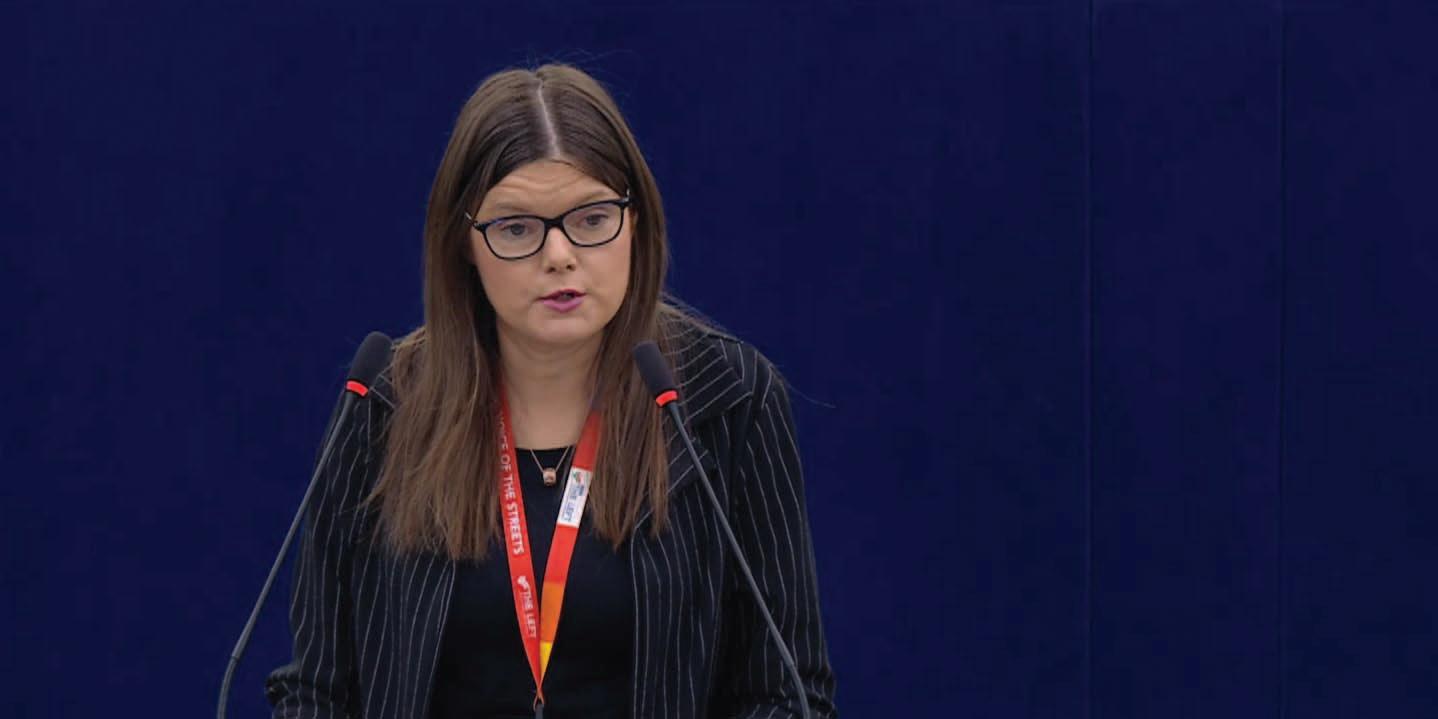
Now, my focus is on pushing the incoming Irish Government to take immediate action towards reunification, starting with the publication of a green paper that will outline a roadmap for the future of a united Ireland. We also need to see a citizens’ assembly and proper forums that represent all of the people of Ireland. Sinn Féin is fully committed to standing up for the rights and concerns of every citizen across the 32 counties of Ireland.
Our society is becoming increasingly diverse, and we must embrace this diversity. The days of second-class citizenship are gone, and we must continue to build a society where everyone is treated equally and with respect. This vision for Ireland is one where people can be Irish, British, both, or none – each identity is valid, and each person has a place in our collective future.
The challenges ahead are significant, but so too are the opportunities. Together, we can build a united, democratic, and inclusive Ireland – a place where every citizen, from every background, can thrive.
As a Sinn Féin MEP, I will continue to work tirelessly towards this goal.

Kathleen Funchion was elected as a Member of the European Parliament (MEP) in the 2024 European elections. Representing the South constituency, the Kilkenny native was a Teachta Dála (TD) for the Carlow-Kilkenny constituency between 2016 and 2024. Before this, she was a full-time organiser with the trade union, and in 2009 was elected as Sinn Féin’s first councillor in Kilkenny since 1923.

Increased business costs announced by UK Chancellor Rachel Reeves MP are “long overdue”, argues the ICTU’s John O’Farrell.
The new year started with a flurry of cold cheer from large and small companies over increases in the minimum wage and employers’ national insurance announced in October 2024 by the UK Chancellor.
“The British Retail Consortium (BRC) lobby group warned that budget measures mean there is ‘little hope’ of food prices ‘going anywhere but up’ in the second half of 2025,” as one of many, many, news reports said. That wistful chimera ‘confidence’ had been dented, and therefore retailers like Tesco feel compelled to increase prices to offset “£250 million per year”.
After the silly conversation over Labour’s first budget about landlords and shareholders being ‘workers’, the focus has shifted to the ‘fairness’ of raising £40 billion, mostly from businesses, to start to fix the damage committed to the public realm by 14 years of Tory policies.
This is an additional cost for many businesses, there is no denying that. It is also long overdue.
Ten years ago, the then Chancellor Gideon ‘George’ Osborne announced: “Tax cuts for businesses worth over £11 billion per year in 2014-2015: Tax changes coming into effect this week will see the biggest cuts to personal and business taxes for two decades and the most important in a generation.”
Nine years ago, the same figure announced he would “freeze working-age benefits for four years and raise the thresholds at which Britons can access the country’s expensive tax credits system, designed to top up the earnings of those on low incomes.” Those and other welfare cuts amounted to £12 billion. By 2021, £37 billion less was being
spent on working-age social security compared with 2010, despite rising prices and living costs, according to estimates produced by the House of Commons Library.
This is as straight forward a transfer of wealth from one class to another as you will ever find. The ‘foundations’ which Osborne used to claim he was buttressing were hollowed out, as brutally revealed during the Covid Inquiry, despite his best attempts to conjure a new reality from base evidence.
As the BMA President, Martin McKee, commented: “For him to say there is ‘no connection whatsoever between austerity and the unequal impact of the pandemic on disadvantaged communities’ is quite staggering. The removal of the social safety net, the cutting and reallocating of public health budgets, the underfunding of public services – all of this had its greatest impact on the most disadvantaged.
“Tens of thousands of excess deaths in the poorest areas were attributed to austerity policies even before the pandemic hit, with ill health among the key causes. Austerity left the poorest exposed to the worst of this catastrophe. In the decade after 2010 life expectancy in the UK hardly improved at all.”
Public services are a great lever for equality. Universal services for everyone, rich and poor, deliver better quality than token handouts for the desperate. Their hollowing-out subsidised corporate welfare. David Cameron’s declared policy was to make the UK “the most open, welcoming, business-friendly country in the world”.
He listed the “great incentives” for businesses to come to the UK in a 2014 document for UK Trade and Investment (UKTI) – a quango helping British businesses succeed abroad and to woo overseas investors. These incentives included the lowest corporation tax rate anywhere in the G7, and tax exemptions for research, energy, fuel, insurance for exporters and direct government support such as that from Invest NI. In addition, we can add direct government procurement for everything to schoolbooks to auditing and such great success stories as PPE procurement during the pandemic and Fujitsu’s Horizon system for the Post Office.
Corporation tax was cut from 28 per cent to an unsustainable 17 percent, and largely reversed by successive chancellor Rishi Sunak MP, necessary to offset the cost of the pandemic and the ongoing slow puncture of Brexit, which “means economic growth will be 4 per cent lower than had the UK stayed in the single market and customs union”.
Tesco’s pre-tax profits in 2024 were £2.3 billion. As a result of policies (and allowances) since 2010, their post-tax profits were quite comfortable. Its CEO, Ken Murphy, “was paid £4.7 million in salary and bonuses in the year to February 2024”.
Even smaller firms should note, before joining the chorus of complaints, that they pay the lowest percentage of wage costs in social contributions of any European country, except Ireland (of course). Even with this 1.2 per cent increase, they remain below the OECD average. They should count their blessings.



A year after the restoration of the Northern Ireland Assembly, and over three years into the current mandate, only four bills introduced to the Assembly have been granted royal assent and have passed into law. All of these bills were sponsored by an Executive minister, and all were granted accelerated passage.
Four other Executive bills, which were not accelerated, are currently making their way through various scrutiny stages. While, historically, the number of pieces of legislation signed into law always tends to be heavily weighted to the latter stages of a mandate, the volume of legislation passing through the
Assembly still appears comparatively low to previous mandates.
The majority of primary legislation passing through the Assembly tends to be Executive-led, and brought forward by specific ministers, however, mechanisms exist to allow for bills to be introduced by an individual MLA or Assembly committees, which is particularly important for independent MLAs, or those representing parties outside of the Executive.
The proposal of a bill by an individual MLA is a rigorous process. The MLA must lodge their proposal with the Bill Office and are then required to conduct a
consultation on their proposal. A consultation paper must be lodged with the Bill Office within four months of the original proposal and a final proposal of the bill must also be sent after the end of the consultation. If this final proposal is approved by the Speaker, the Assembly provides access to the drafting service.
In the previous mandate (2017 to 2022), 19 members’ bills were introduced, 10 of which completed the legislative process to become acts. As of yet, no members’ bills have been introduced in the current mandate, however, nine have been proposed. Two of these proposals are open to consultation until January 2025,
Proposer: John Blair MLA
Status of proposal: Consultation closed 13 January 2025
Concept: Northern Ireland is the only part of the United Kingdom without a ban on hunting live mammals with dogs, which includes hunting foxes. The bill proposes to ban the hunting of wild mammals with dogs in Northern Ireland, and also, ban trail hunting and effectively outlaw flushing with dogs for pest control.

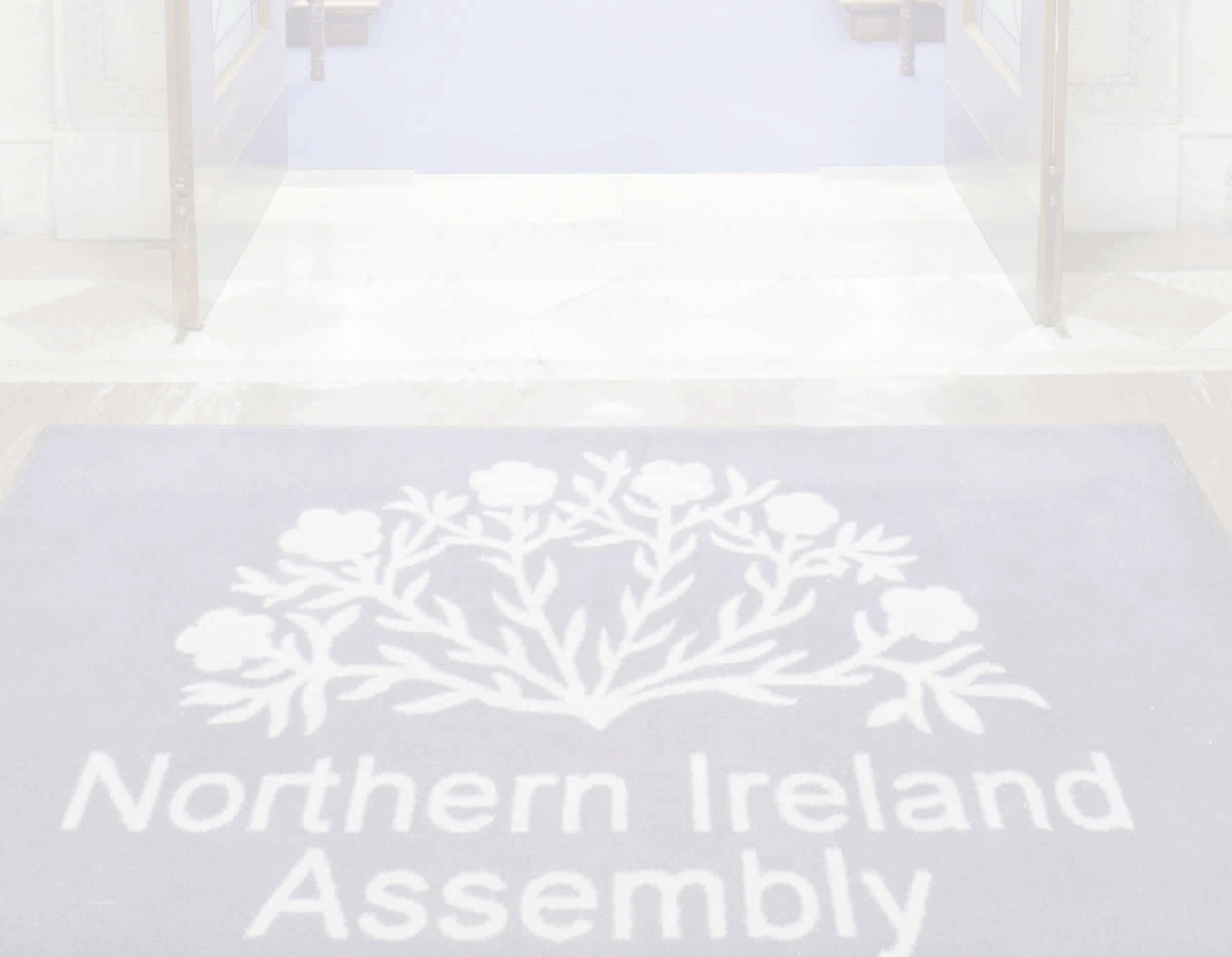


Proposer: Gerry Carroll MLA
Status of proposal: Consultation open until 22 January 2025
Concept: The Bill proposes to cut and cap rents, increase housing provision by turning empty houses into homes, establish a rental board to protect renters’ rights, hold landlords to account, and ensure minimum housing standards.
Proposer: Danny Baker MLA
Status of proposal: Consultation open until 18 February 2025
Concept: The proposed legislation will place a statutory duty on the Department of Education and the Education Authority to provide financial payments in lieu of free school meals during school holidays to those children and young people who are eligible.
Proposer: Danny Donnelly MLA
Status of proposal: Consultation open until 11 March 2025
Concept: Under this new law, public authorities would have to pay due regard to the United Nations Convention on the Rights of Persons with Disabilities (UNCRPD).
Proposer: Paula Bradshaw MLA
Status of proposal: Consultation open until 31 March 2025
Concept: The Bill proposes a regulatory framework to enable the display of emblems on street furniture within a Code of Conduct.
Proposer: Sinéad McLaughlin MLA
Status of proposal: Consultation open until 16 February 2025
Concept: This legislation intends to ensure that the Executive takes a deliberative, proactive, and intentional approach to level the playing field for people from different places and ensure that where you live is not a barrier to success.
Proposer: Peter McReynolds MLA
Status of proposal: Consultation open until 6 March 2025
Concept: This legislation would seek to strengthen the legal protection of individual and groups of trees, as well as ancient and long-established woodland in Northern Ireland.
Proposer: Eóin Tennyson MLA
Status of proposal: Consultation open until 20 March 2025
Concept: Legislation which will ban conversion practices.
Proposer: Pat Sheehan MLA
Status of proposal: Consultation open until 4 April 2025
Concept: To place a statutory duty on the Department of Education to deliver a Workforce Plan for the Irish Medium Education (IME) sector every five years.

Diana Armstrong MLA was co-opted into the Assembly in September 2024, following in the footsteps of her father, the late former Ulster Unionist Party leader Harry West, by becoming a representative in Fermanagh and South Tyrone.


After leaving school I wanted to take the most direct route into employment so I opted for a bilingual secretarial course which led me to working in the cabinet of the Vice President of the European Commission in Brussels. On my return to Northern Ireland, I worked in the advertising/PR industry and then in interior design and merchandising.
I was elected as a local councillor on Fermanagh and Omagh District Council in May 2016. I retained this seat during two subsequent elections and served as both chair and vice chair of the council during this time. I stood for election in the general election in July 2024 as the sole Unionist candidate for Fermanagh and South Tyrone however was not elected. I was co-opted in place of Tom Elliott to the Northern Ireland Assembly in September 2024, following his elevation to the House of Lords in the prime minister’s dissolutions honours list.
inspired you to get into
I guess you could say I have always grown up in a political environment. My father, the late Harry West, was an Official Unionist Member of Parliament for Enniskillen in the Stormont Parliament from 1954 to 1973. During that time, he was Northern Ireland Minister for Agriculture from 1960 and 1969, and again between 1971 and 1972. He was also UUP Member of Parliament for Fermanagh and South Tyrone at Westminster in 1974. He was subsequently leader of the Ulster Unionist Party from 1974 to 1979.
I recall many conversations at the dinner table at our home with both family and visiting politicians on shaping a better future for people in Northern Ireland. I also saw at firsthand how the role of an elected representative could be a conduit for helping people with local issues and for improving lives.
Working at the European Commission in Brussels also inspired me as there I saw collaborative working where all EU countries came together with one vision.
Who do you admire in politics or public life?
I admire strong women in politics and public life as I know how difficult it is particularly for women to balance the demands of these roles with home lives. In particular, I admire Ursula von der Leyen and Angela Merkel for working in predominantly male environments and displaying strong leadership credentials and earning respect.
What drew you to the Ulster Unionist Party?
I wanted to continue my father’s legacy, albeit in a new generation. The Ulster Unionist Party for me is a party that represents the grass roots unionists and in particular the rural community and that is similar to my own background. I want to see Ulster unionism move forward into being a proactive, inclusive and diverse party promoting a prosperity agenda so that all who live in Northern Ireland have the best opportunity to live their best lives.
There is considerable untapped talent in our party and I want to see younger people step forward into the political arena so that they can represent their generation and be confident of our place in the United Kingdom.
The UUP voted to remain in the European Union – as did I – and we spoke out about the dangers of Brexit and what negative implications it would have for Northern Ireland. Now we have a border in the Irish Sea, trading barriers and EU Regulations. The UUP is a pragmatic party that wants to see Northern Ireland prosper and we want to speak for the middle ground that is seeking stability and support during these difficult economic times.
Fermanagh and South Tyrone is the most peripheral constituency in the United Kingdom. This is a rurally dispersed constituency that deserves to be treated fairly and equitably, I am a strong believer in that no community in Northern Ireland deserves to be left behind and that. Fermanagh and South Tyrone needs to better interconnected and interlinked with Northern Ireland and that requires 21st century infrastructure solutions to connect its people.
I was very disappointed to see that Fermanagh was left out of the All Island Strategic Rail Review – the only county in Ireland not to be included in this scheme, despite its once strong rail heritage.
I am very proud of the local indigenous industries in this constituency which are succeeding in a global marketplace through hard work and talent. The agrifood sector is very strong in this area and the recent budget announcements regarding agricultural property relief and business property relief are major challenges which need to be addressed.
The tourism industry also faces big challenges with the rise in National Insurance and the differential in VAT rates with our neighbours in the same sector in the Republic of Ireland only across the border.
Fermanagh and South Tyrone needs access to services on a par with all other areas in Northern Ireland, including the re-establishment of emergency surgery at the South West Acute Hospital in Enniskillen.
Life as an MLA is very busy with a three day commute to Belfast of 180 miles per day as well as constituency work across one largest constituencies. Outside of work I love to spend time with my three grandchildren who live nearby and with my husband and family. I am a retired runner but love to walk and my aim next year is to finish the last eight days of the Camino de Santiago with my two girlfriends. Getting out in fresh air is so refreshing and is a great way to relax and keep fit so my resolution will be to make time to fit that in as a healthy body leads to a healthy mind!


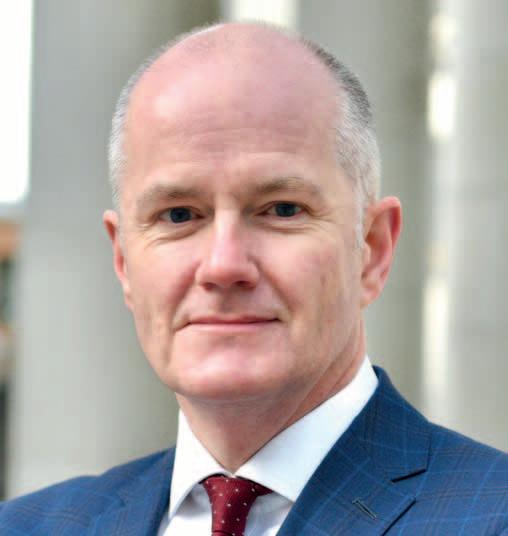
The early months of 2025 will be critical when our Executive decides how we are to fund Northern Ireland’s medium to long-term infrastructure needs.
While the draft Programme for Government (PfG) commitment to provide more social, affordable, and sustainable housing was welcomed –alongside the publication of the Housing Supply Strategy – we at the CEF firmly believe that how to decide to sustainably fund our water and wastewater system is itself more than worthy of being a tenth priority, underpinning and enabling the other nine.
Only with that top-level political commitment do we then believe the Executive could properly and jointly consider the matter of underfunding, that has been largely responsible for a 60–year low of housing completions.
Without such commitment, we believe the Executive’s Investment Strategy (ISNI) will fail to outline a sustainable, realistic path towards delivering the huge uplift in investment into NI Water, that is recognised as necessary.
The new ISNI is expected to detail a spend of £26 billion of capital infrastructure over 10 years. A large number, but, in reality, simply maintaining current levels of capital spending – (at circa £2 billion, the same in cash terms as some 17 years ago in 2007/08) – plus RRI borrowing and a modest inflationary uplift, multiplied by 10. To underpin and enable the social, environment, and economic potential of this place, we must fund NI Water’s PC21 and PC27 business
An Investment Strategy which simply prioritises spending within acknowledged insufficient limits, without exploring options for increasing the investment pool would undermine the aspirations of any future Programme for Government, writes Mark Spence, Chief Executive of the Construction Employers Federation (CEF).
plan requirements (£600m+ per annum) in a committed and sustained fashion.
In that context, we believe significant additional capital funding could be achieved by moving to a mutual/cooperative/public corporation model which, along with other reforms to the existing sub-optimal governance model, would enable NI Water to borrow to their full potential.
CEF fully supports the Northern Ireland Audit Office’s (NIAO) call for the Department for Infrastructure to establish a “comprehensive review of alternative arrangements, led by suitably qualified experts”. The NIAO’s 2024 report, conducted independent of government, would encompass revisiting the 2007 Hillyard report that suggested NI Water could secure a long-term income stream (hypothecated or otherwise) via the rates bill (without, in their scenario, increasing people’s bills), as opposed to a separate, domestic household water charge.
Short of this type of fundamental reform, we fail to see how the Executive can, sustainably, fund NI Water’s needs, and, given how crucial that investment is to wider economic activity such as homebuilding and inward investment, how it can deliver the Programme for Government.
Unless it seriously addresses the needs of infrastructure, the ISNI risks no longer being a ‘strategic investment’ plan but, rather, a ‘tactical spending’ plan. A strategic plan would explore the options for increasing the investment pool to meet needs, rather than focus simply on
how to prioritise spend within acknowledged insufficient limits. Such a lack of ambition in the ISNI will not sit easily with the positive aspirations of the Programme for Government.
Hence in this first half of 2025, we call upon the Executive’s 2025/26 Budget to include provision to commence the review of the funding and governance of NI Water that the NIAO recommends.
The publication of the UK Government’s Comprehensive Spending Review through to 2029 will afford the Executive the first chance in over 15 years to set a multi-year budget through the end of this Assembly mandate and beyond. Even if it were still possible for the Treasury to change the fiscal rules to allow for more borrowing, it would be foolish to believe that this, alone, will enable Northern Ireland to meet its infrastructure funding needs. This first multi-year budget must therefore deliver the findings of an independent review into NI Water’s funding and governance to enable the Executive to address the daunting infrastructure deficit that we face.
Taking steps like these requires significant political ambition and determination, however the opportunity cost of not taking these steps will be a severely diminished economic, social and environmental legacy. There is a very short window for the Executive to take the decisive action that is needed to restore the strategy to our investment plan.
























































































































































